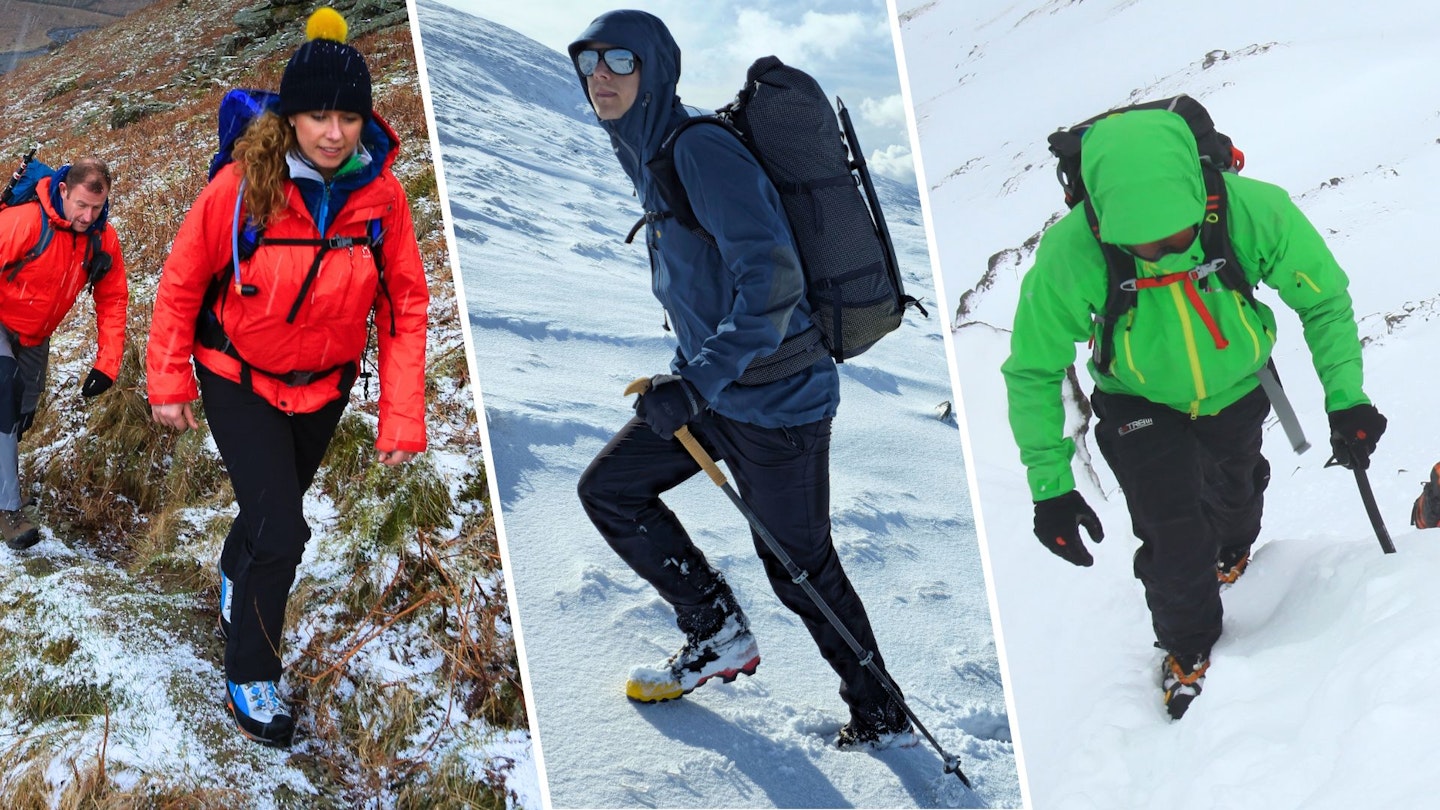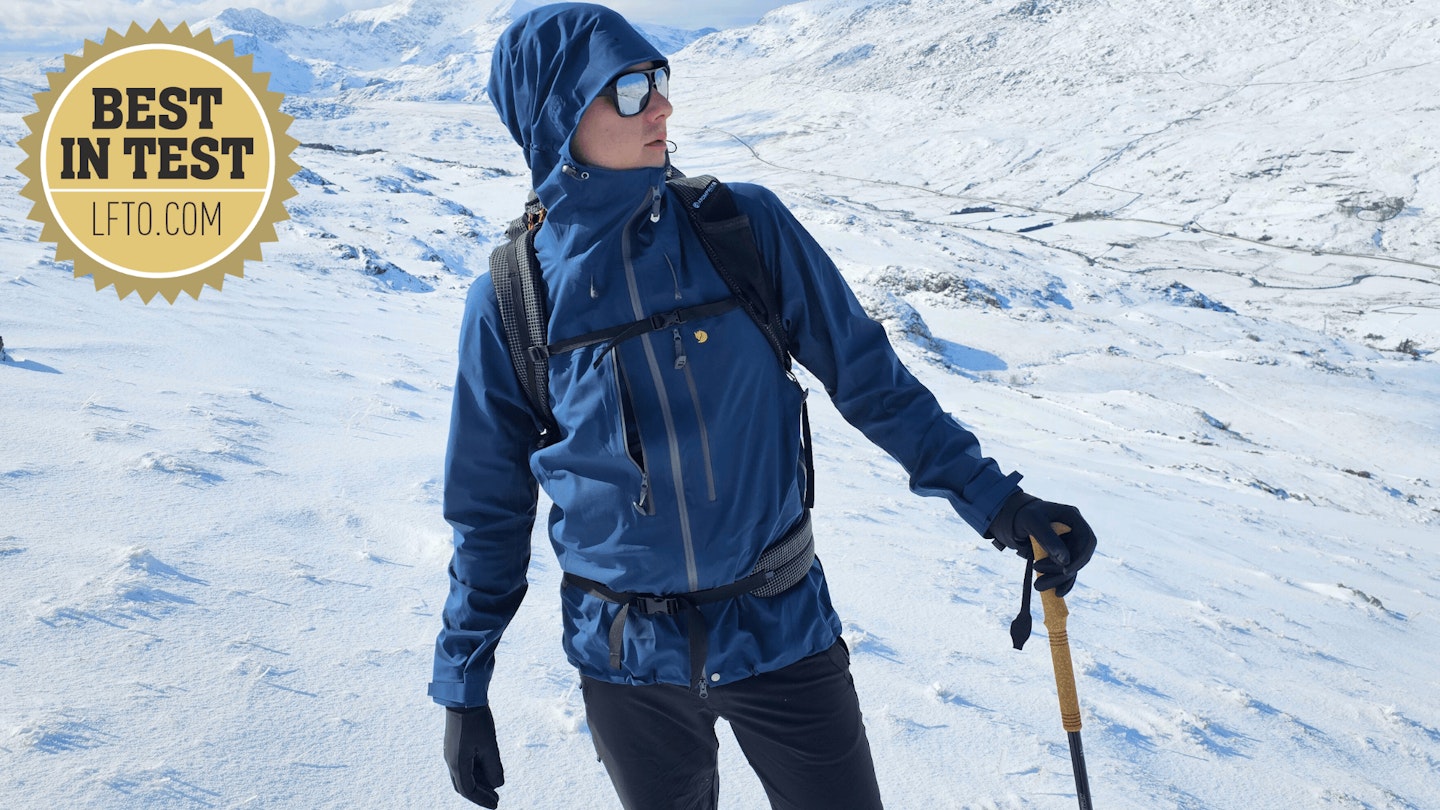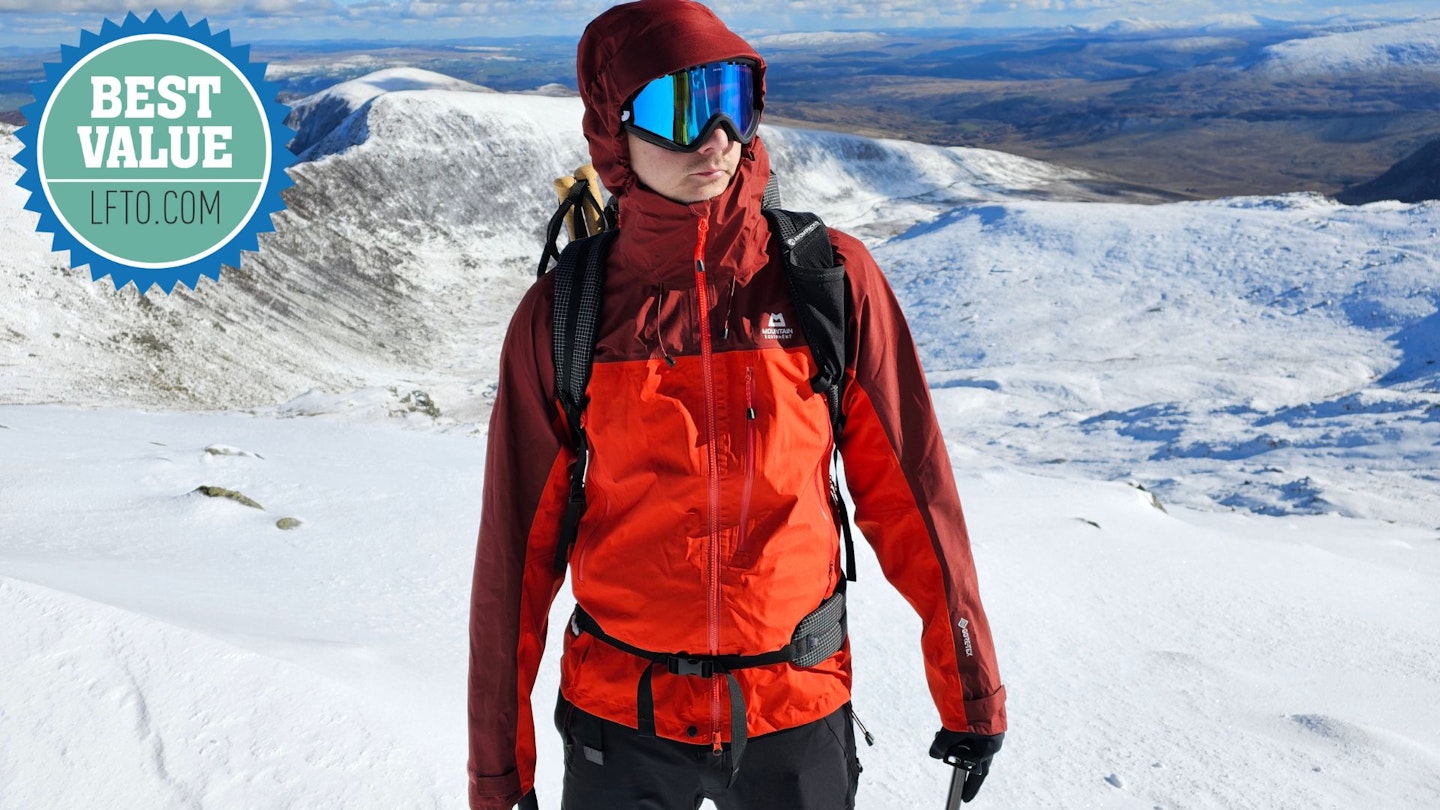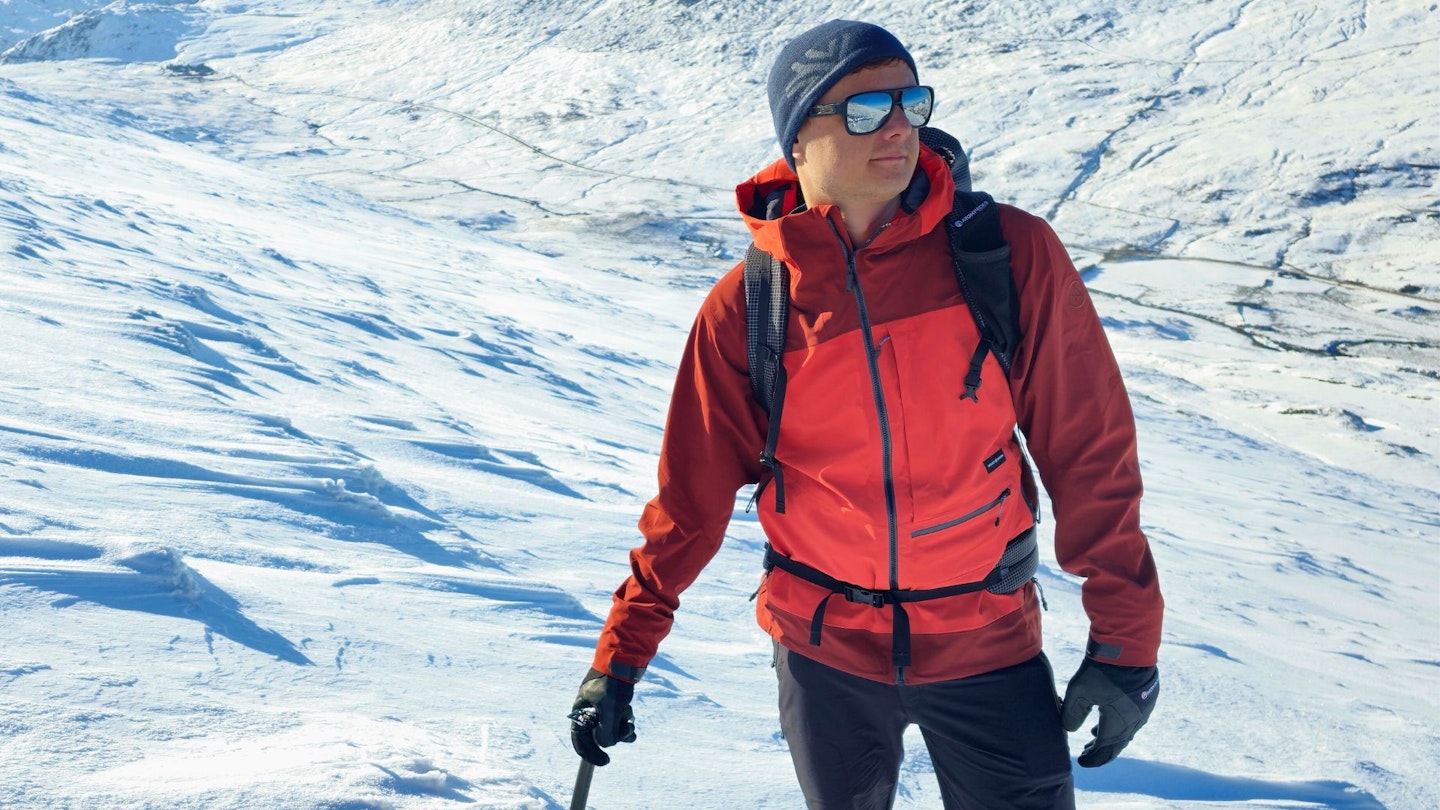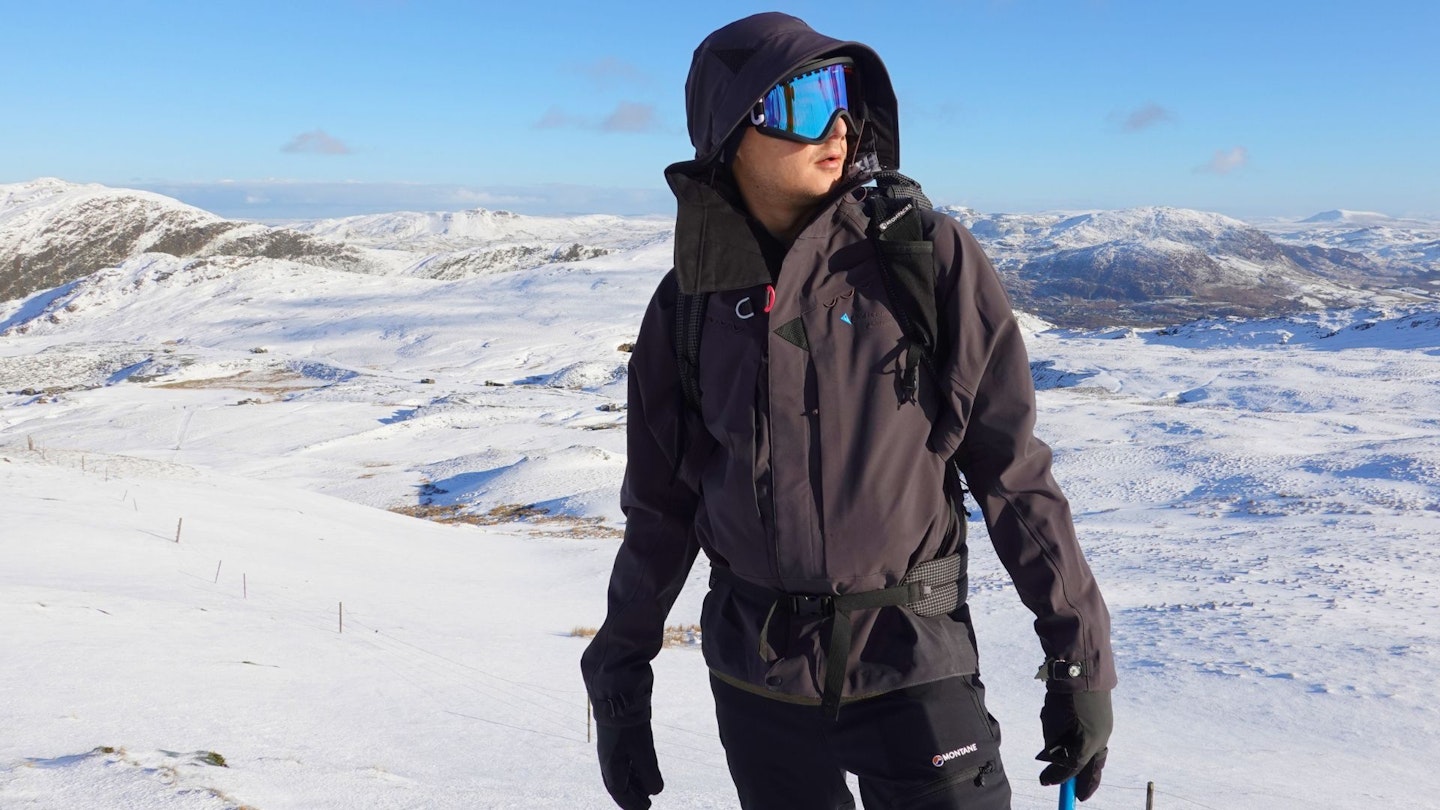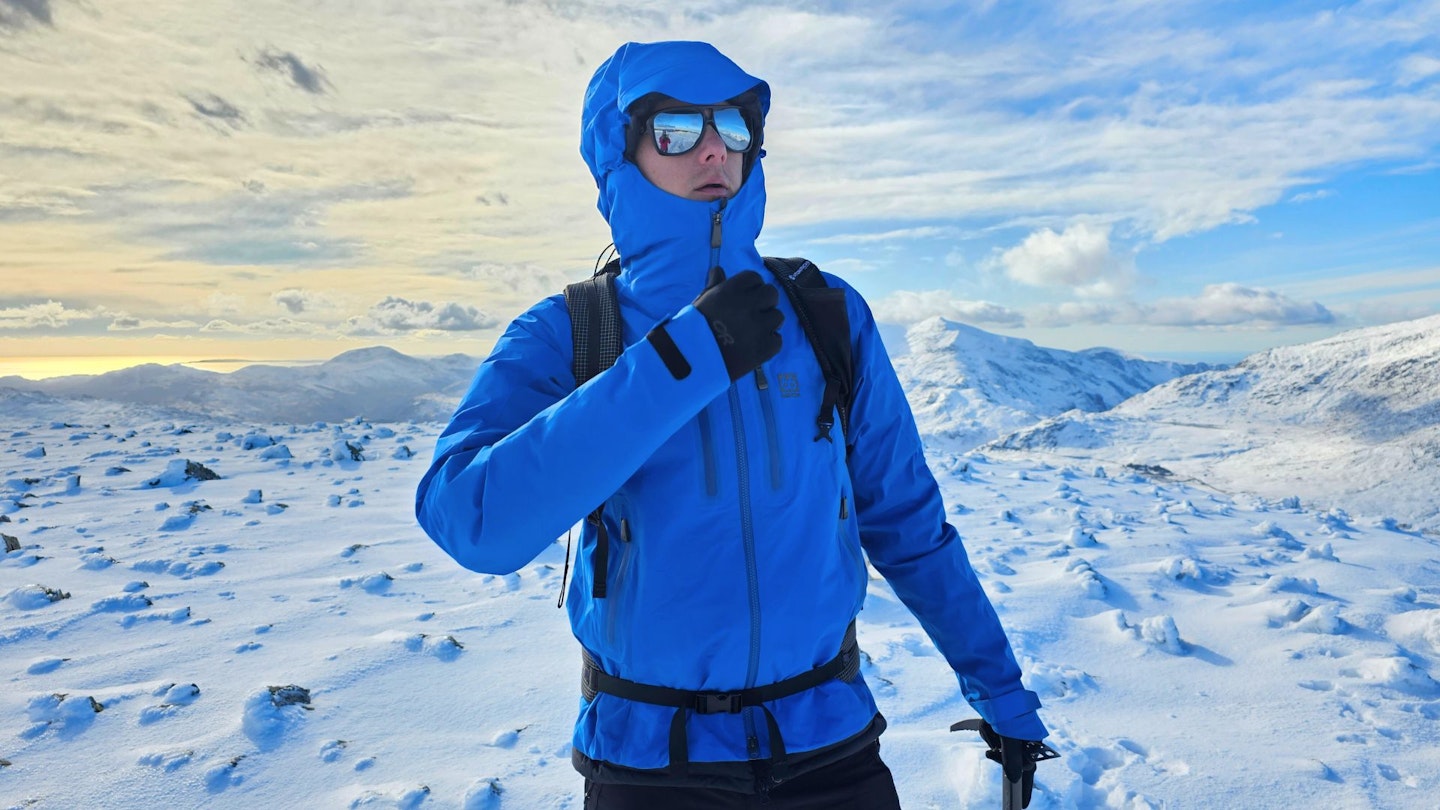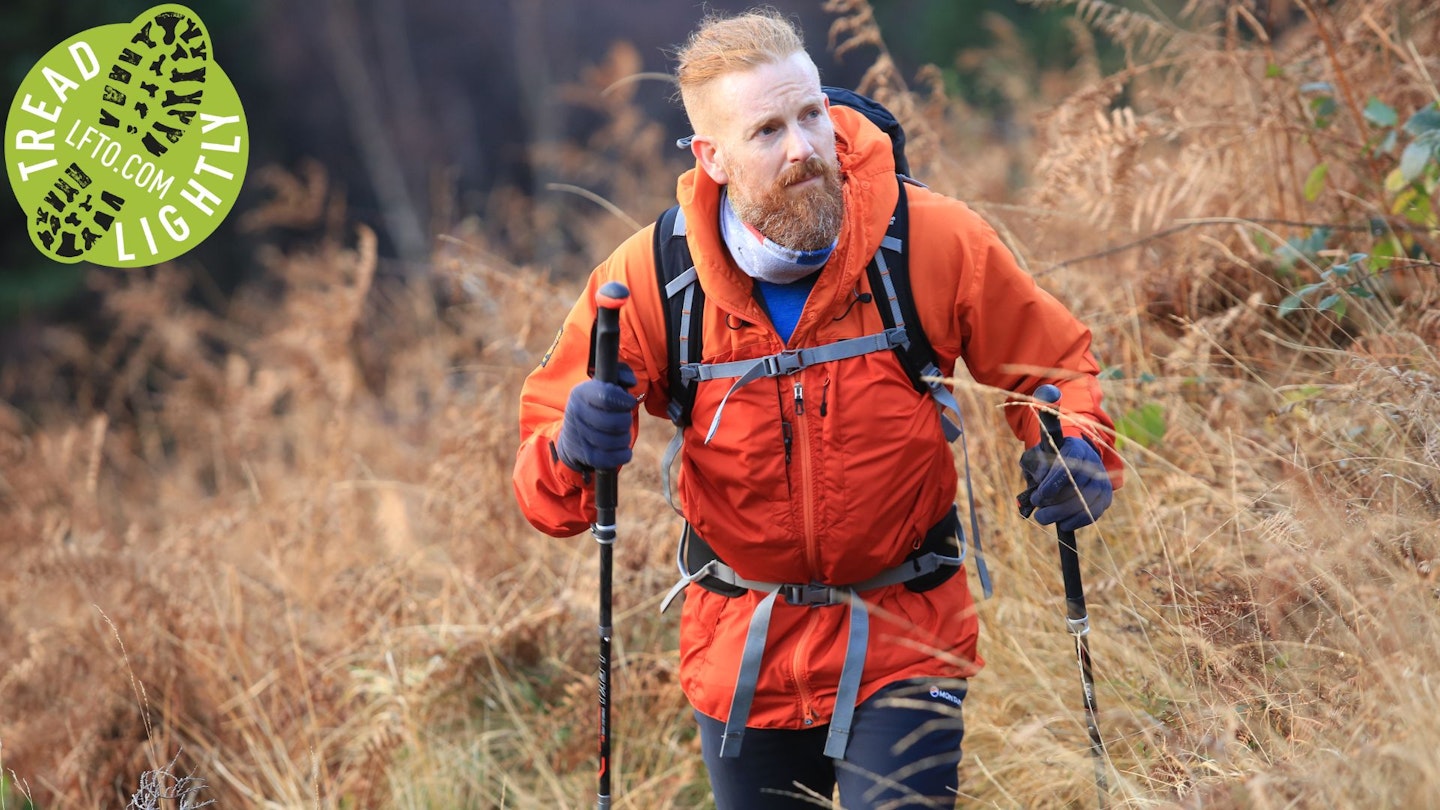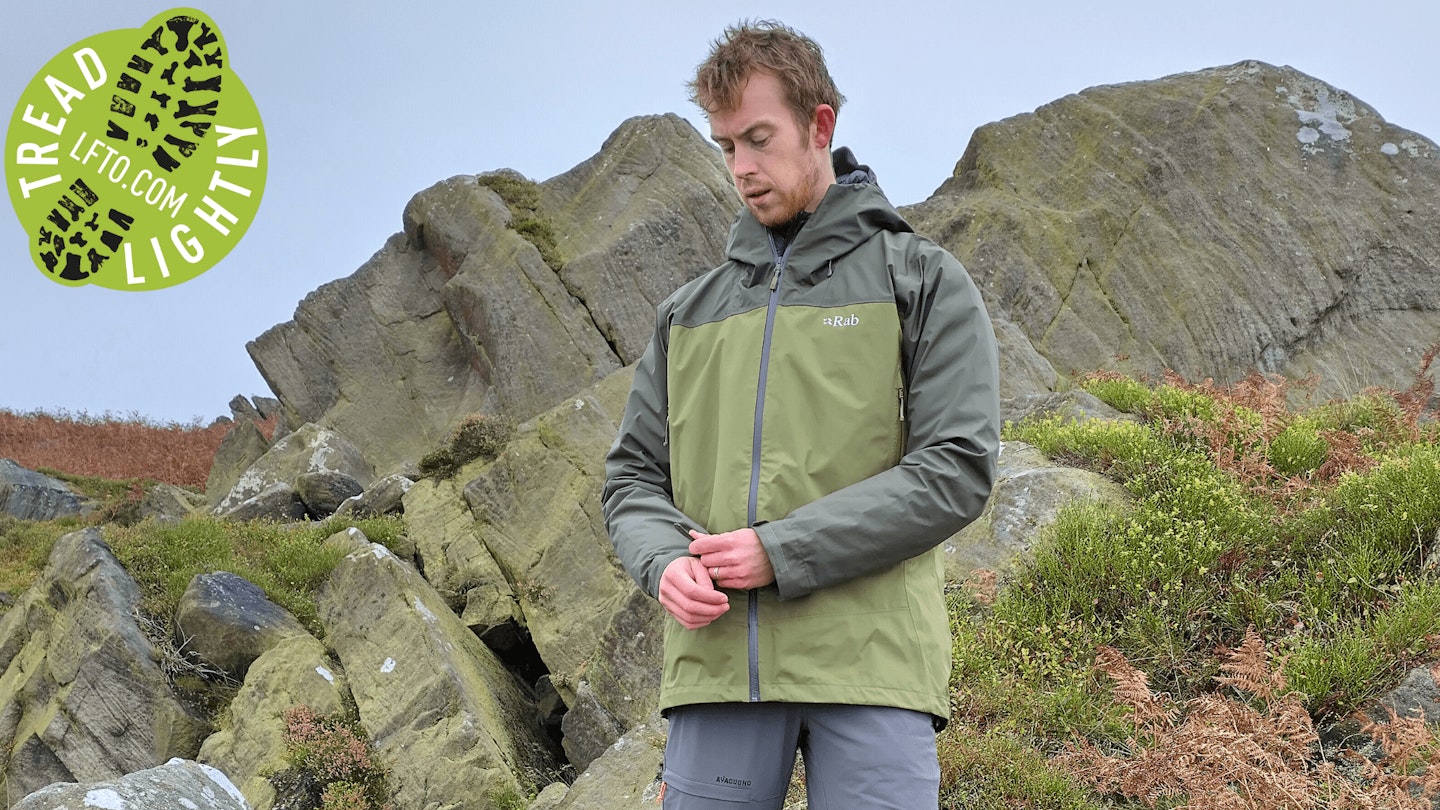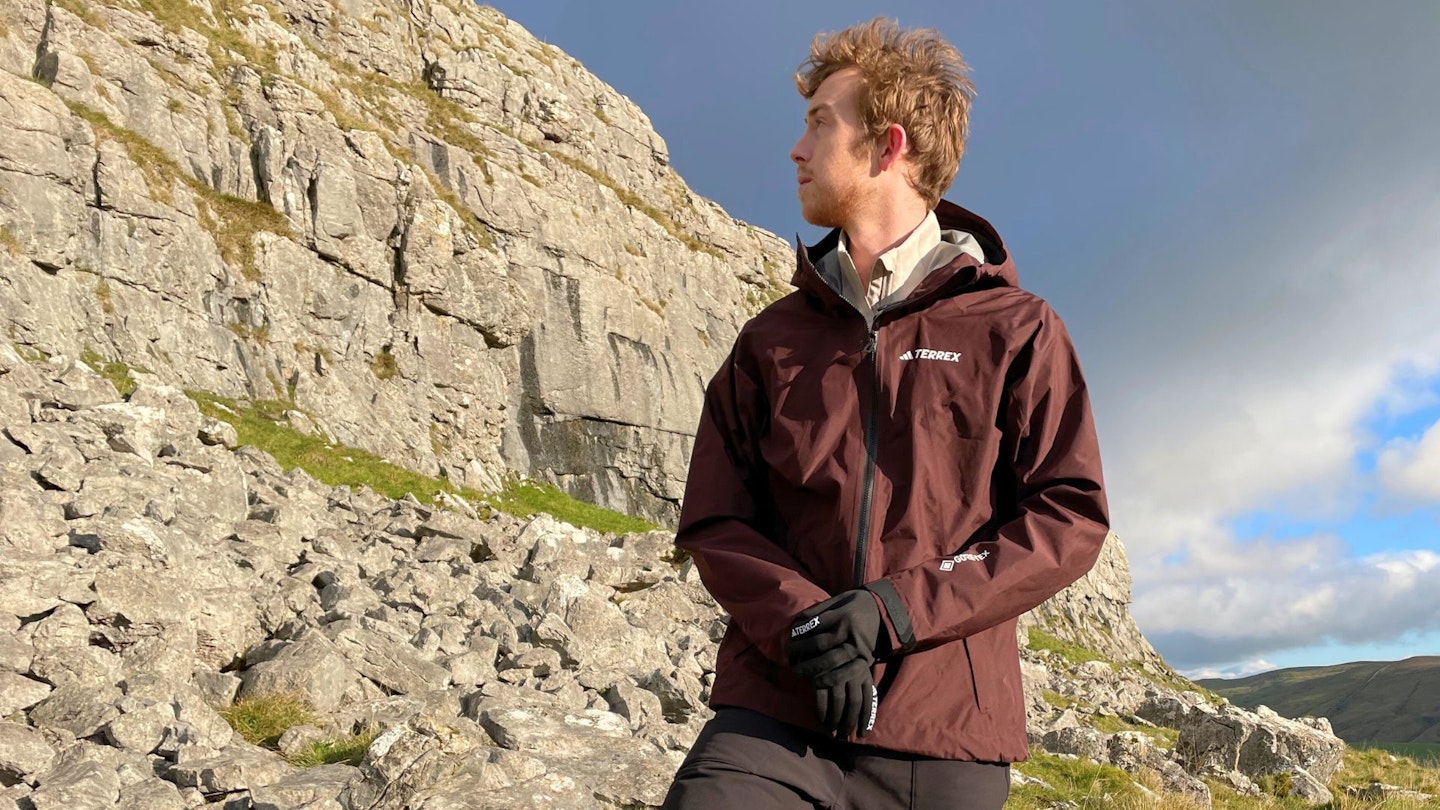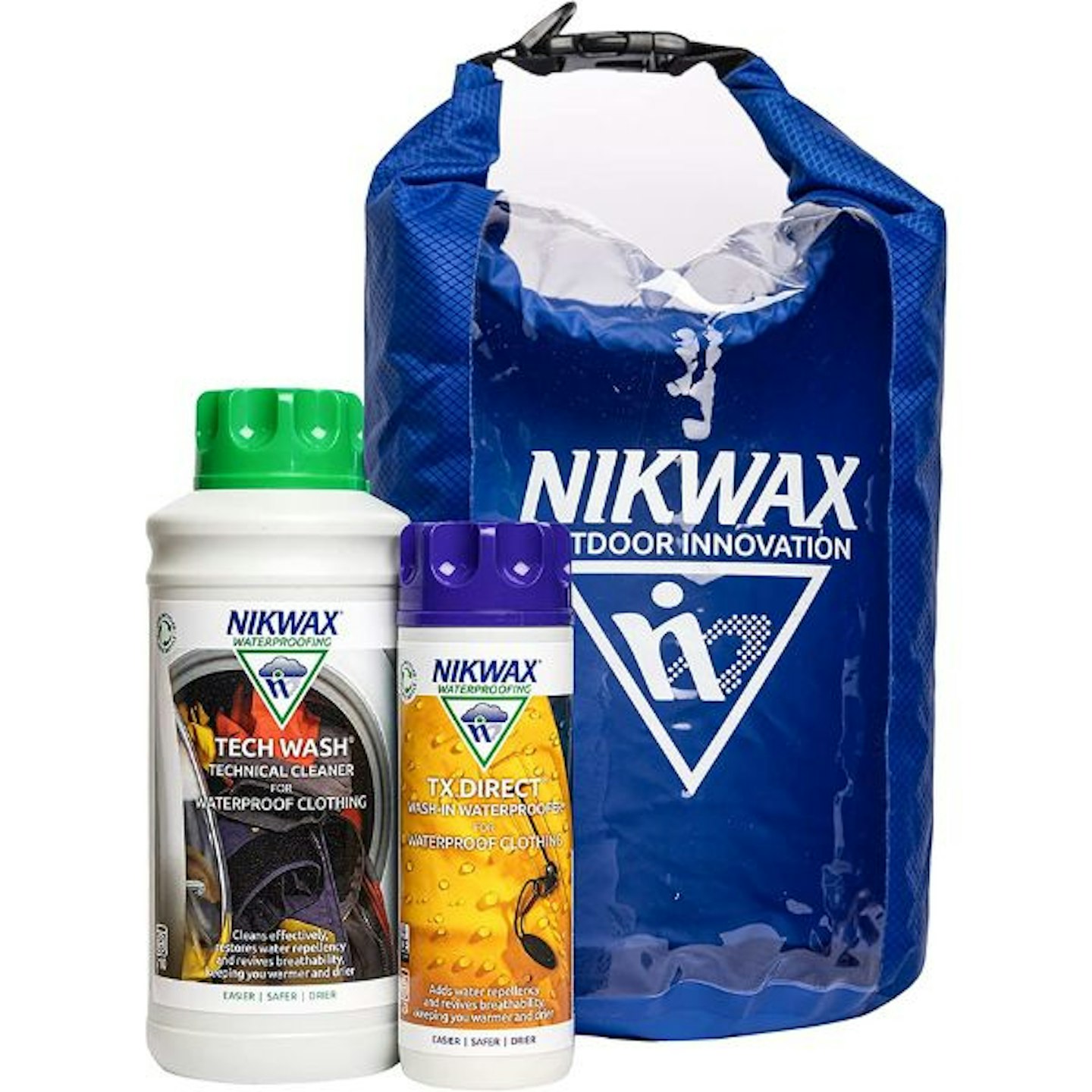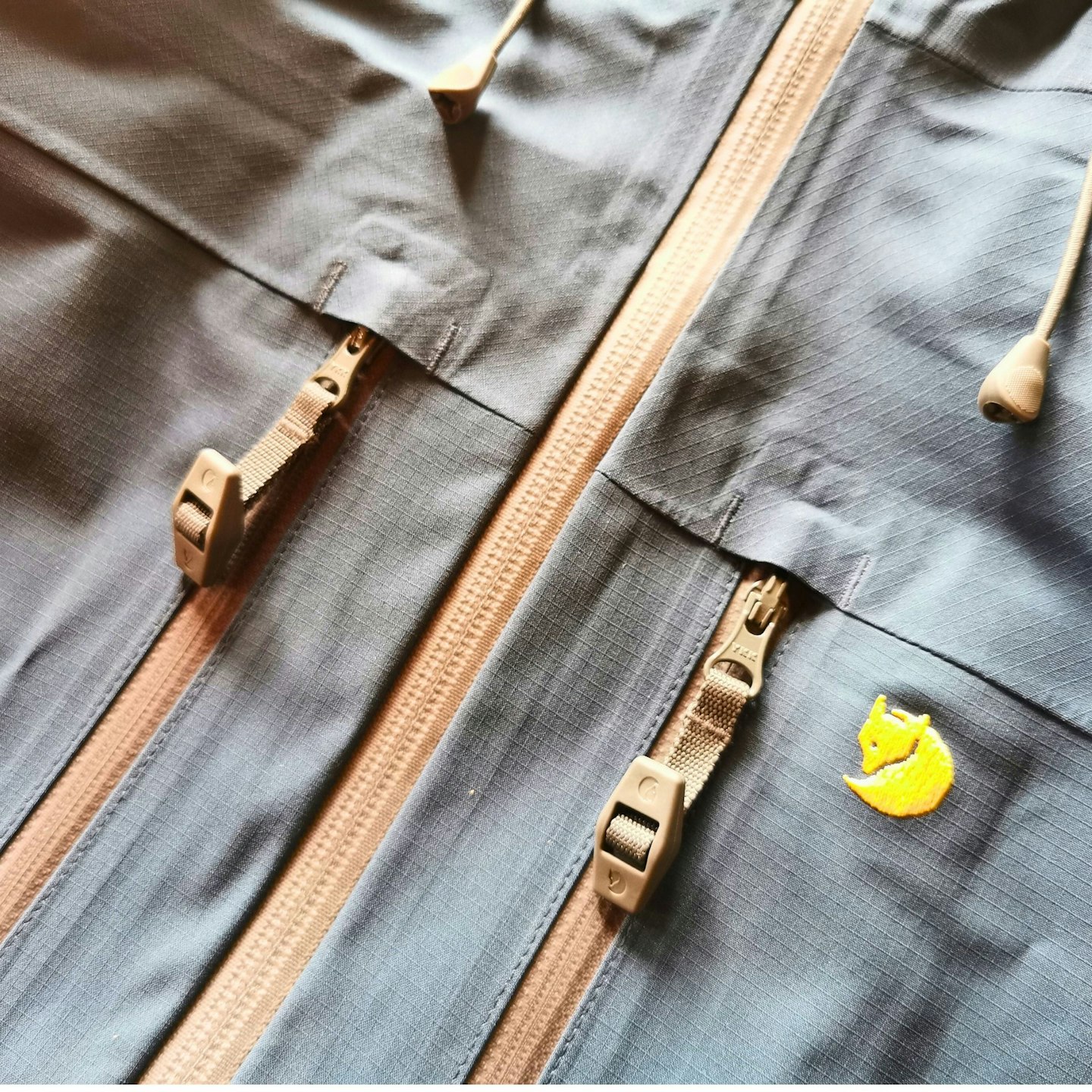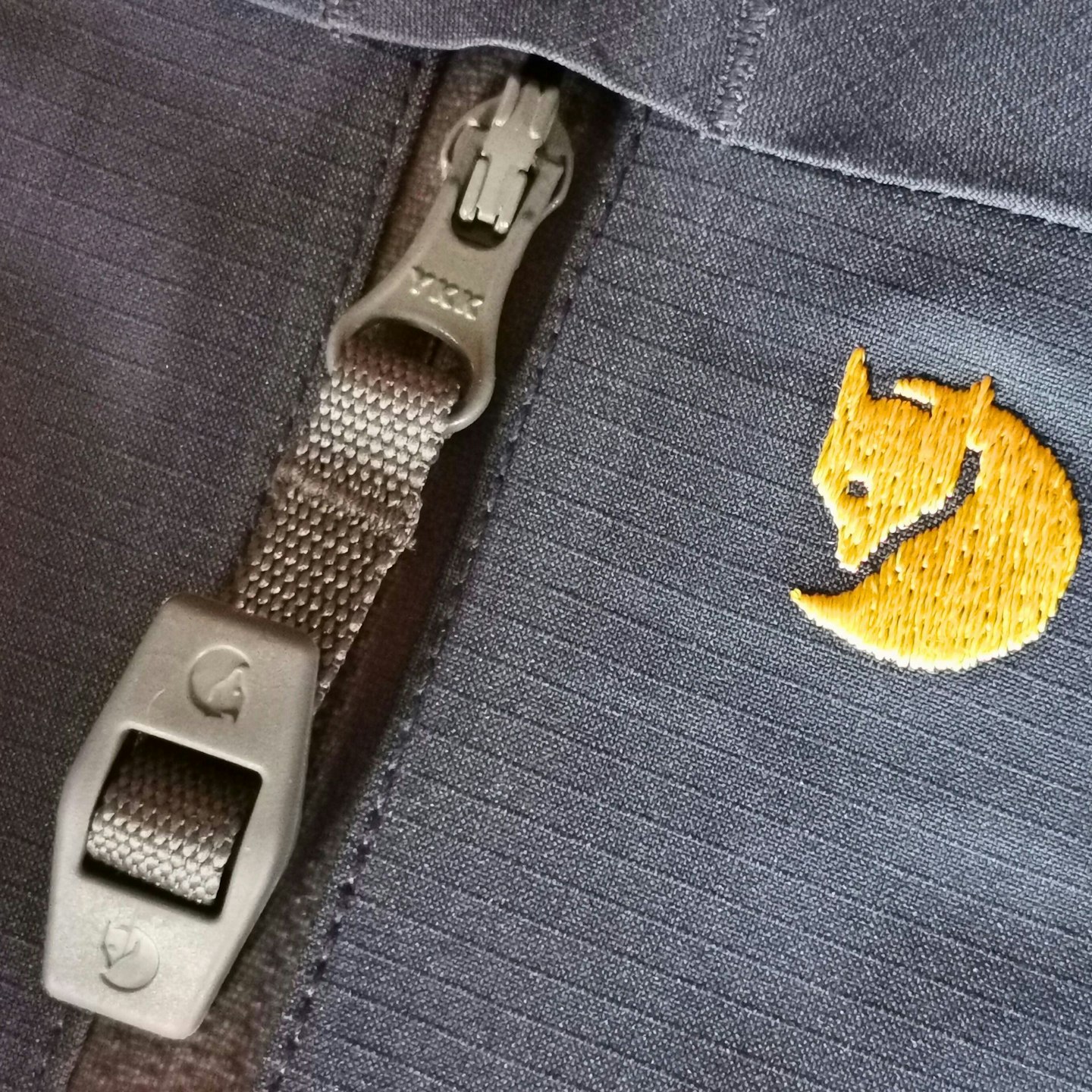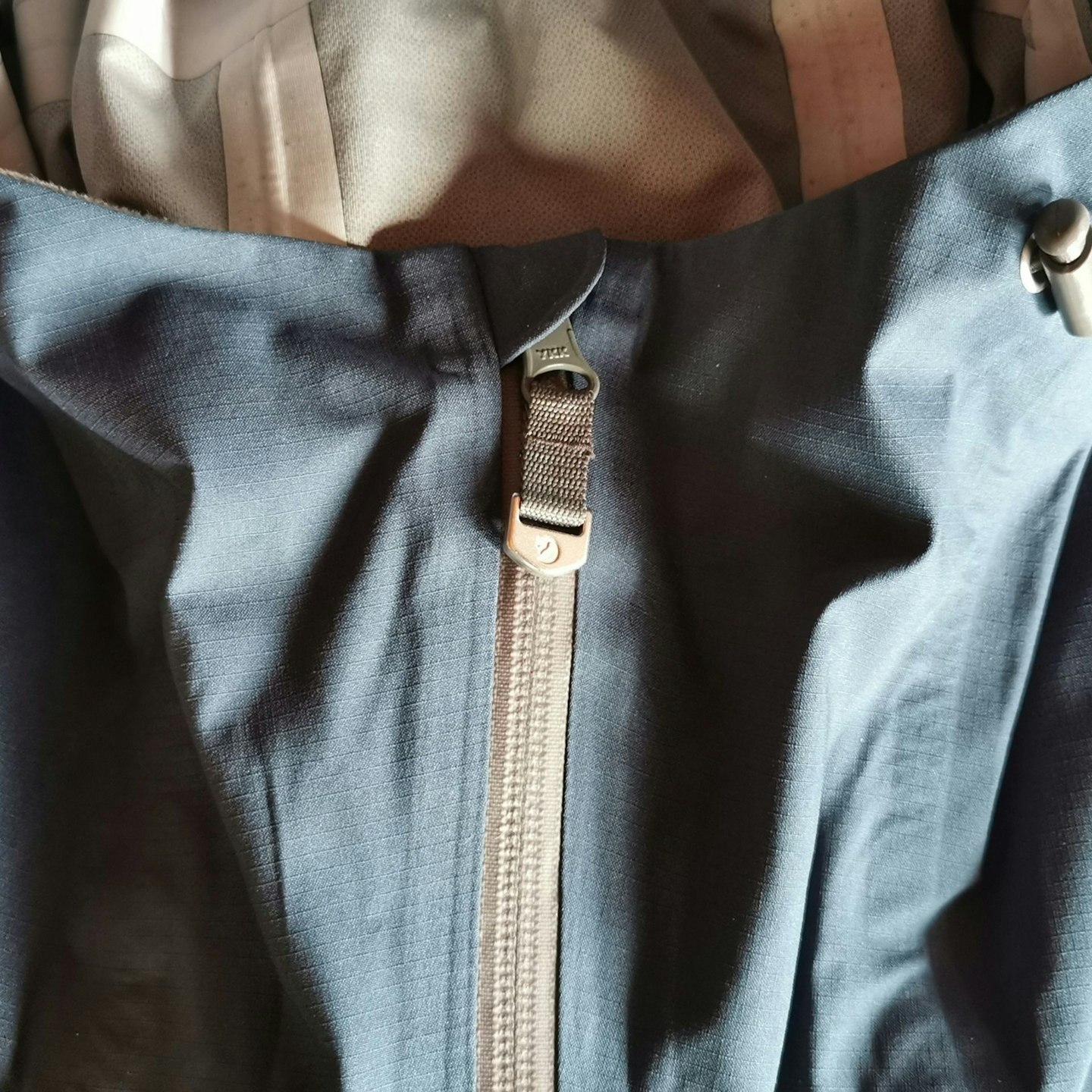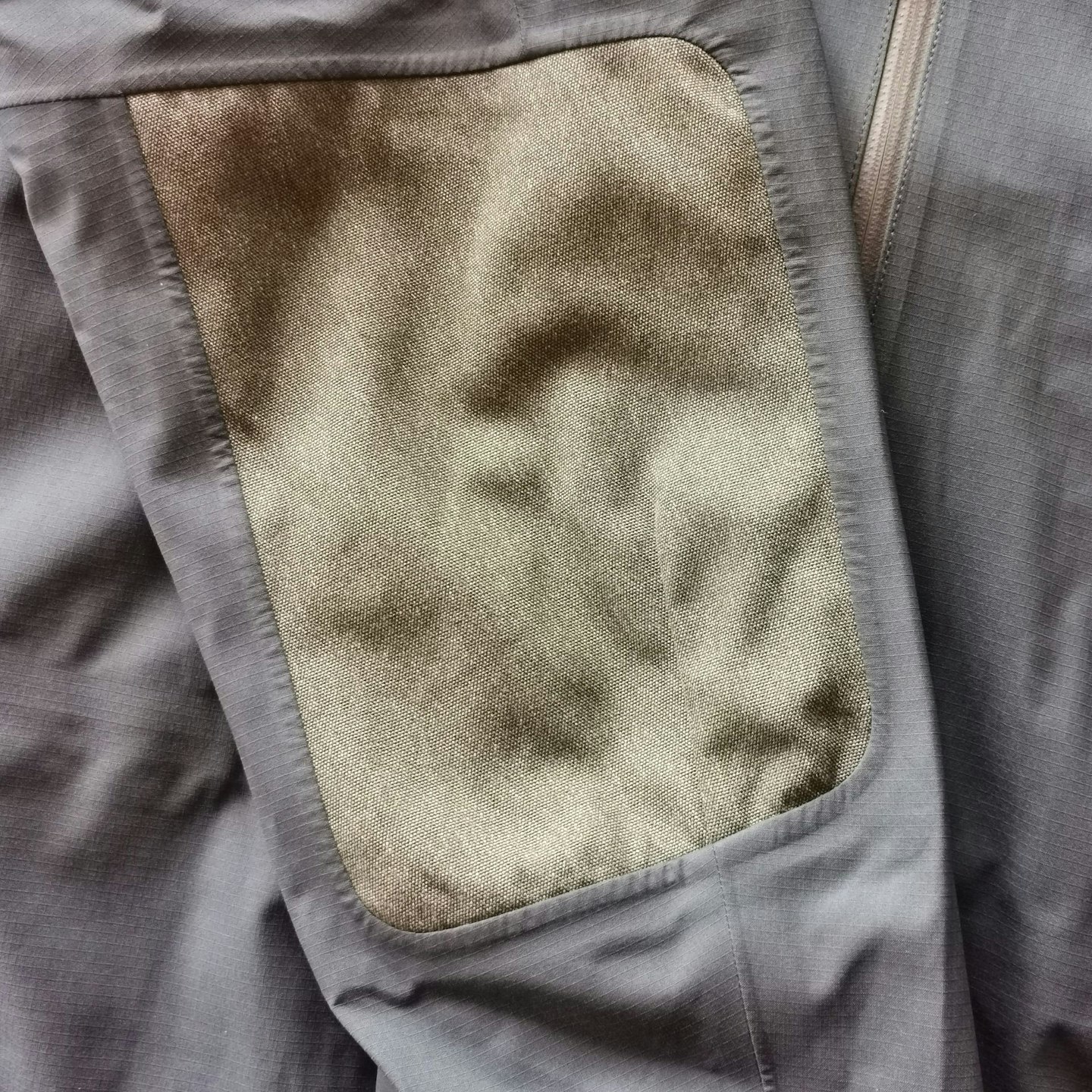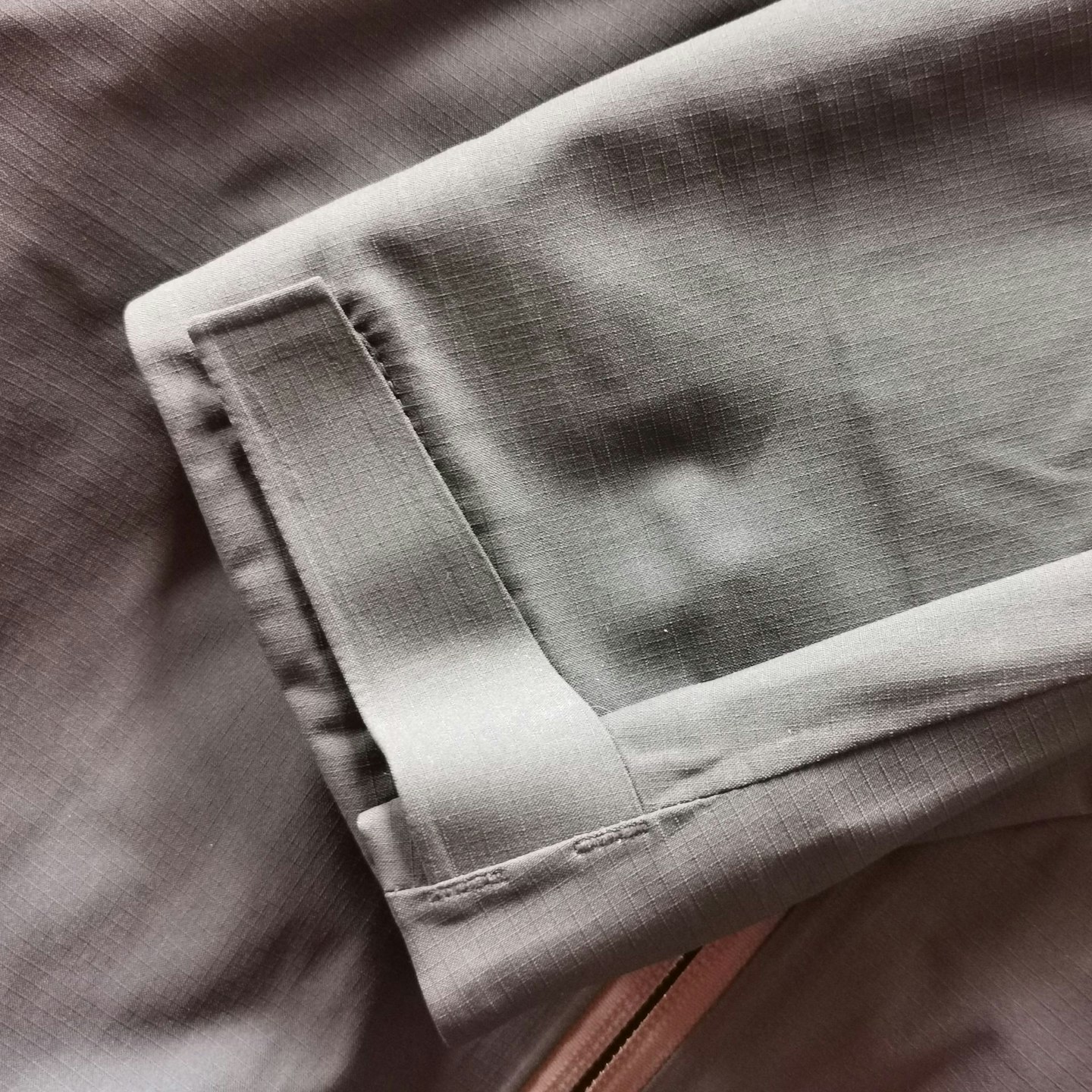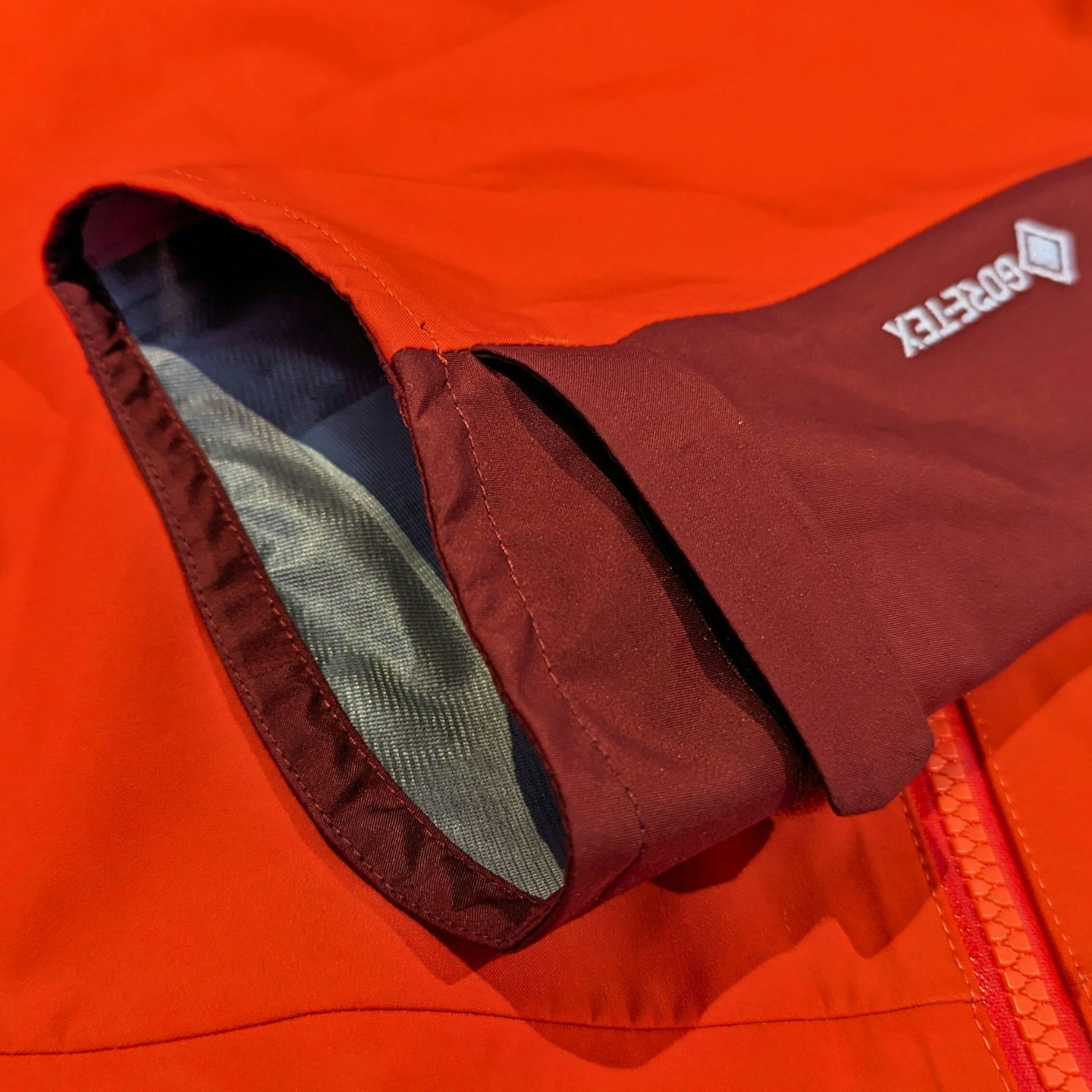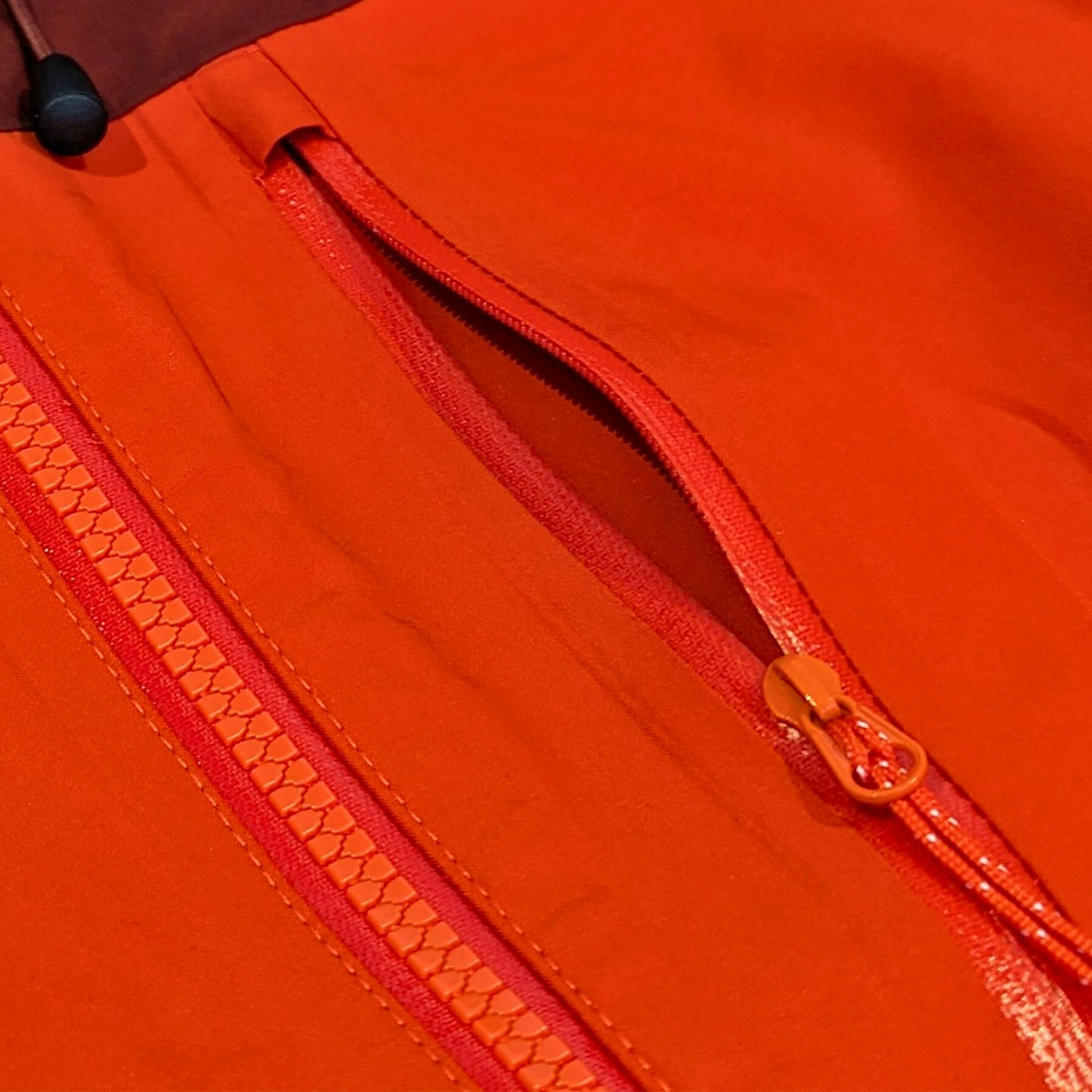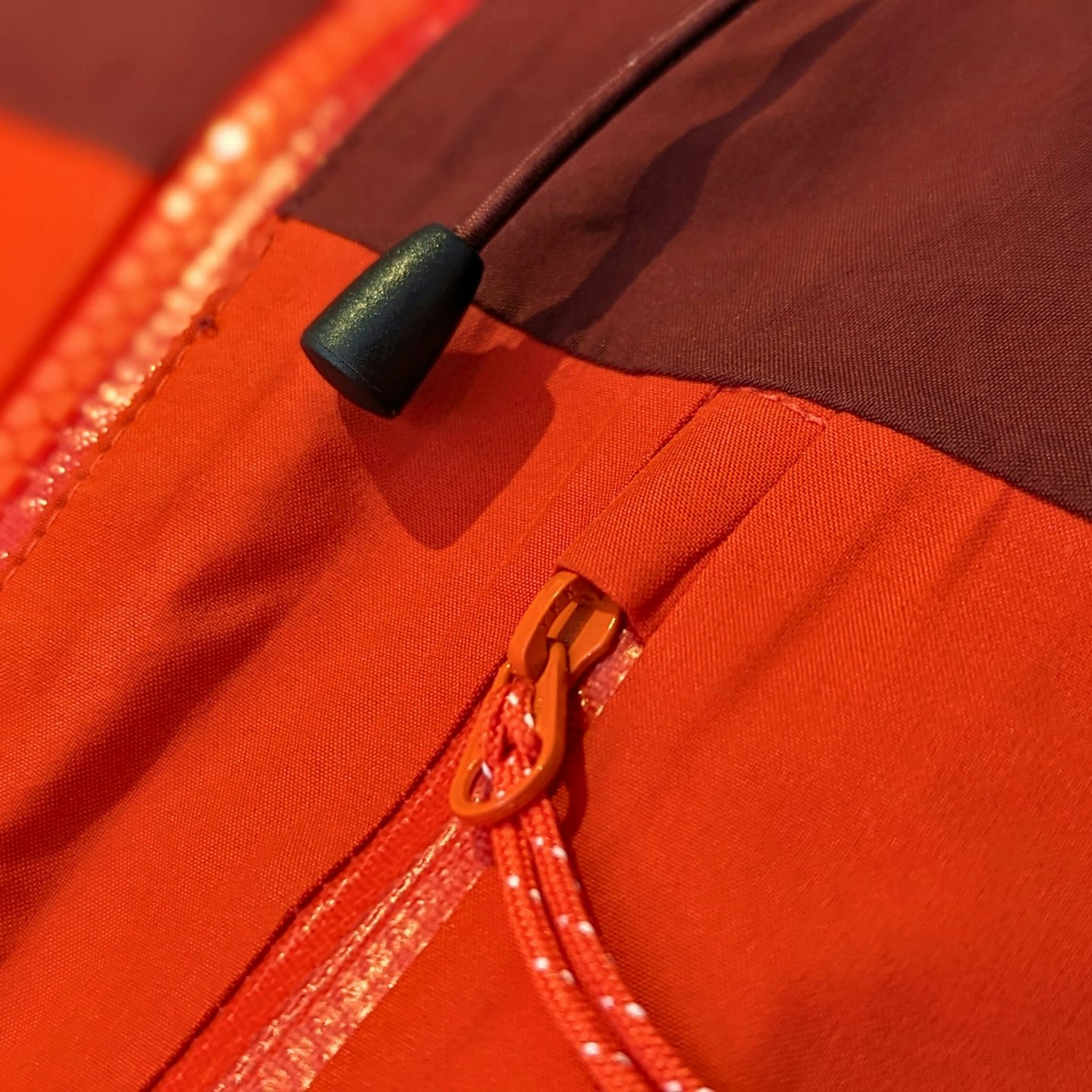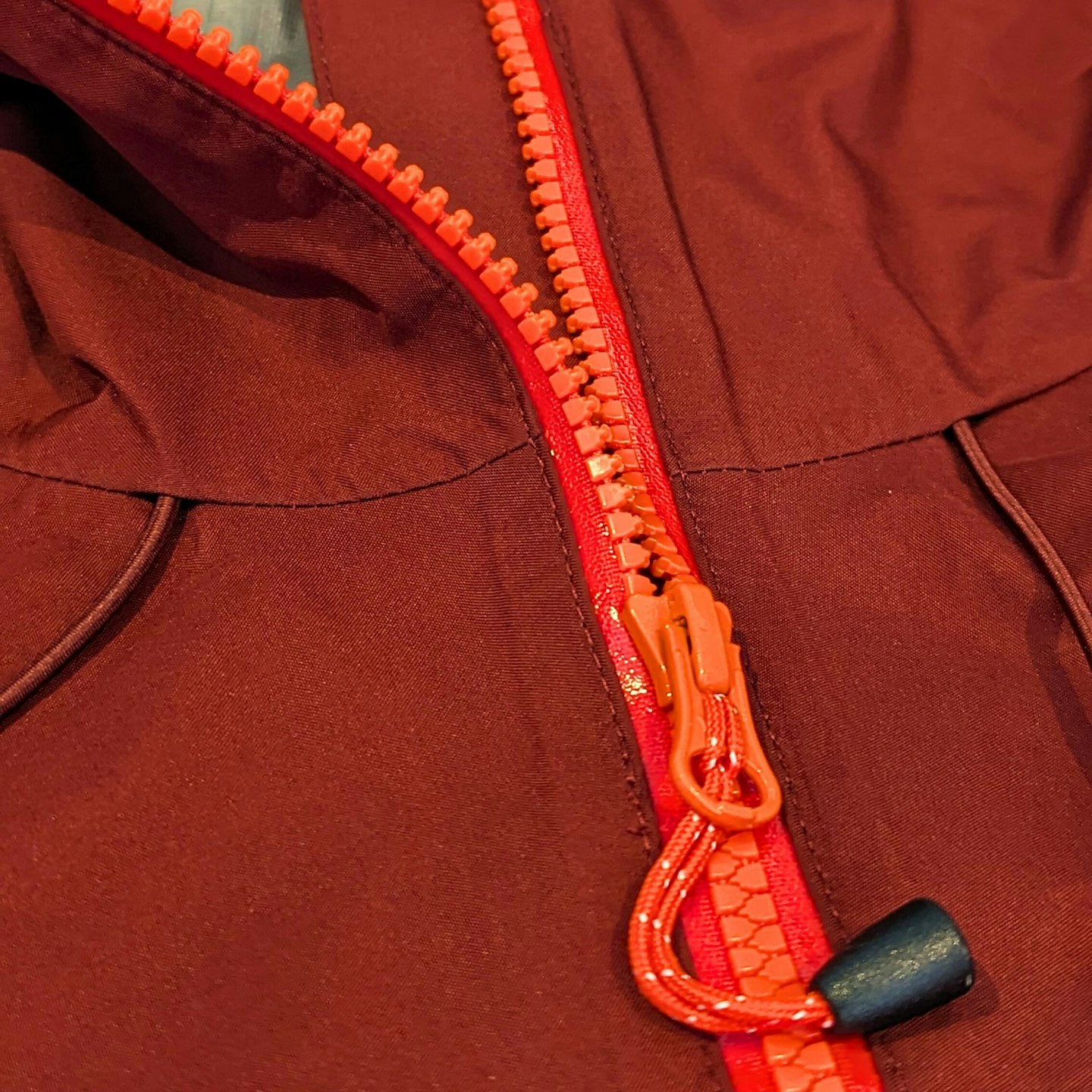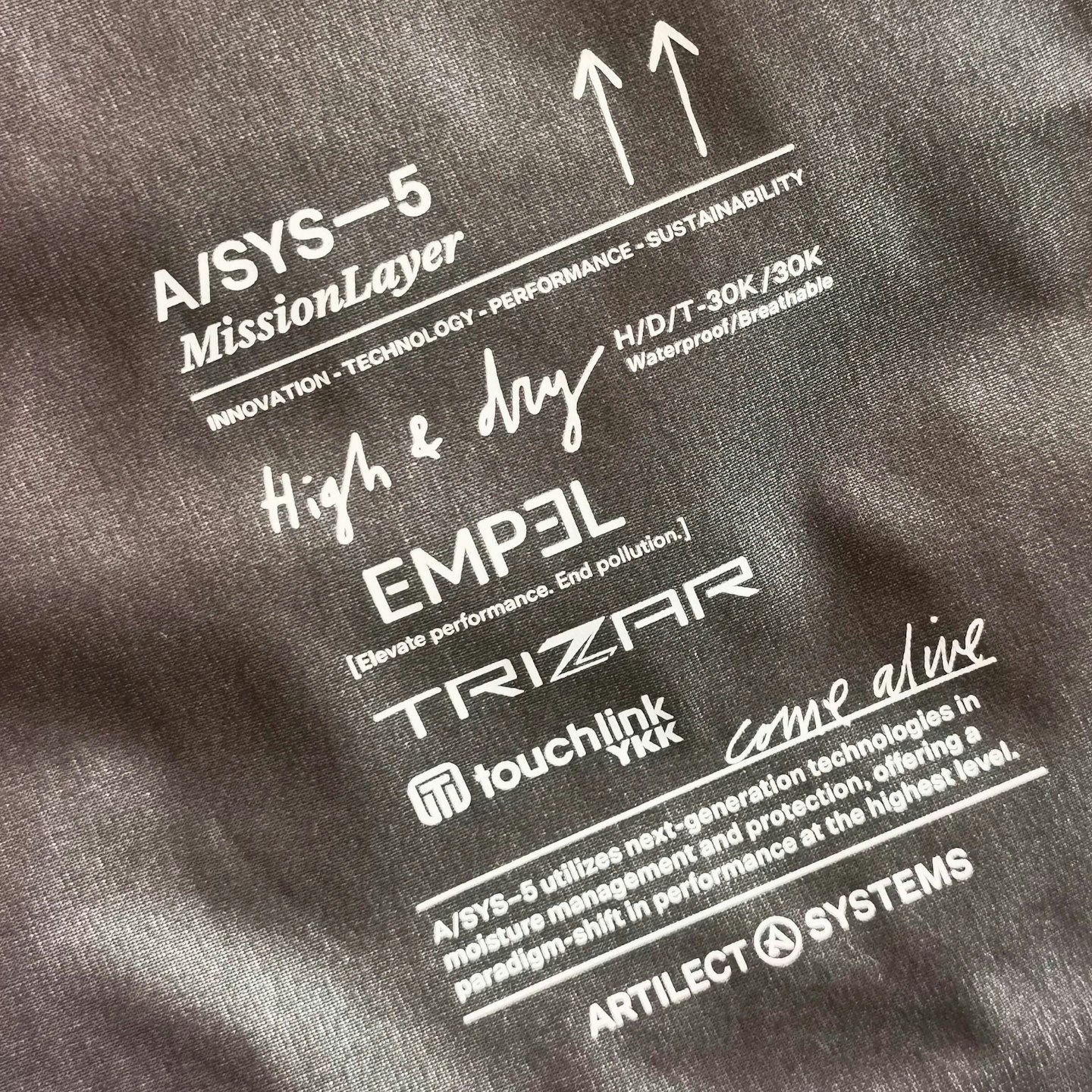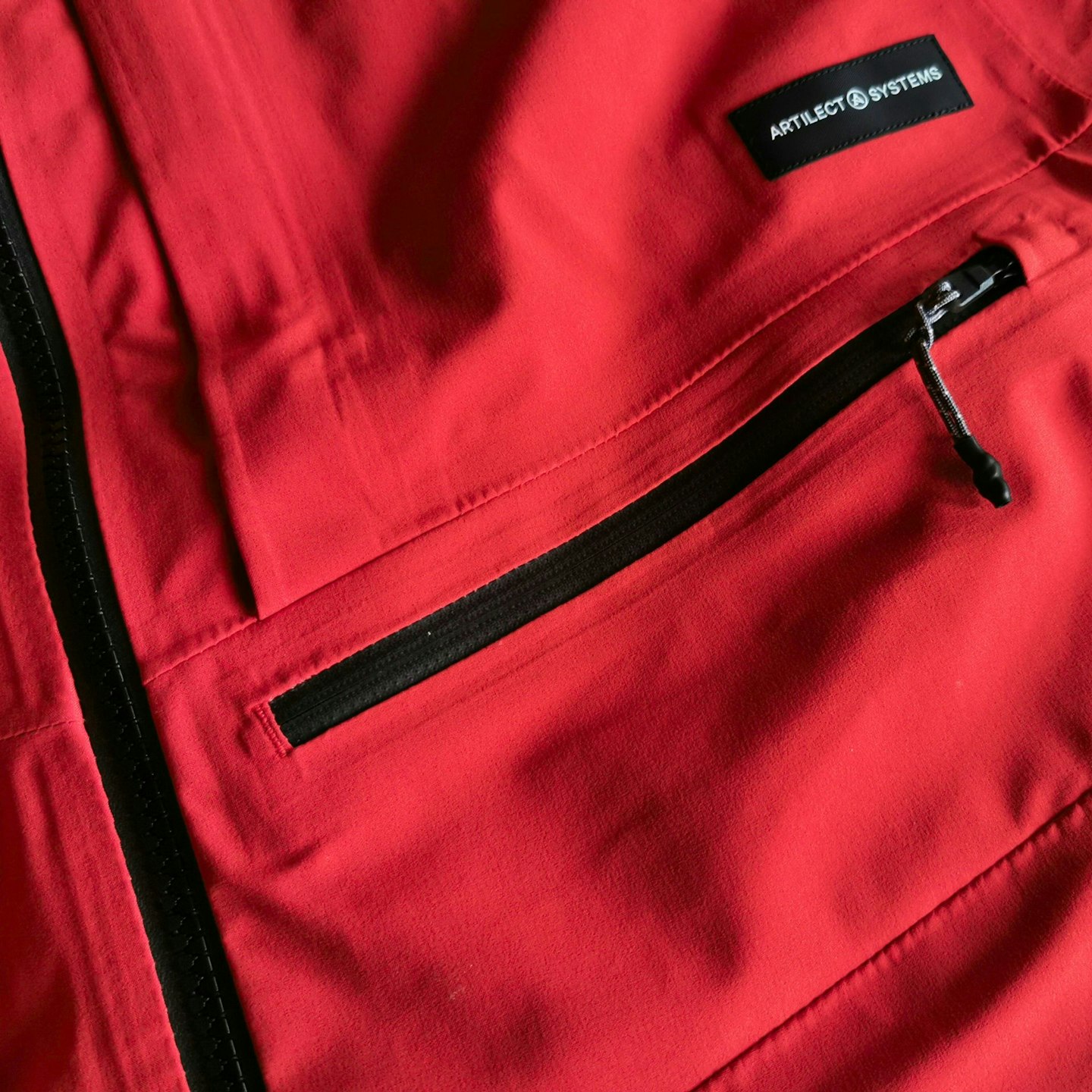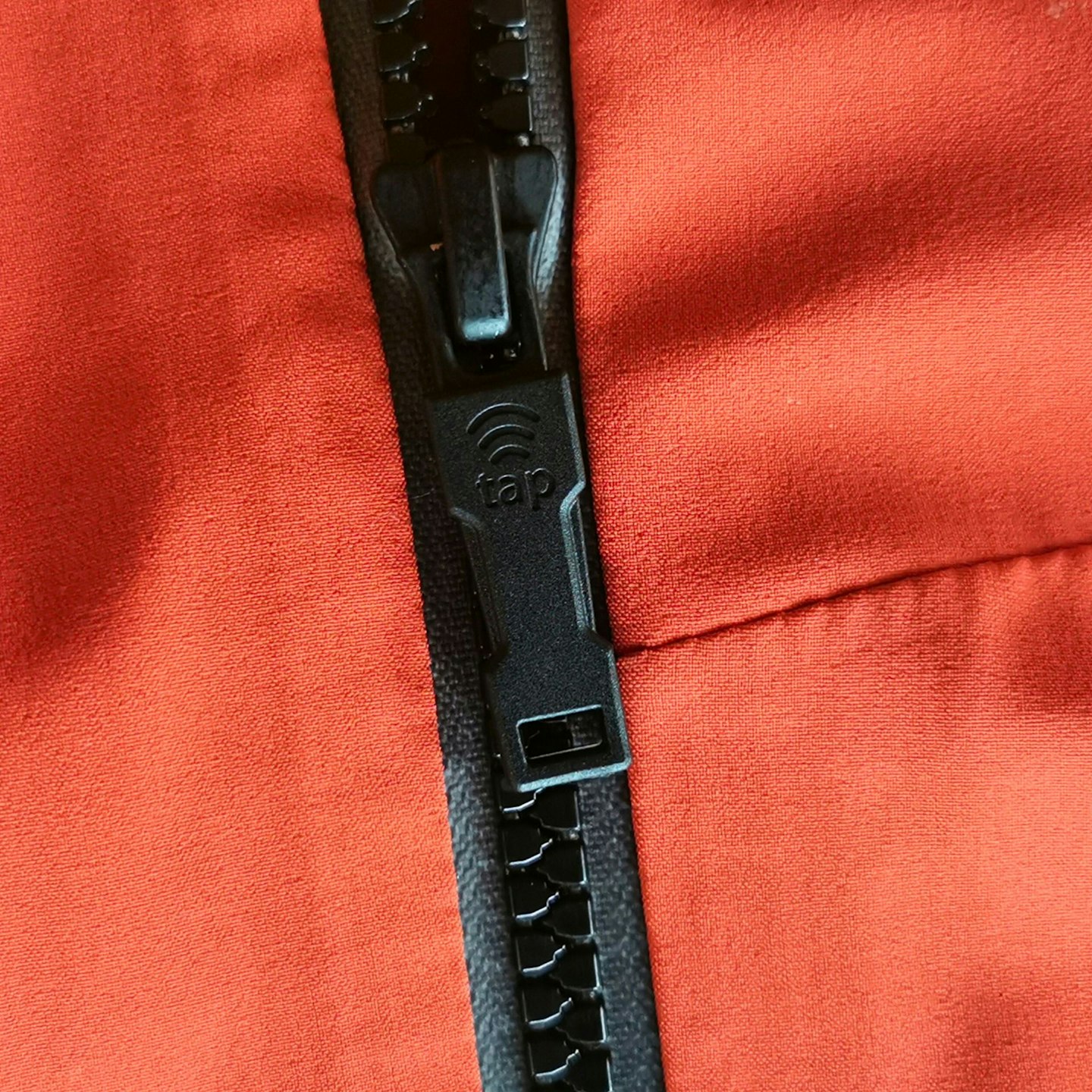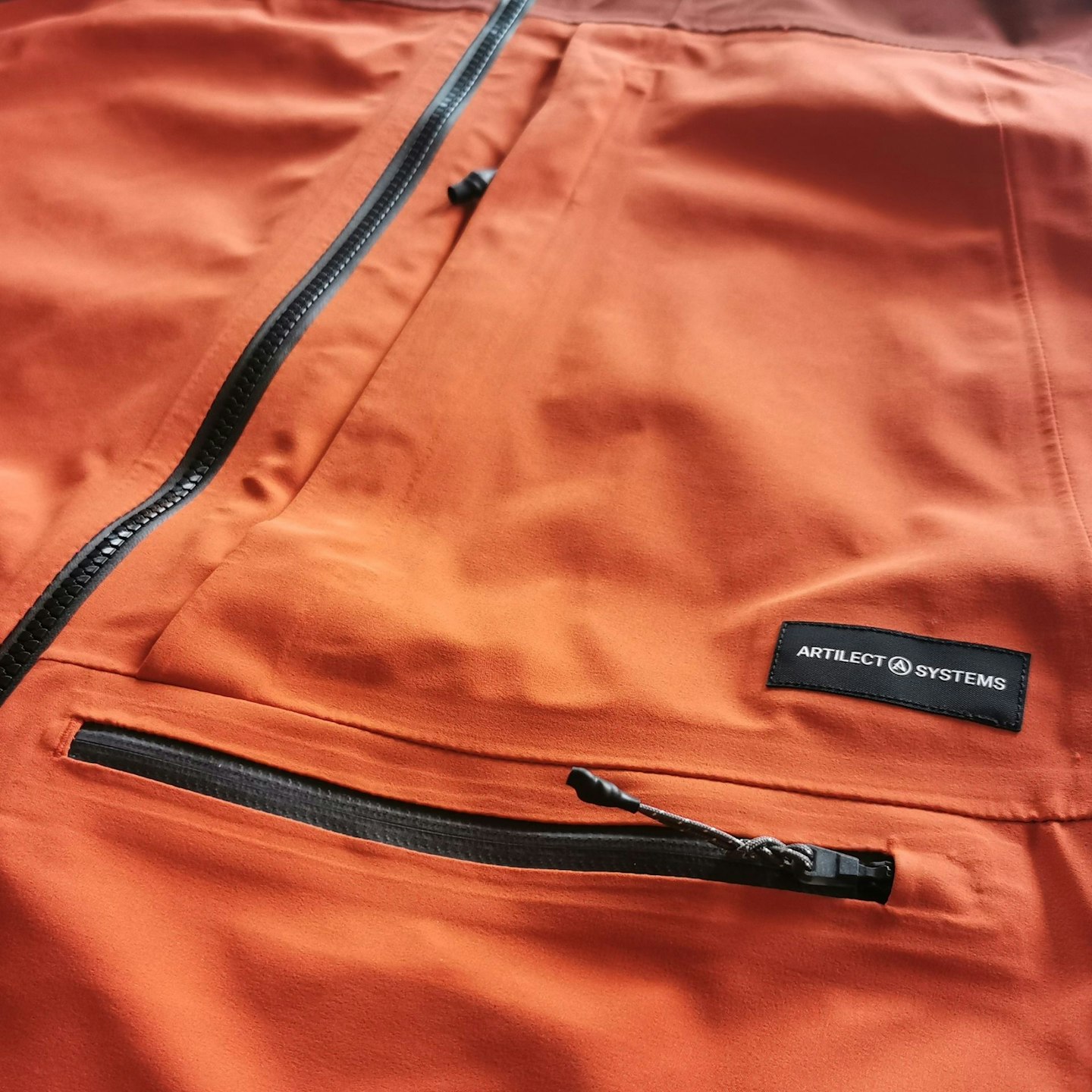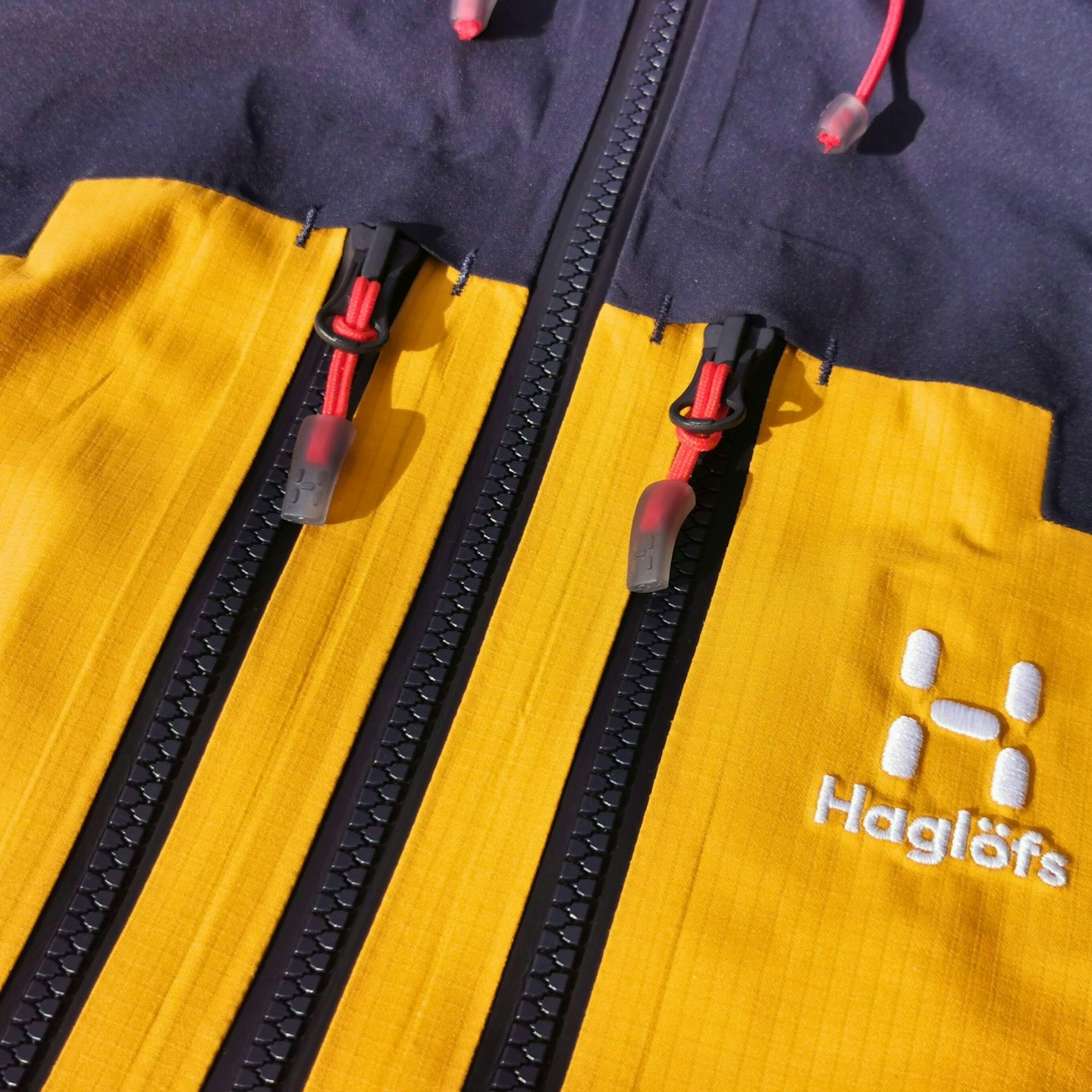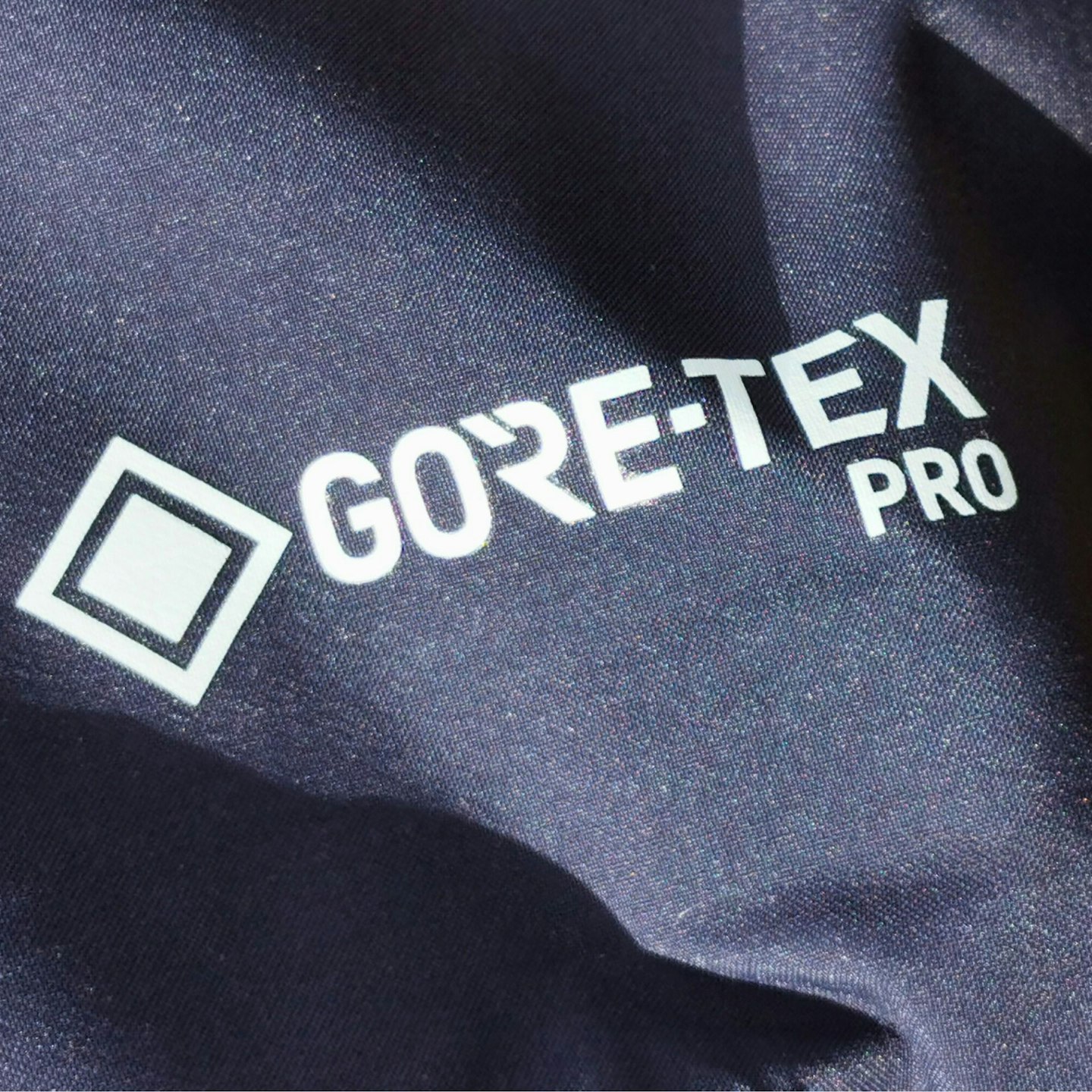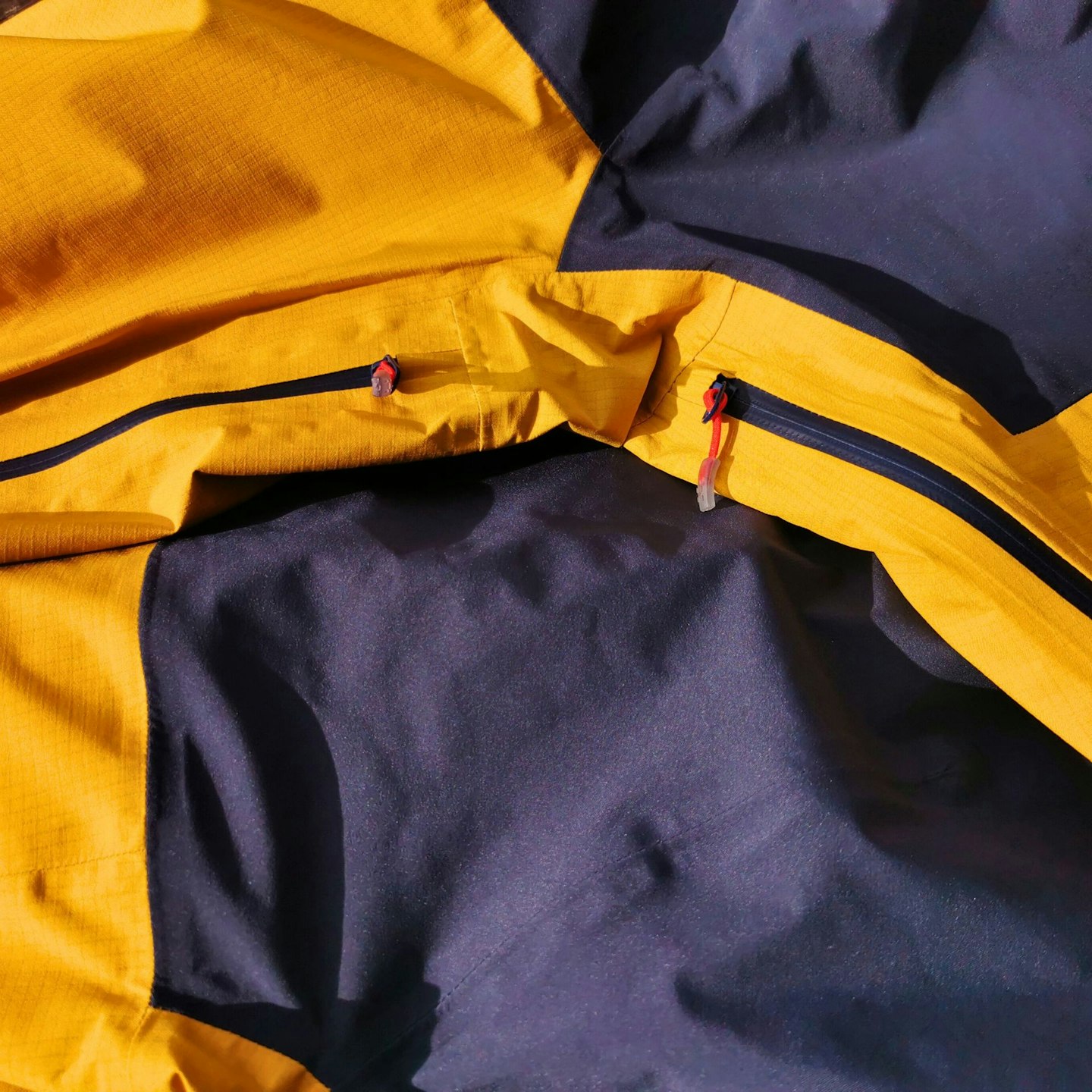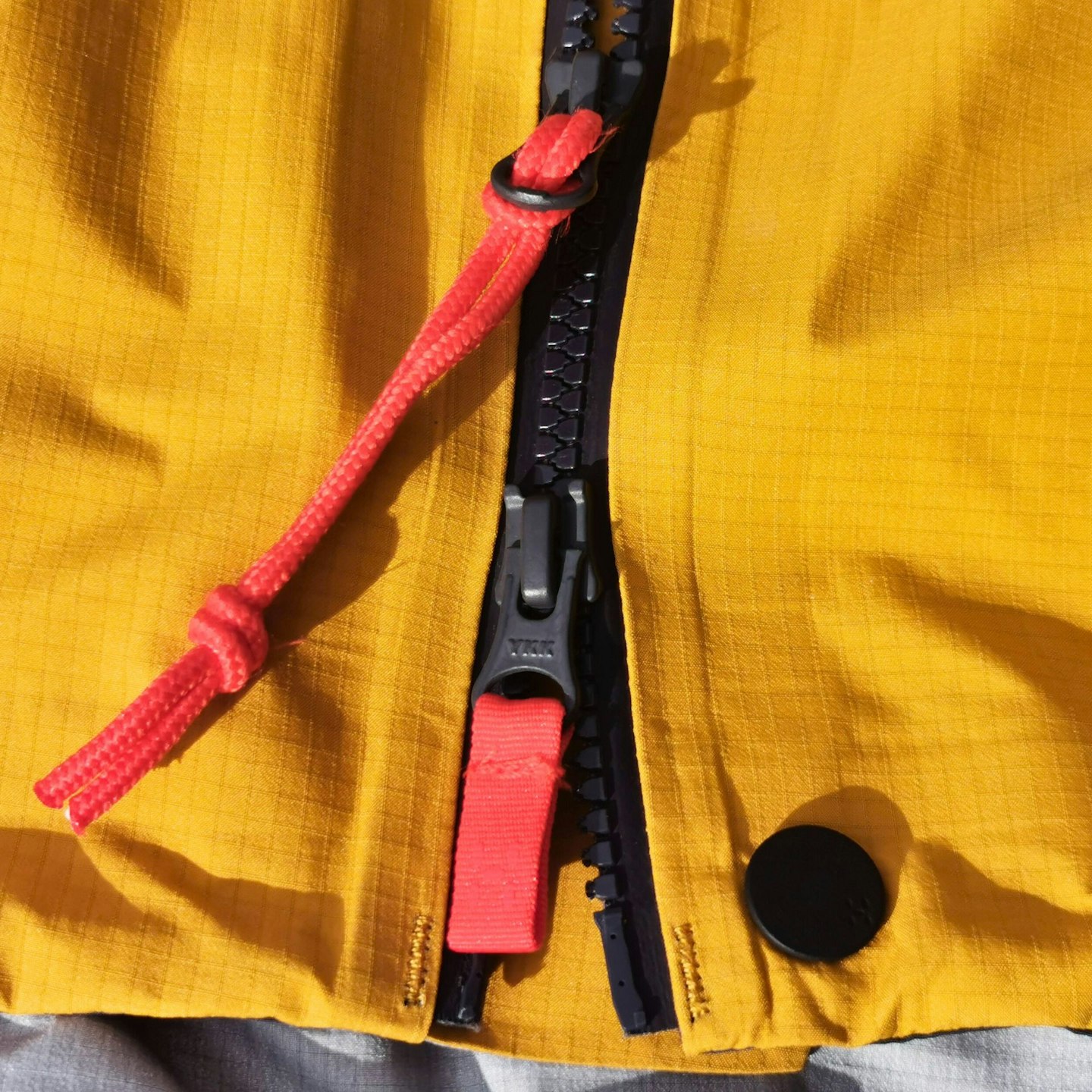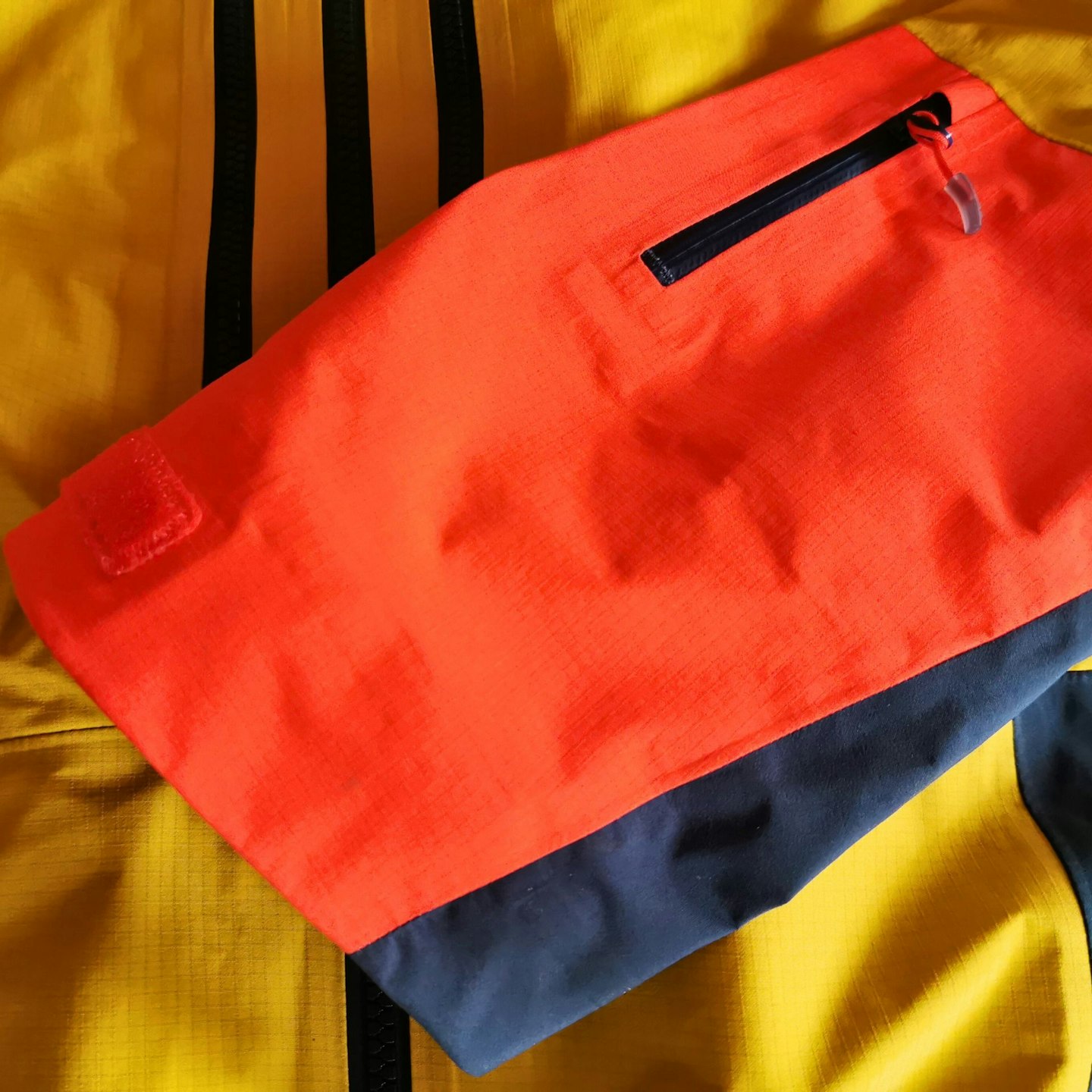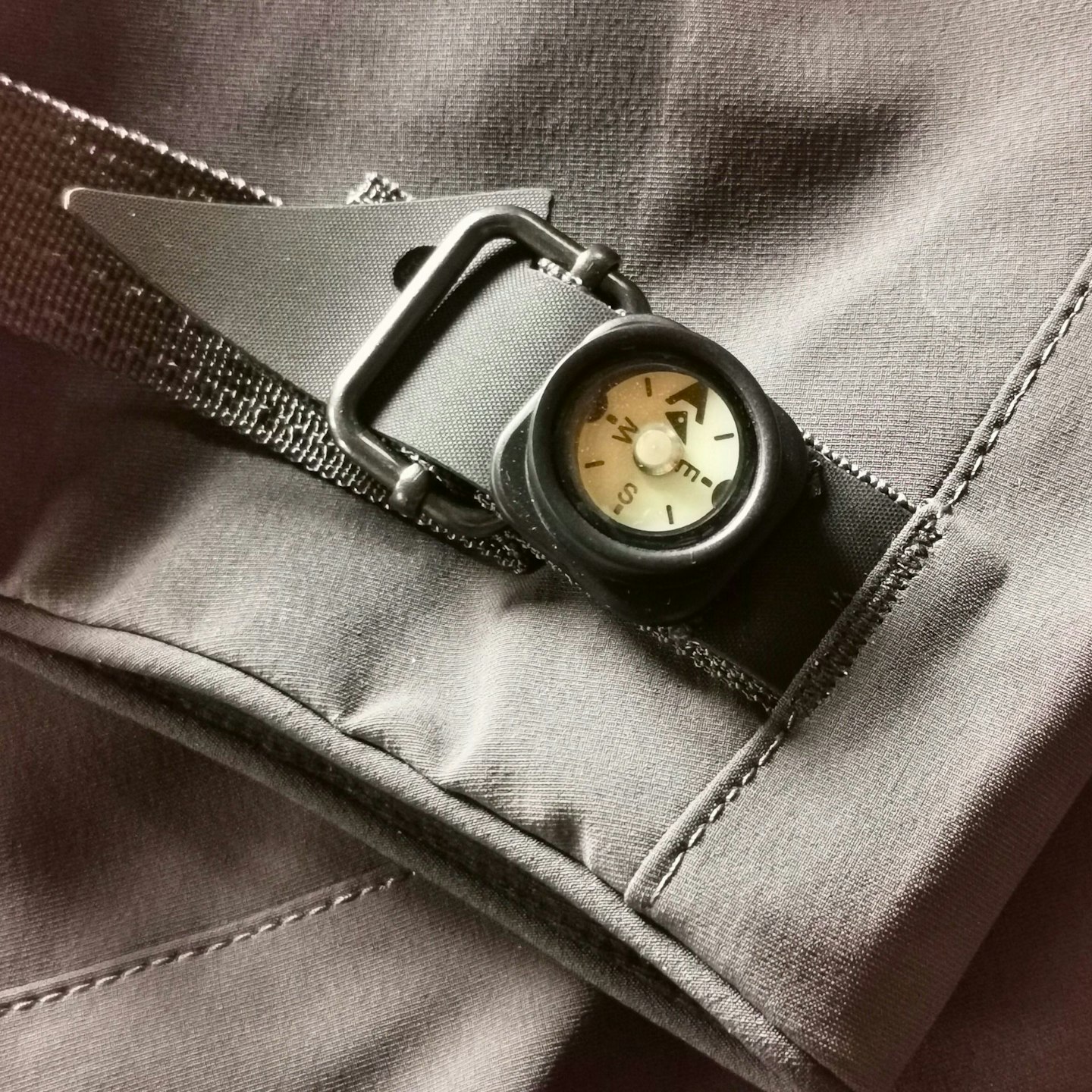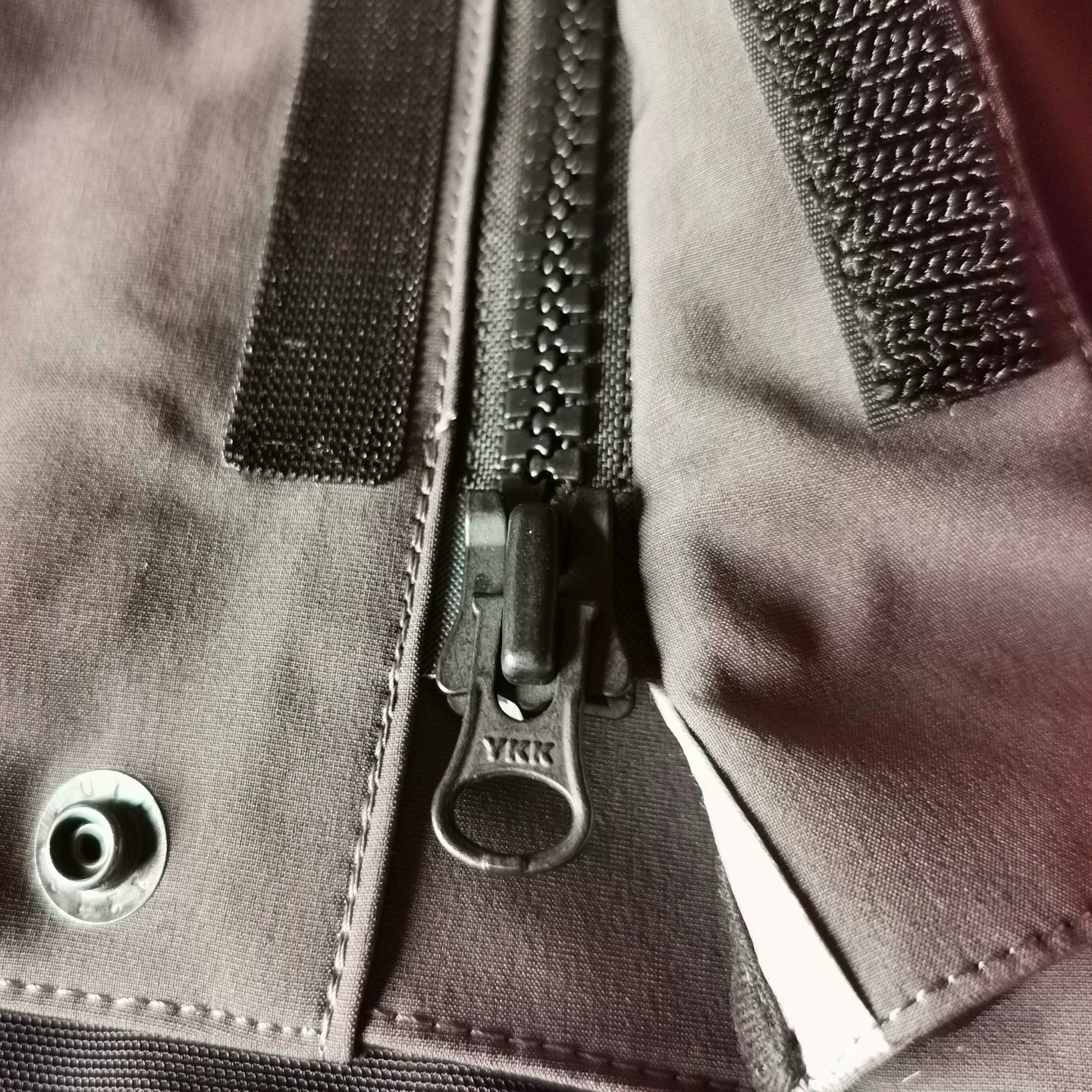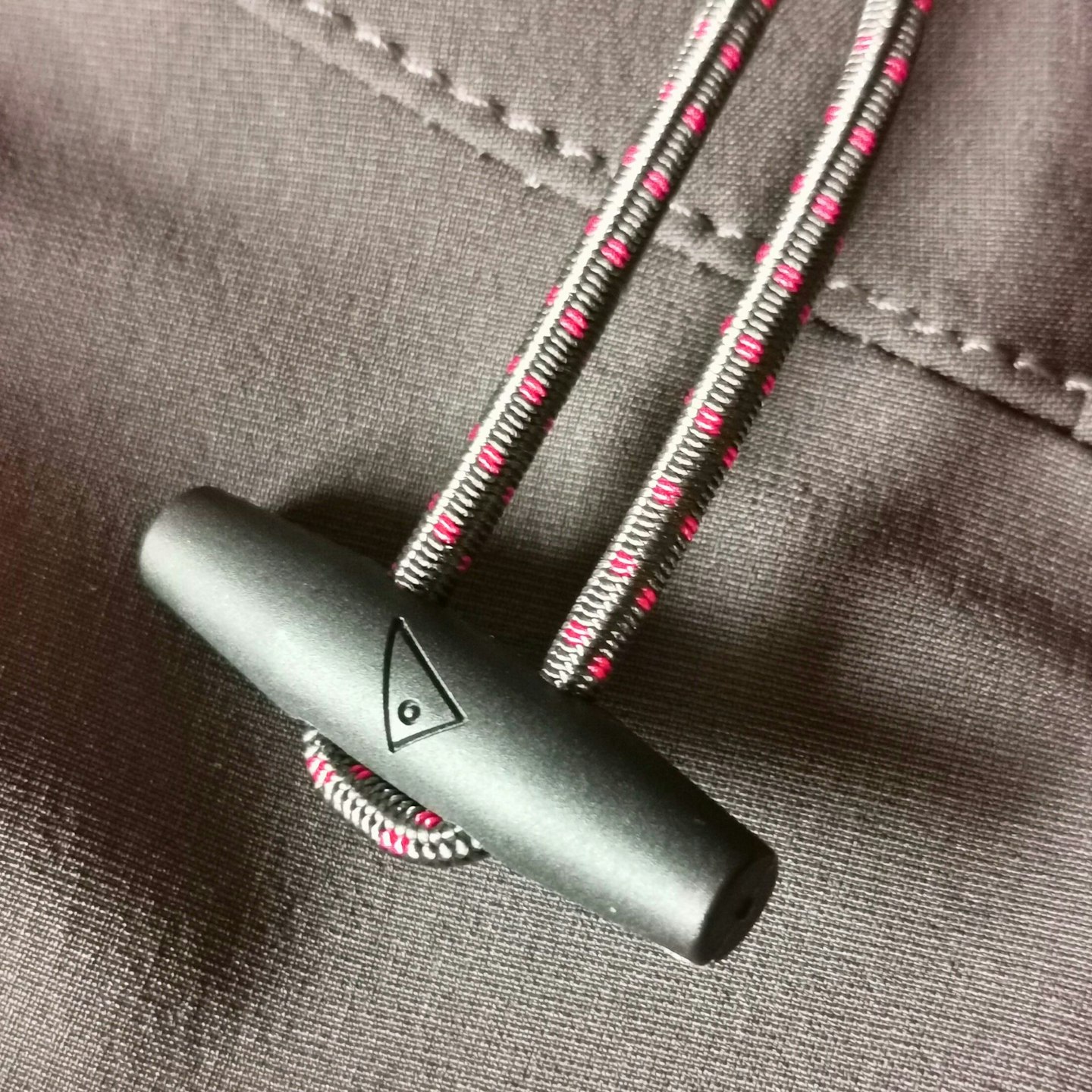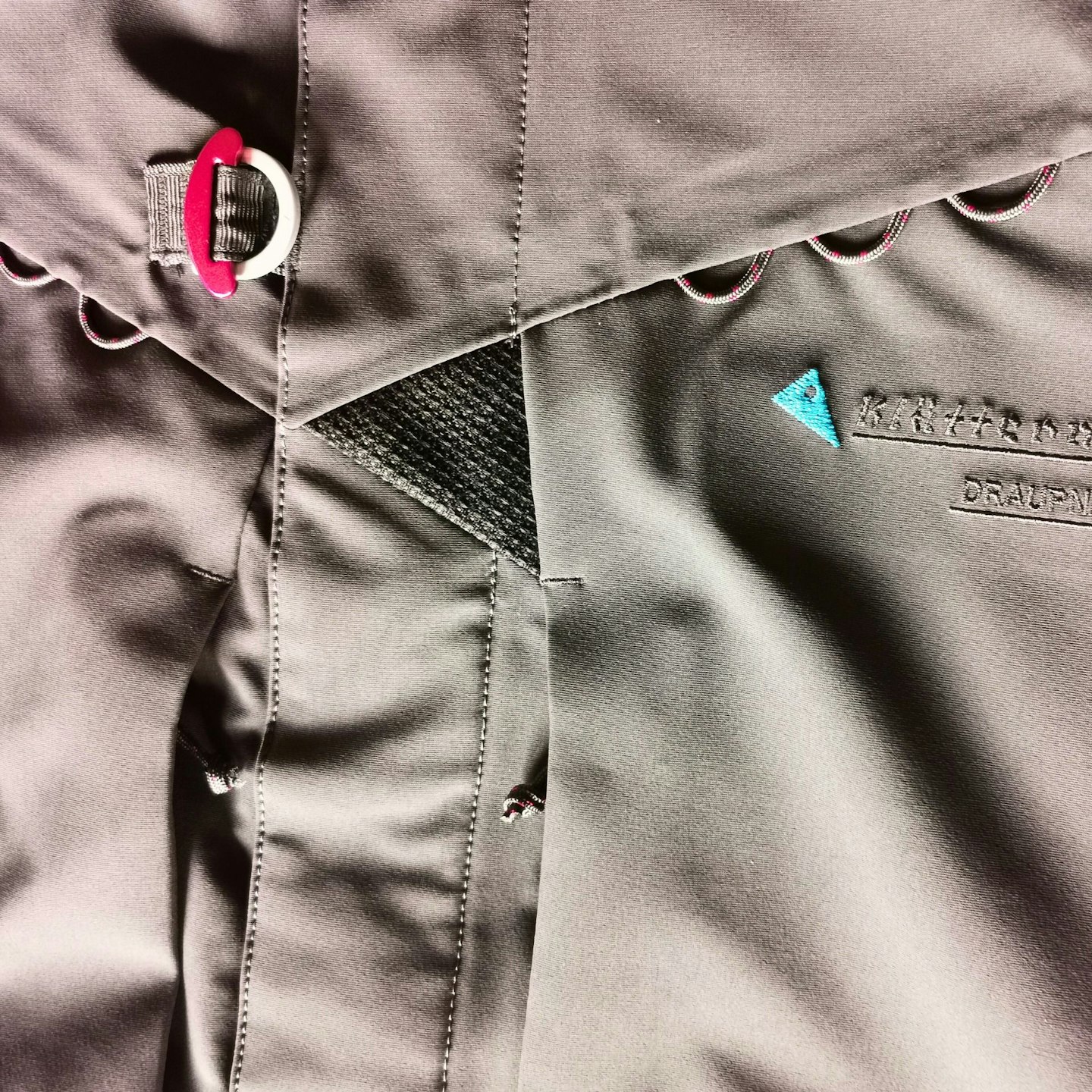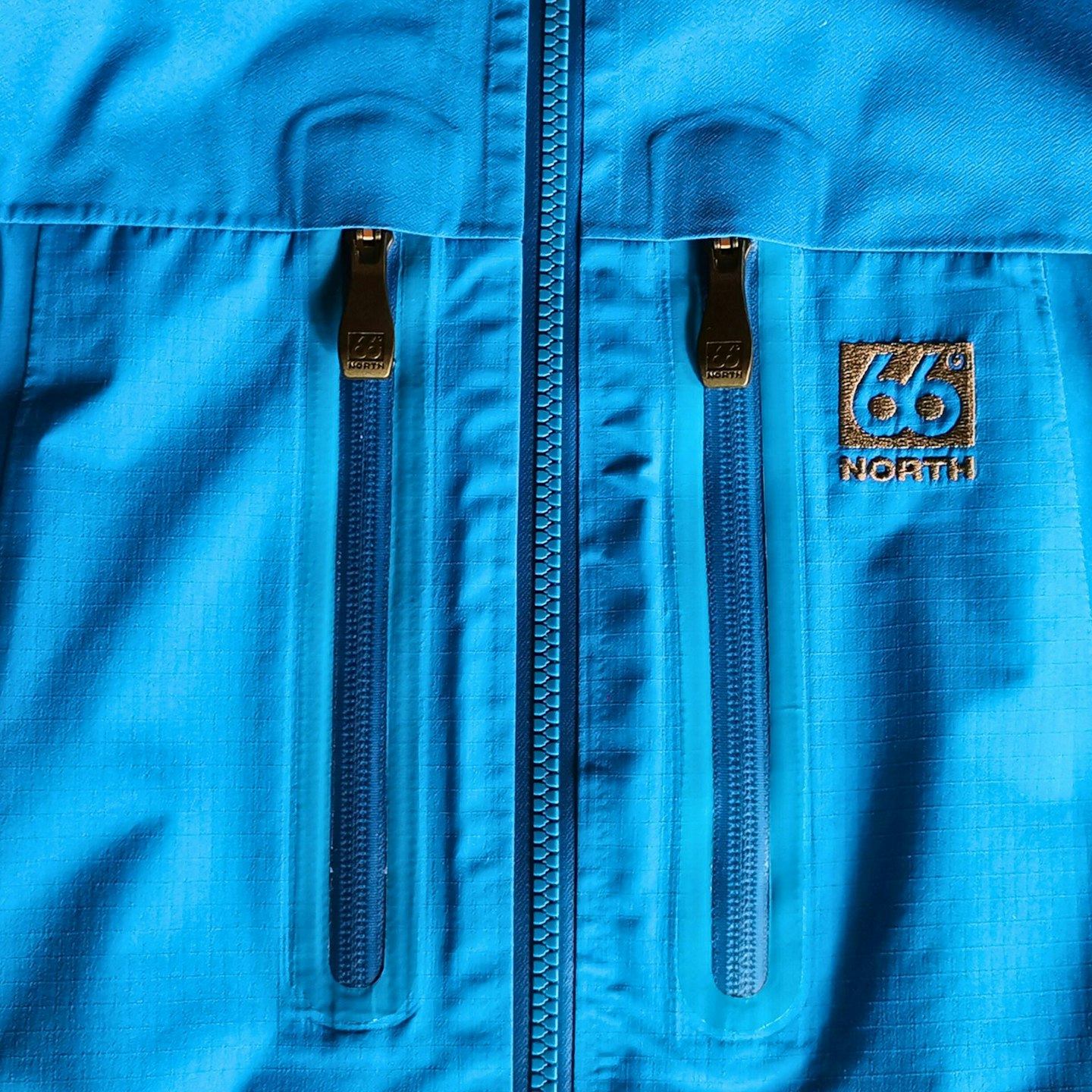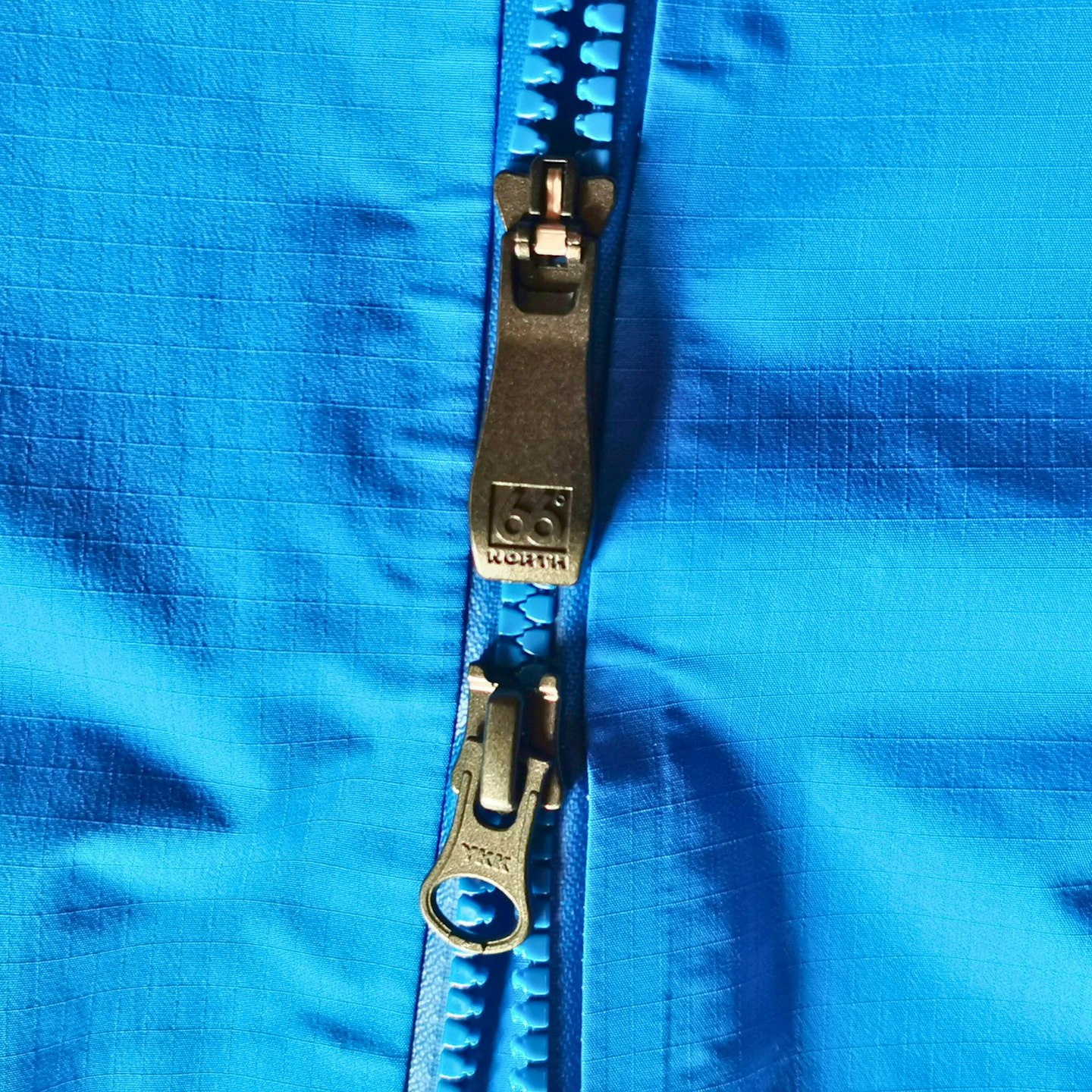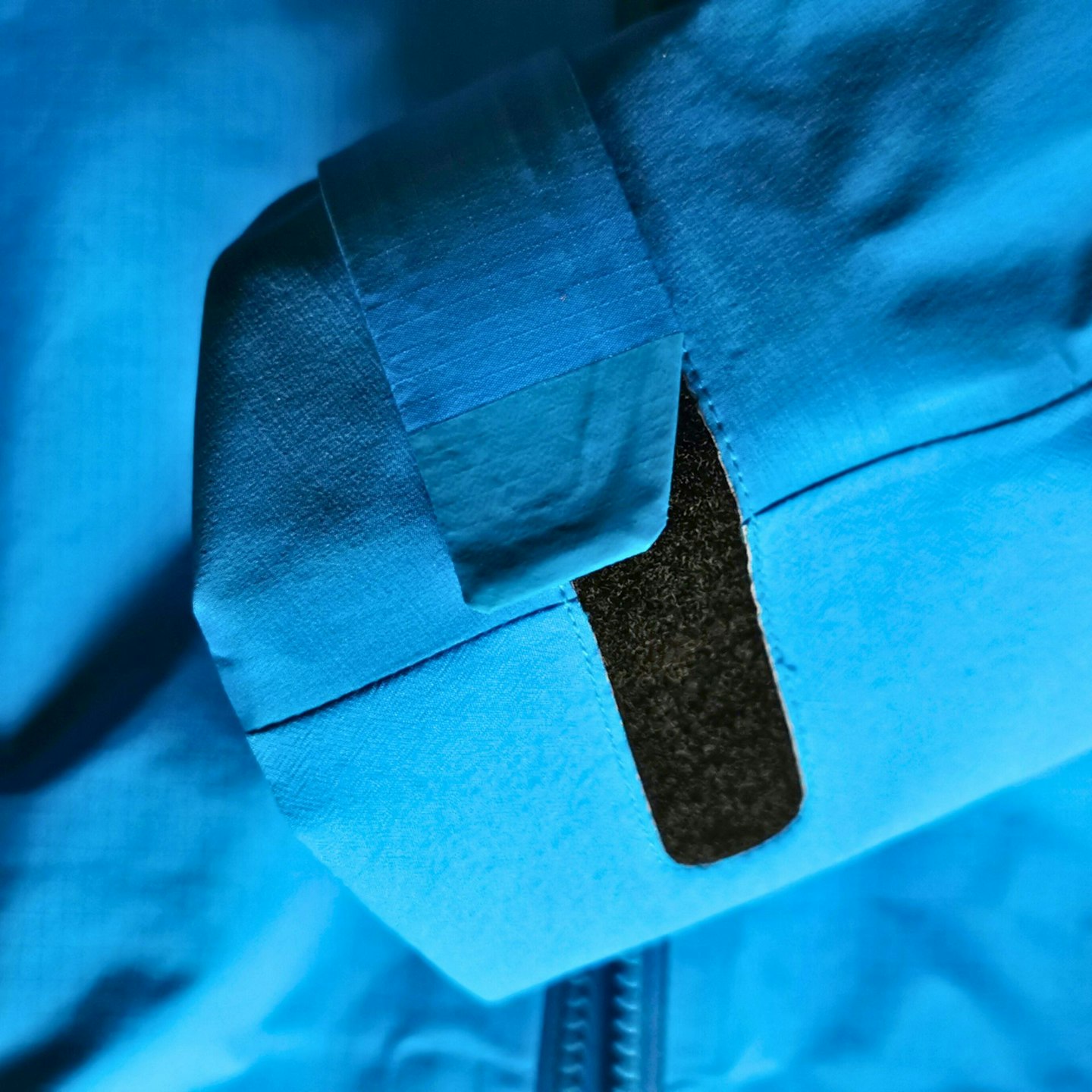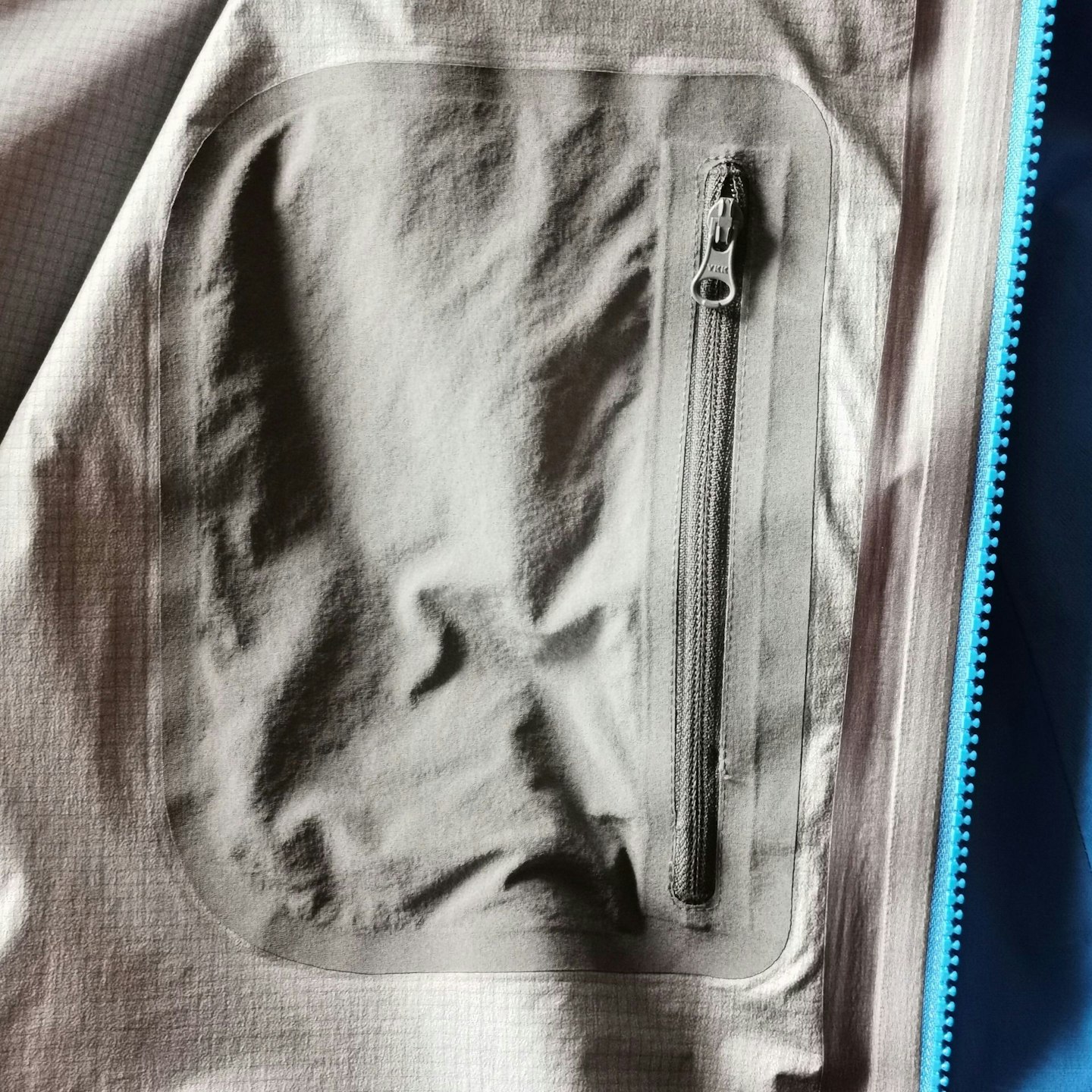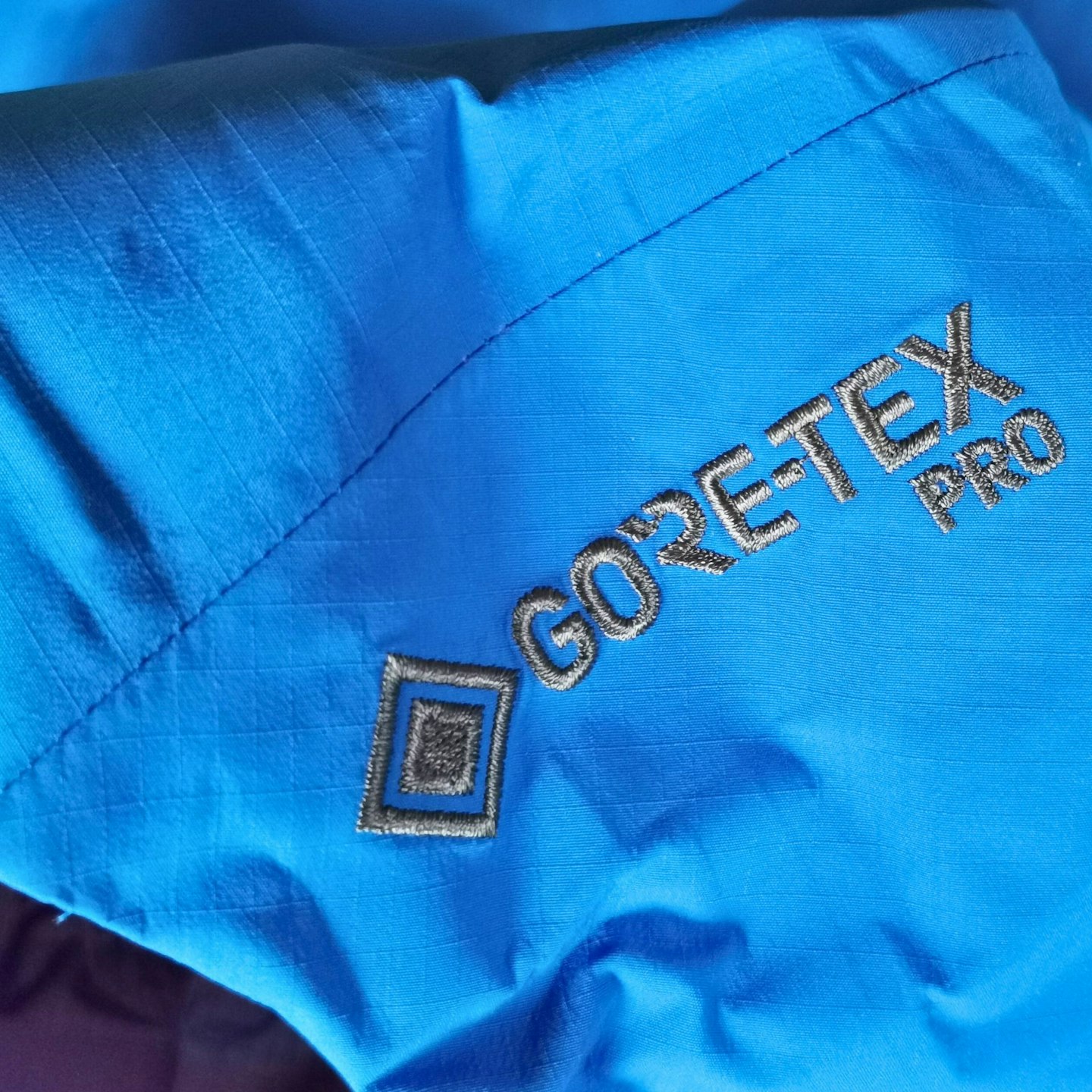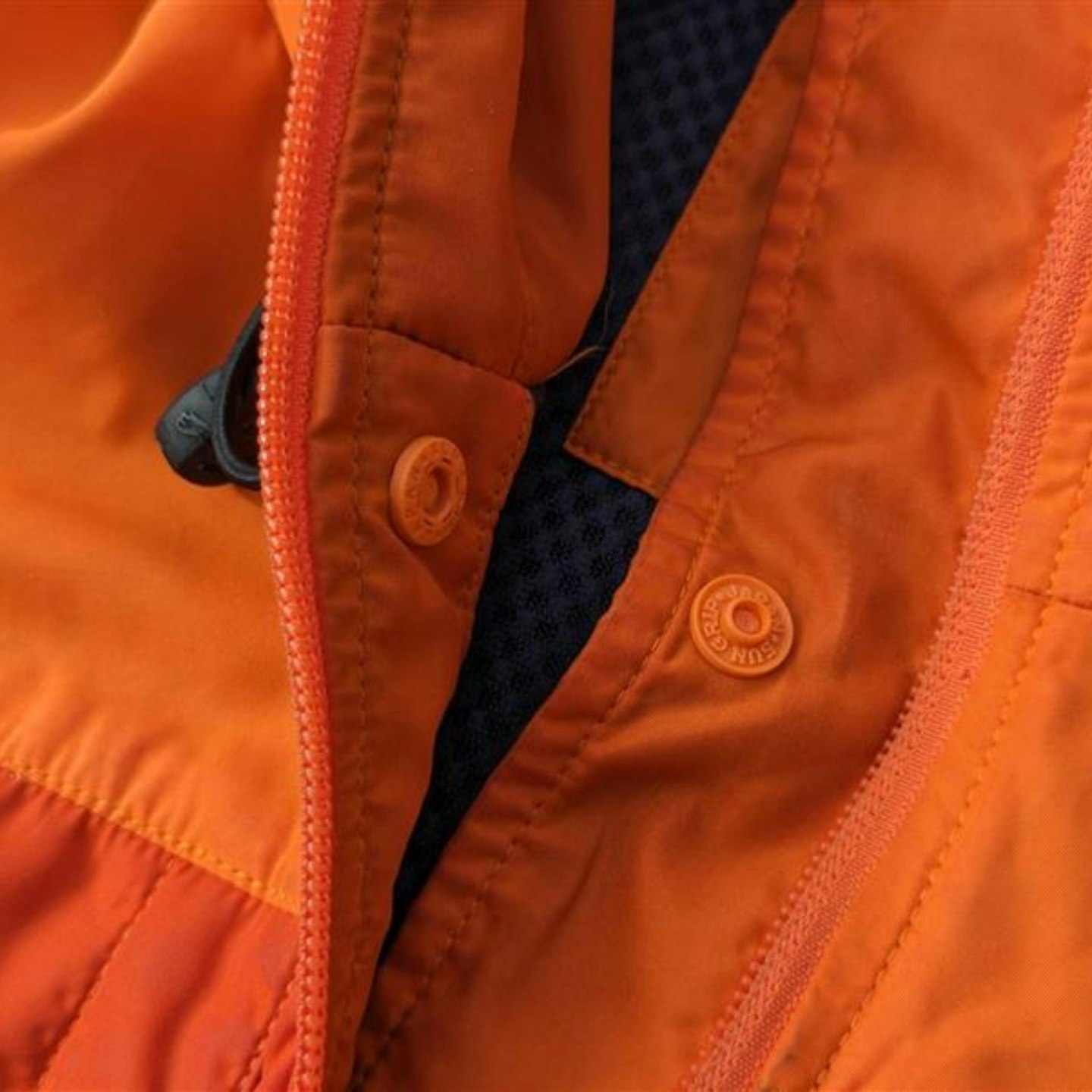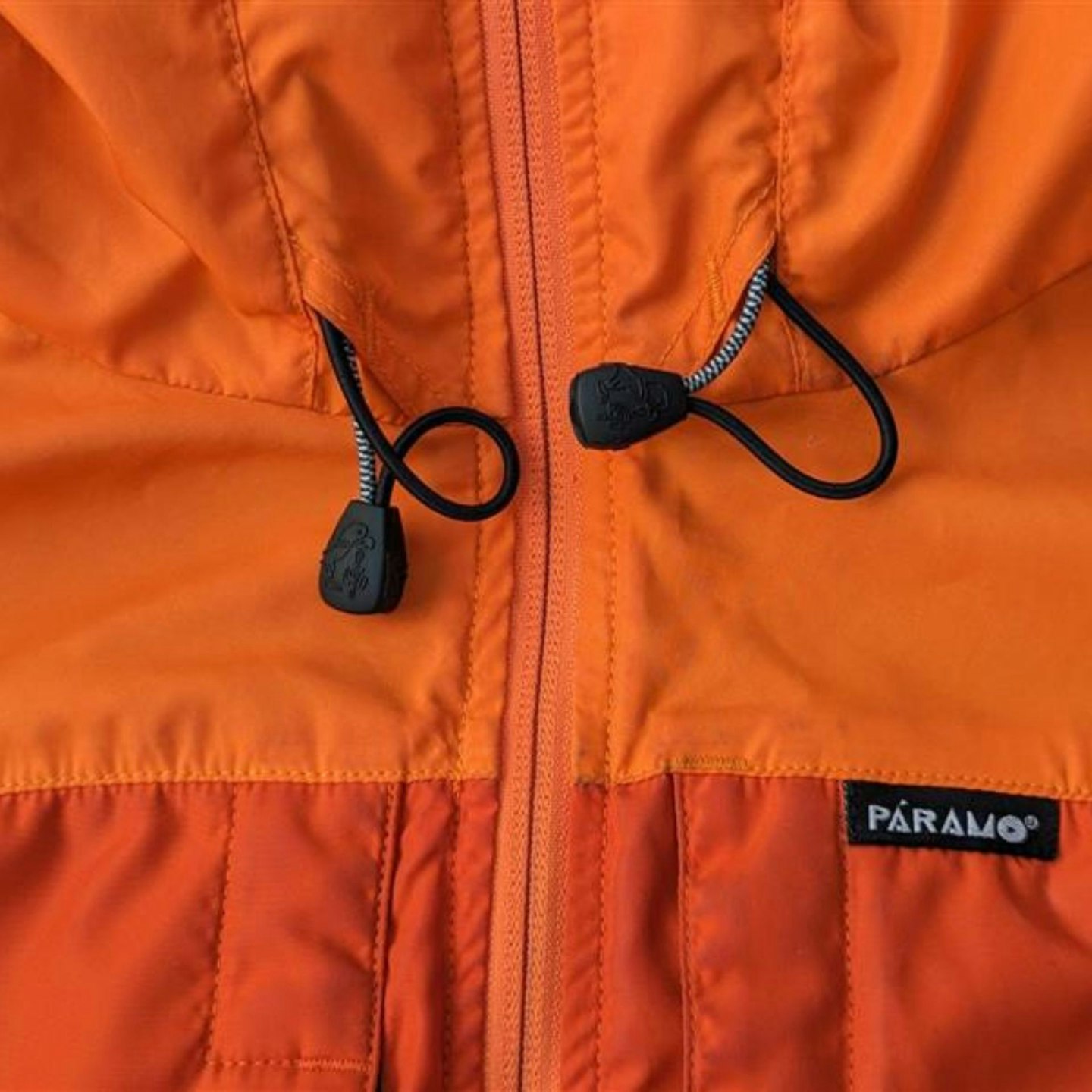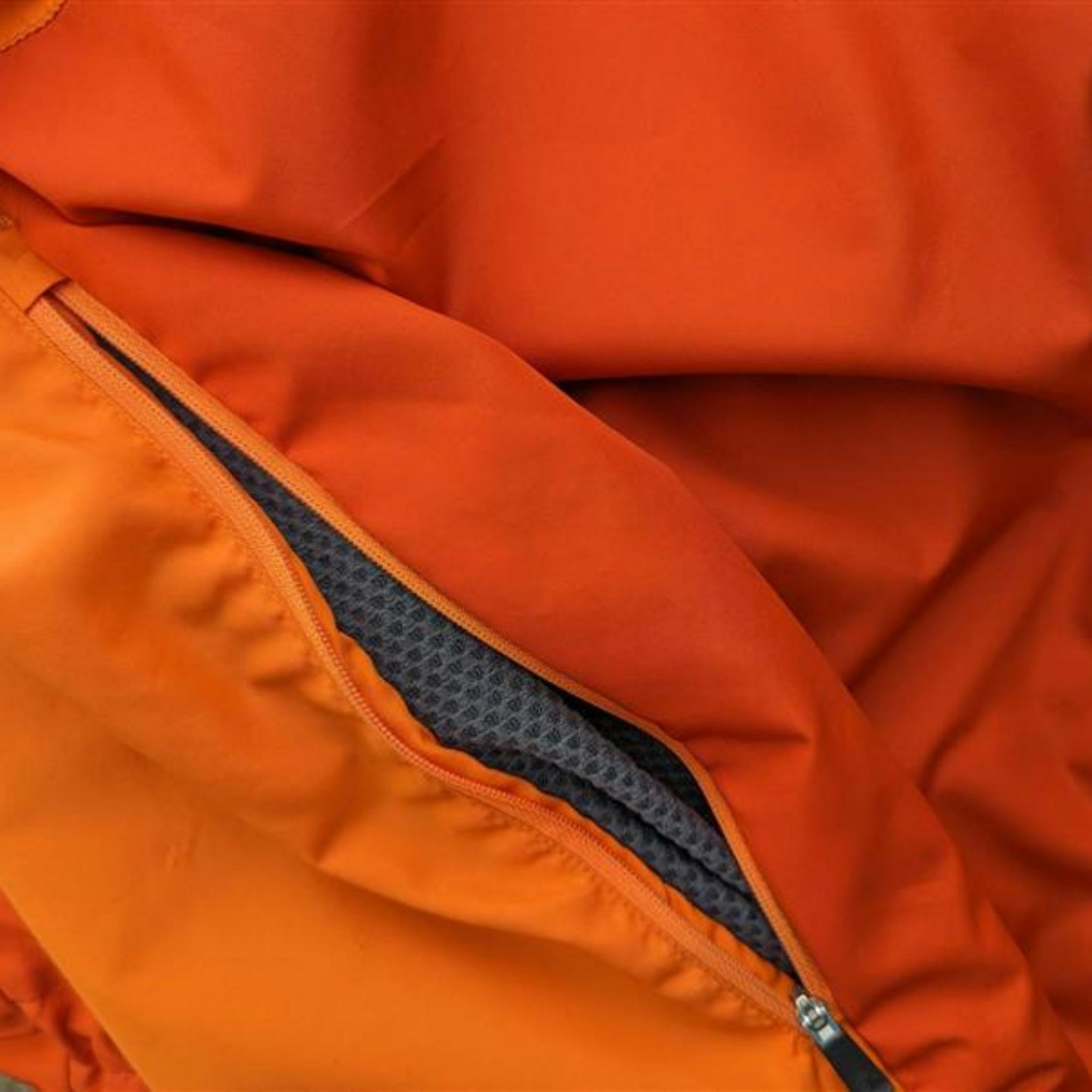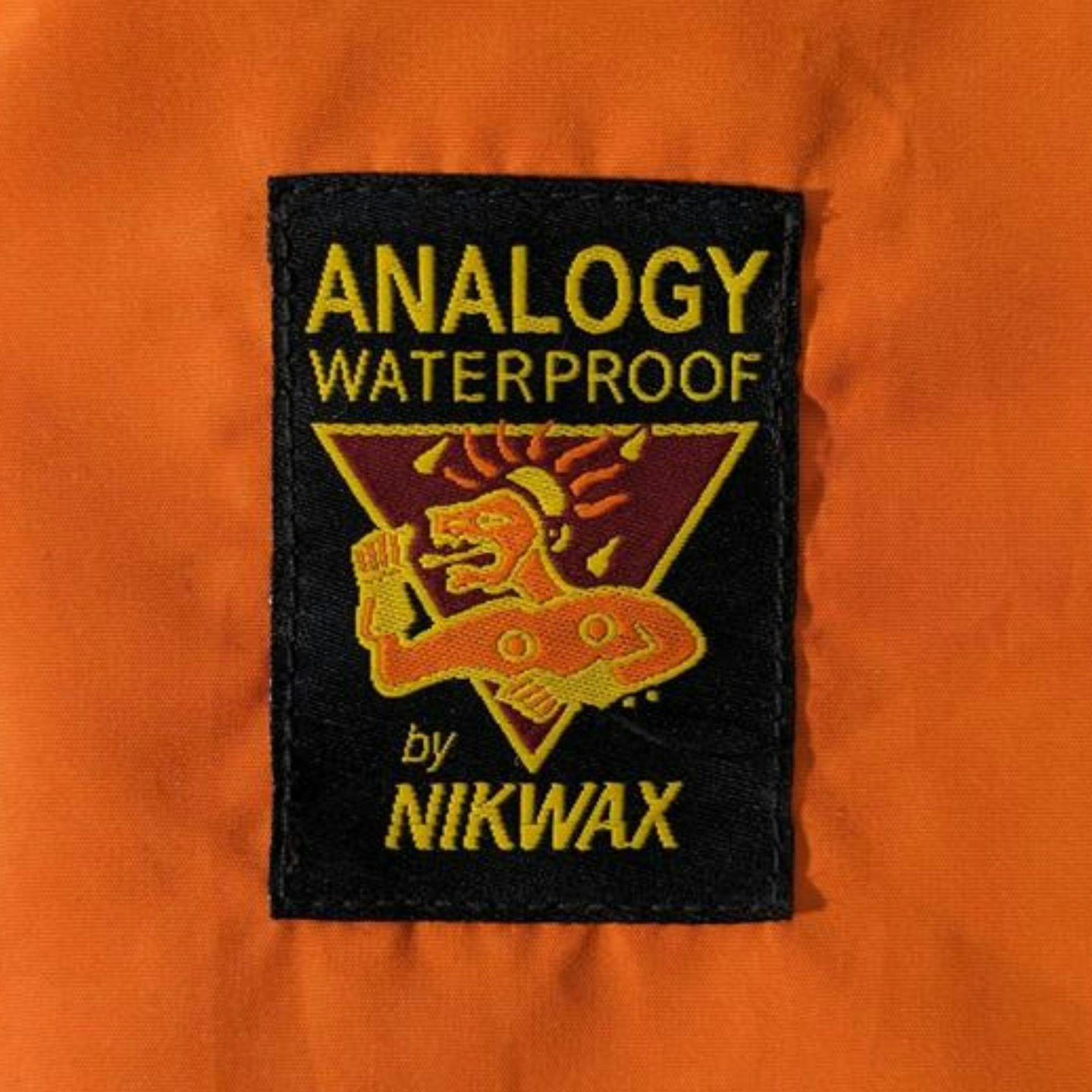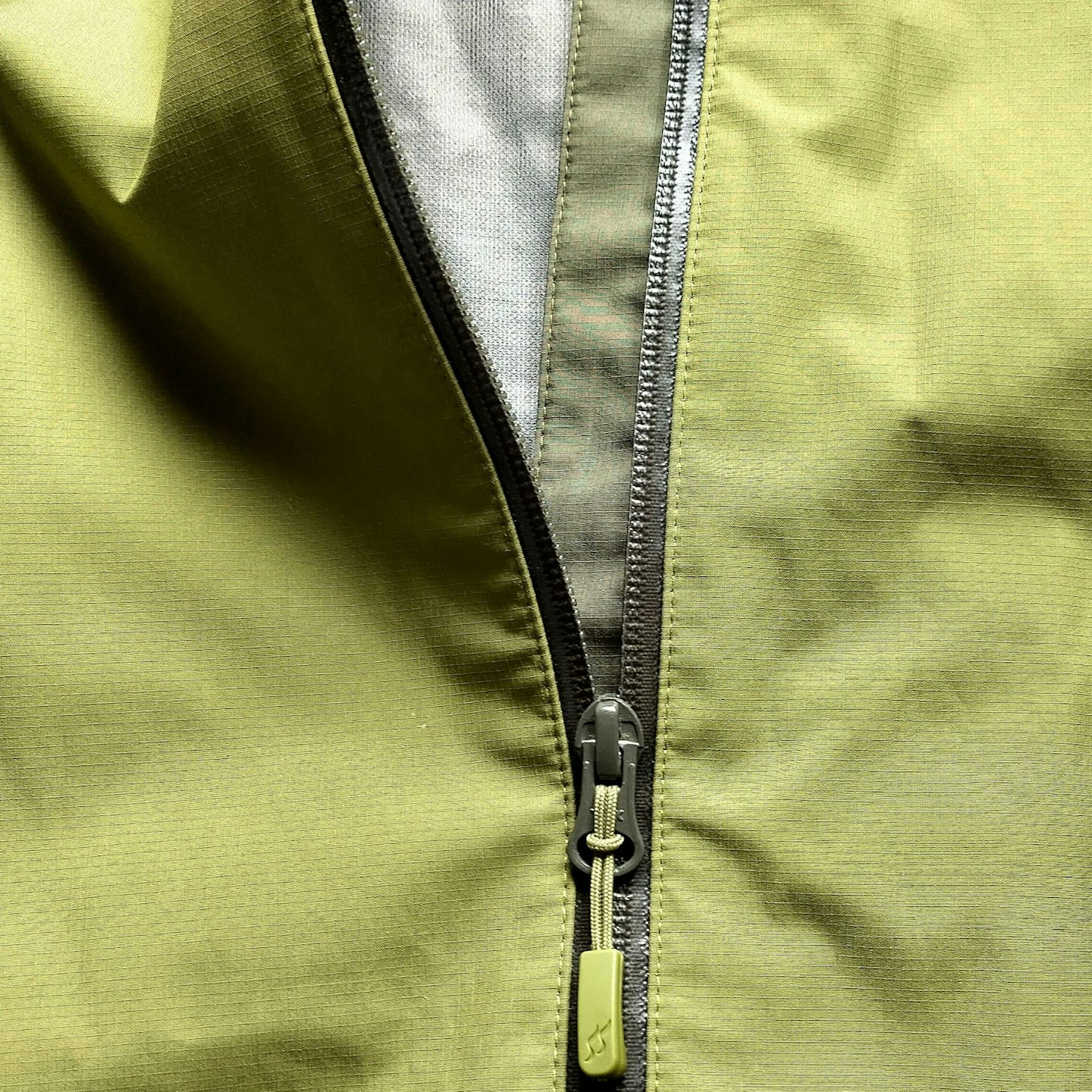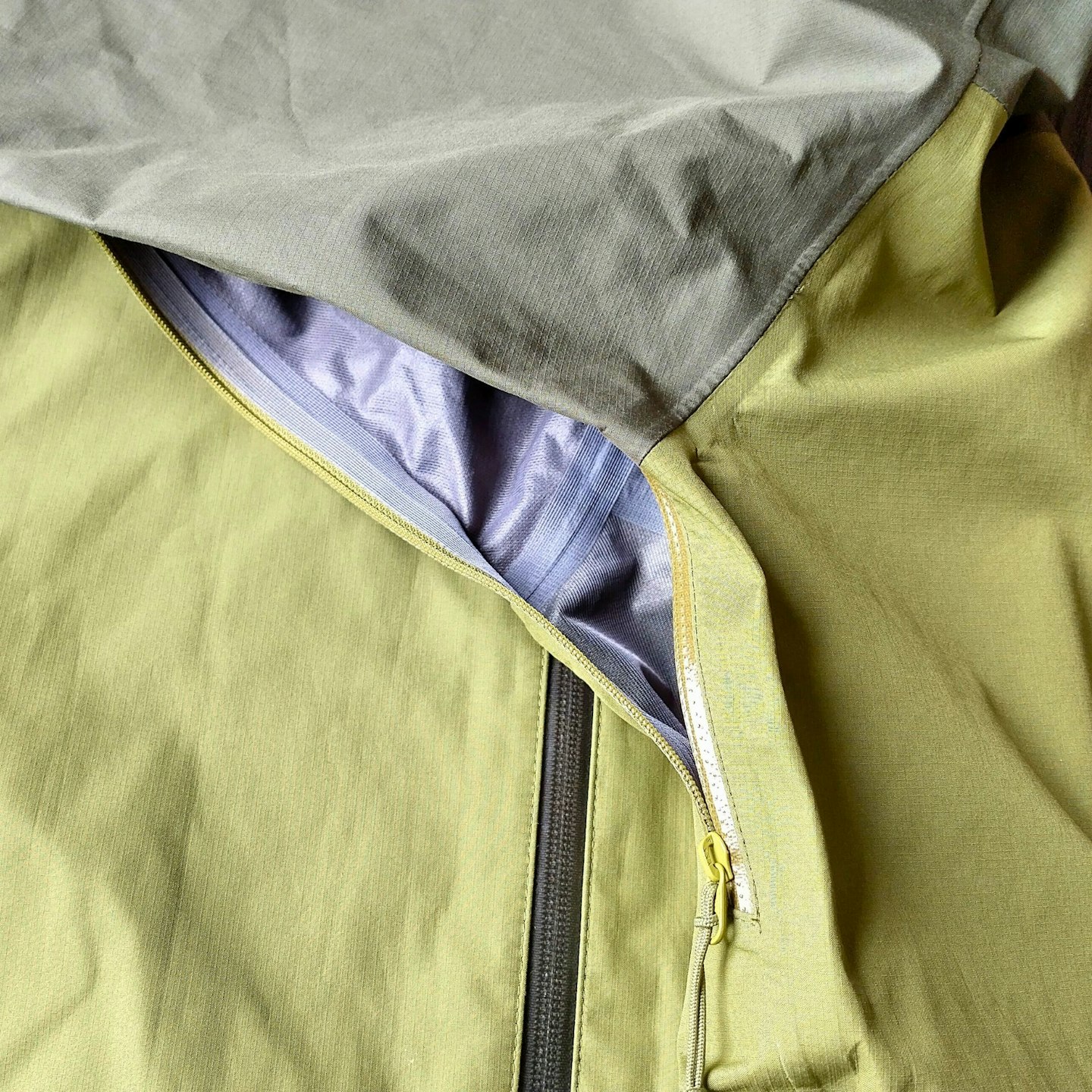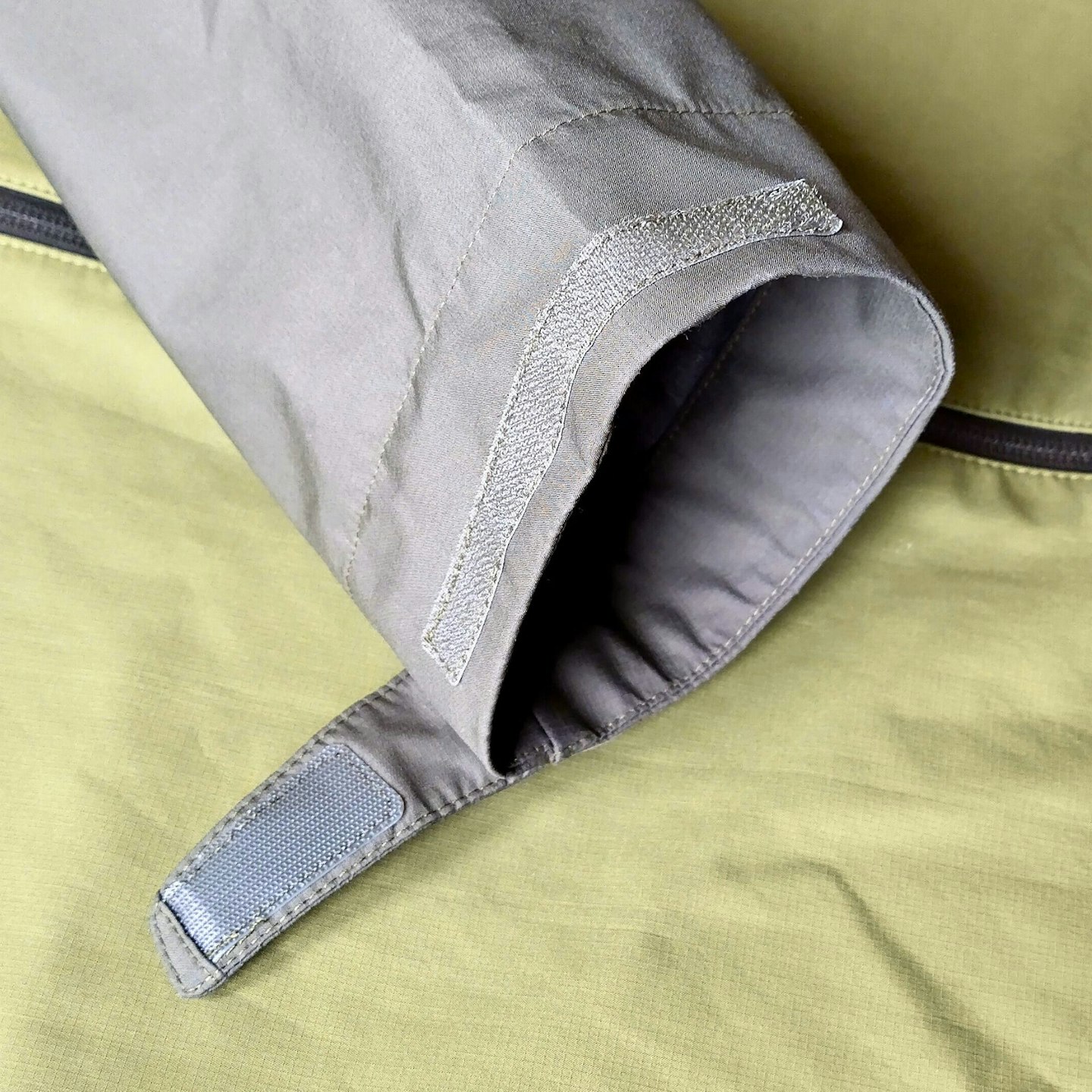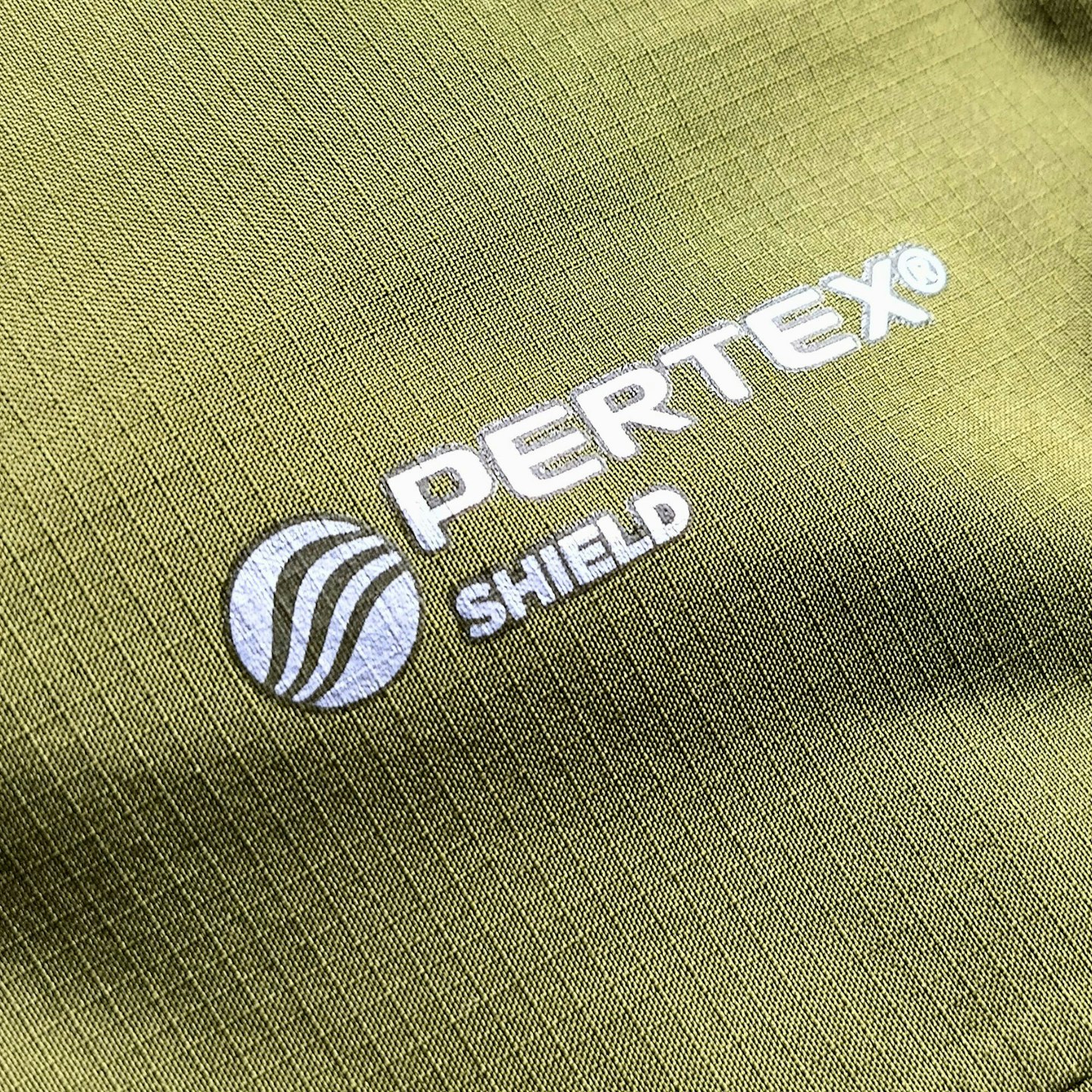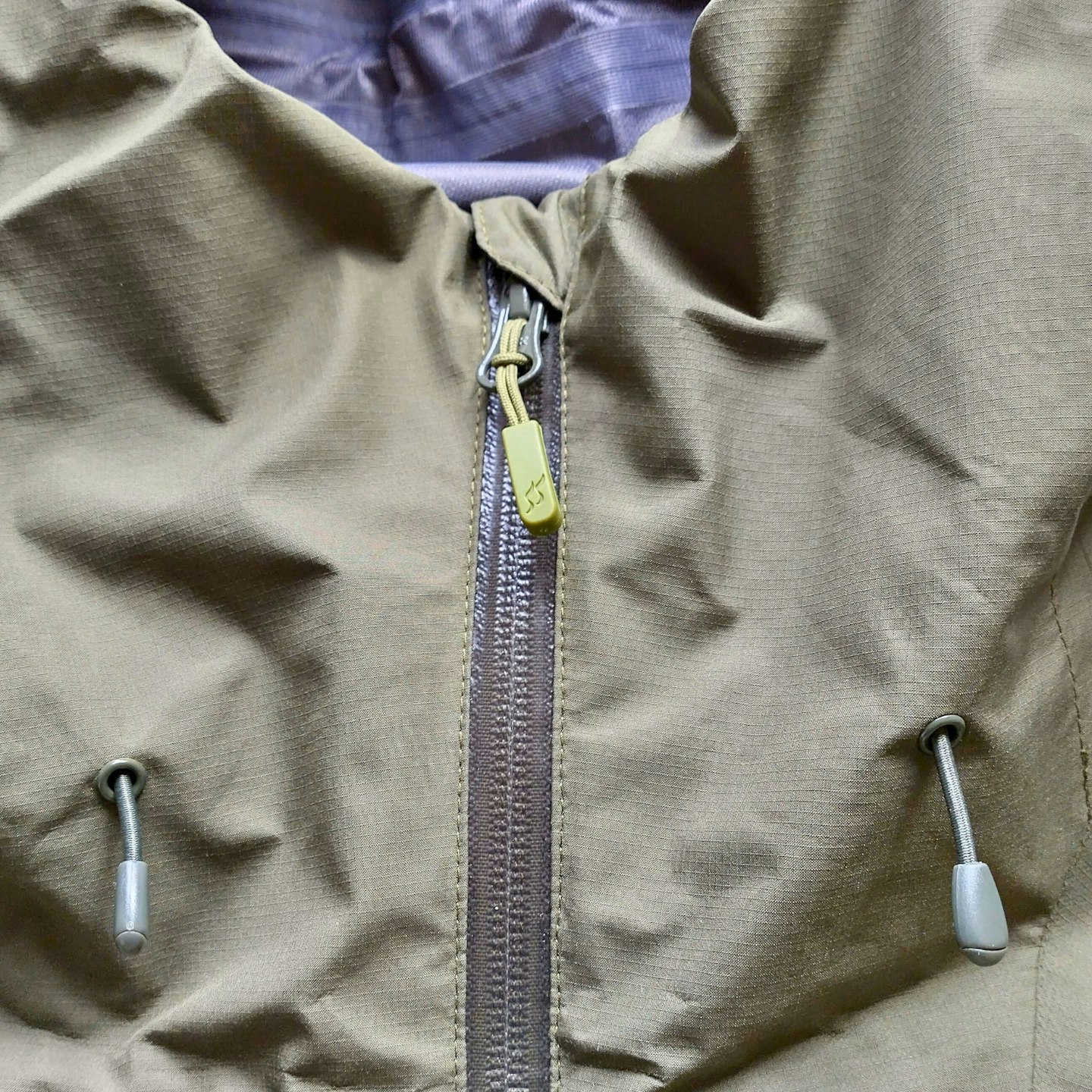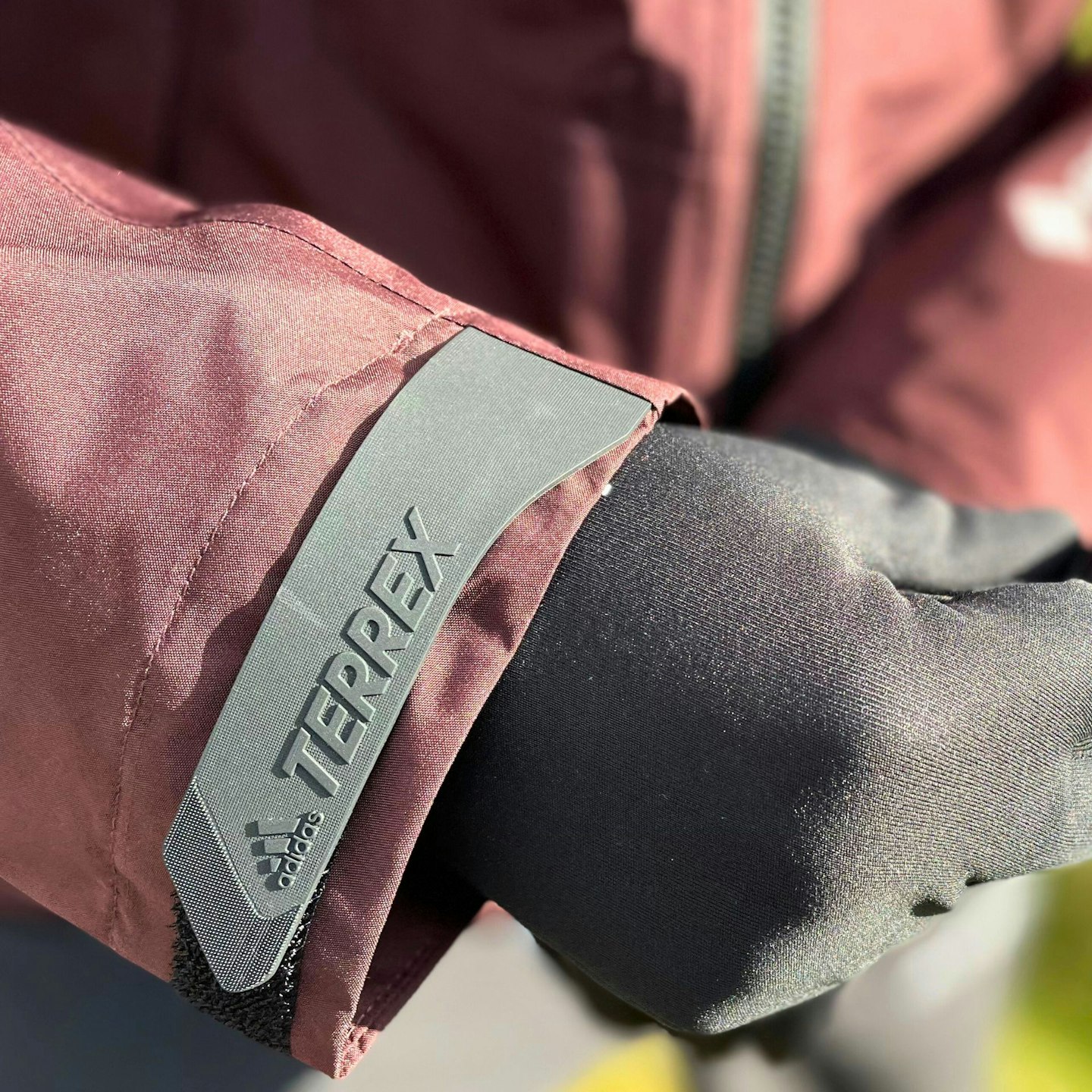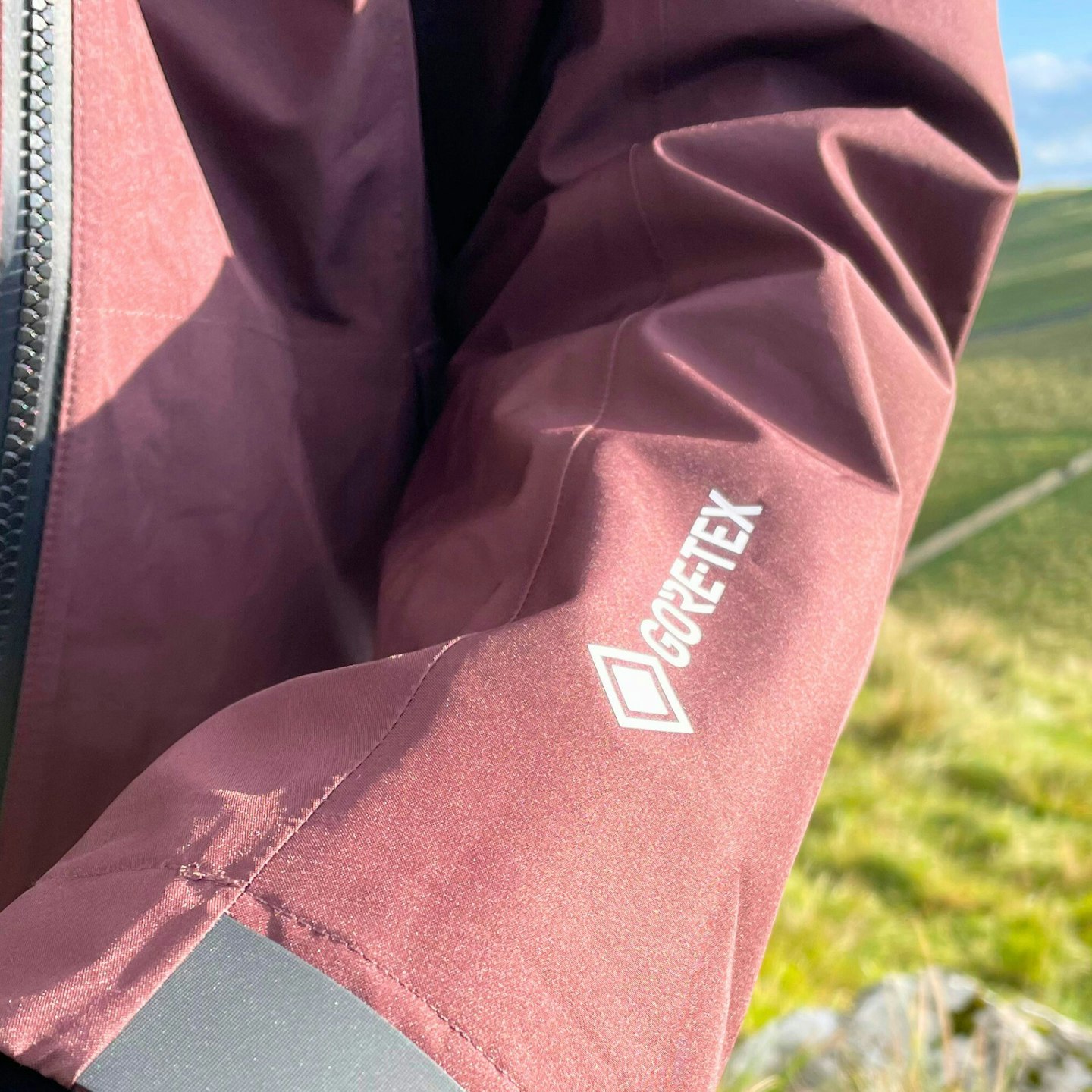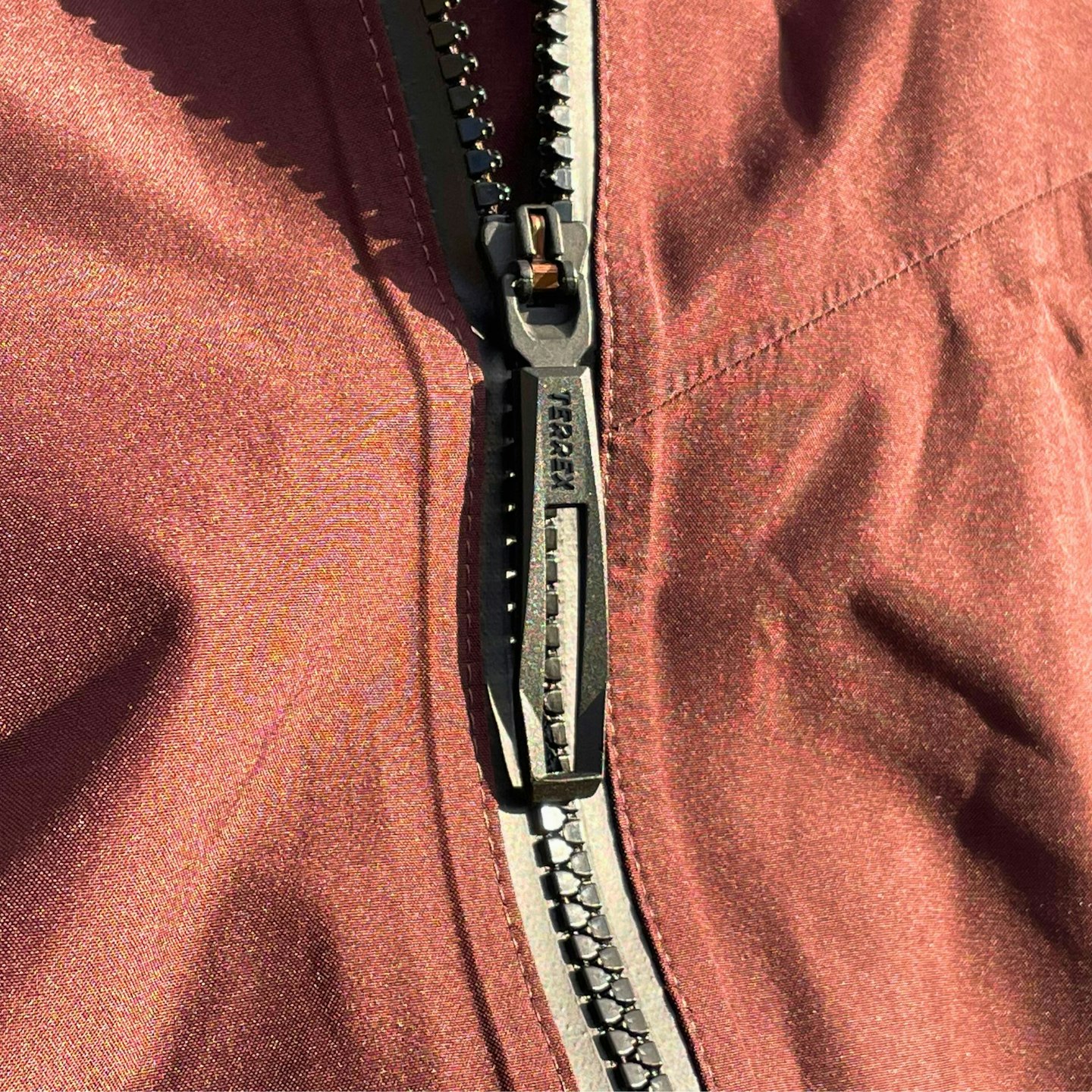When winter rolls around, UK mountains can become a battleground: walkers vs weather. You’ll typically experience precipitation in all its forms – rain, hail, sleet and snow – and sometimes all in one day. Which means that winter waterproof hiking jackets become far more than just an emergency layer.
Related: Best Jackets
Your first line of defence in the battle against the elements should be a rugged and reliable waterproof jacket. Normally worn all day, it should be able to take a fair bit of winter hammering. It should also offer good all-round coverage, including a secure hood, hem, and cuffs that will stay put even in the wildest weather.
Other useful features include easy-access pockets and pit zips to dump heat fast. And if you’re making the transition from winter hillwalking to graded scrambles or climbs, you’ll want a jacket that fits neatly under a climbing harness, plus a hood that will accommodate a helmet. These premium winter-ready features don’t come cheap, but get all those elements right, and you’ll have a fortress of a jacket that will see you right through to spring.
Our favourite winter waterproof jackets at a glance:
Best in Test: Fjällräven Bergtagen Eco-Shell - View on fjallraven.com
Best Value: Mountain Equipment Makalu - View on cotswoldoutdoor.com
Best technical winter waterproof jacket: Haglöfs Spitz GTX Pro - View on haglofs.com
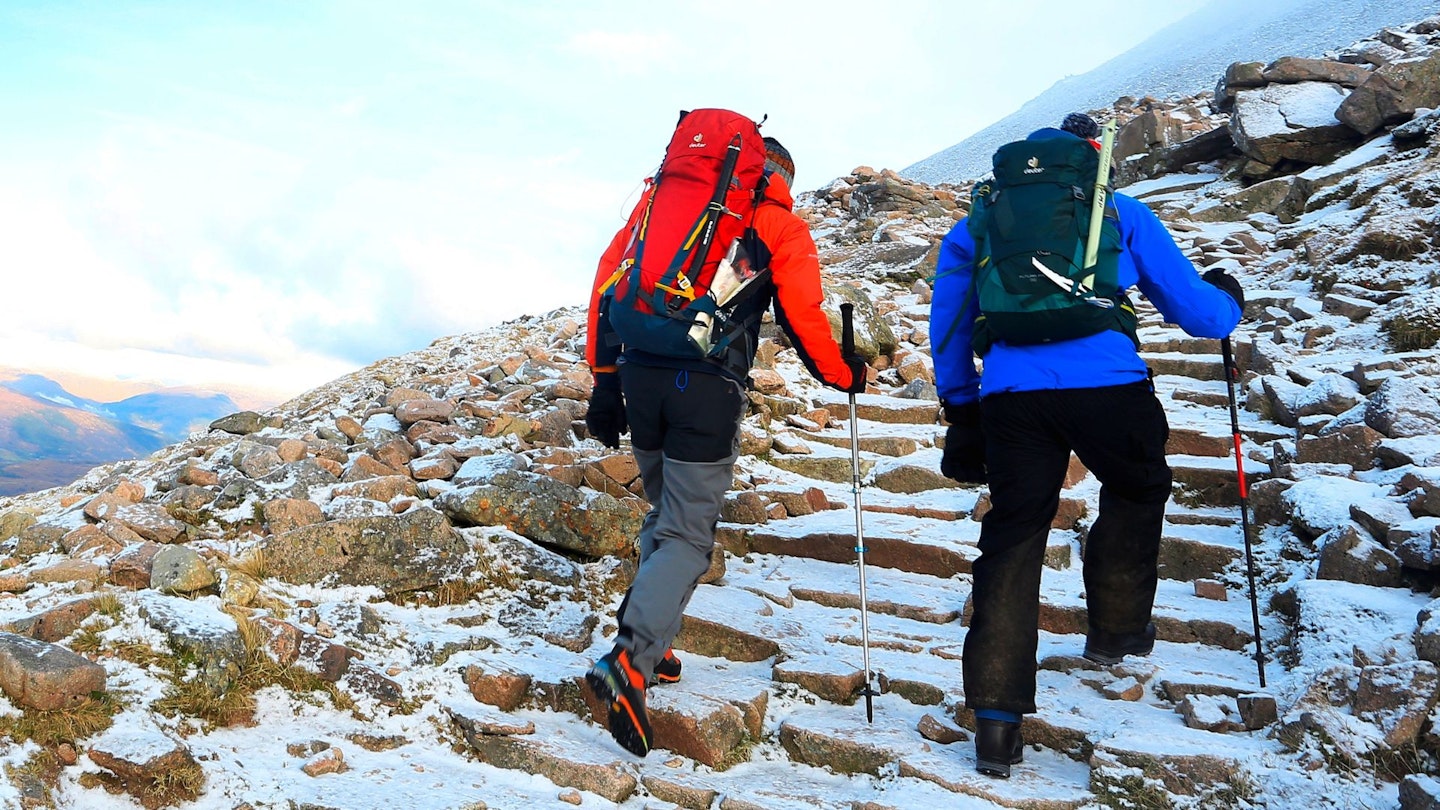
When it comes to full winter conditions, UK mountains can be a serious challenge. The legendary Sir Chris Bonington once said that being caught in a Cairngorms blizzard was as fearsome as anything he’d ever faced – and that’s coming from a man who led some of the most epic Himalayan expeditions. With this in mind, these are the best winter waterproof jackets from our extensive field testing.
Best winter waterproof jackets in detail
We loved this classy mountain shell. It oozes quality and feels great to wear, thanks to a 60D ripstop stretch fabric that is quiet and supple. Being polyester-based, it’s softer than nylon normally favoured for high-end waterproofs, but was still tough enough to take considerable abuse.
Eco-Shell is Fjällräven’s own 3-layer waterproof construction, with lab stats of 30,000mm HH for waterproofing and 26k MVTR for breathability. Those figures put this near the top of the pile. Our real-world testing supported the stats – it kept us dry and comfy through a wet, cold and often snowy Snowdonia winter.
The Bergtagen Eco-Shell's fit is excellent, and a slightly longer hemline meant this jacket provided the best all-round coverage of the jackets we tested. There are two large Napoleon-style chest pockets, which ensured they were never blocked by a pack hip belt, though some might prefer hand pockets.
However, we did miss the lack of internal pockets. And while the jacket has no pit zips either, it employs two big torso vents which do eliminate bulk under the arms and are easy to use. They are a bit more susceptible to ingress from rain and snow though.
All the zippers have chunky toggles that are easy to grab when wearing gloves. But the hood adjusters the exterior drawcords can whip around in high winds.
Check out the women's version here
Pros
- Soft, quiet yet tough fabric
- Very high waterproofing
- Good breathability
- Superb comfort
- Good coverage
Cons
- No internal pockets
- Torso vents more susceptible to ingress than pit zips
| Weight: | 600g (men's L) |
| Fabric: | PFC-free 60D 3L Eco-Shell (30,000mm HH) |
| Men's sizes: | XS - 2XL |
| Women's sizes: | 2XS - XL |
Reworked for 2023, the Makalu now uses Gore-Tex’s new and more sustainable ePE fabric, which is free from harmful PFCs. Skeptics will be relieved to know that if we hadn’t told you it used a new type of Gore-Tex, you wouldn’t have noticed.
During our testing, we found it’s just as durable, waterproof and breathable as standard Gore-Tex, while being lighter and more pliable, with no drop-off in performance.
The 3-layer jacket uses a 75D face fabric – plenty tough enough for winter use, yet comfy enough for all-day wear – but weighs in at creditable 520g (men’s L). However, it has no stretch, which some rivals can offer, and it would be nice to see recycled material used.
On test, it delivered excellent all-round protection, with long sleeves, contoured cuffs and a mid-sized hood, which can fit over a climbing helmet but cinches in superbly over a bare head. The stiffened peak deflects rain well, while the lower half covers the chin, with integrated cordlocks to reduce bulk around the face.
We liked the generous collection of pockets – you get two well placed hand pockets, a large external chest pocket with an internal key clip and a zipped inner security pocket. It also has two-way pit zips and a two-way main zip with a chinguard, an inner stormflap and a bottom press stud.
Check out the women's version here
Read our full Mountain Equipment Makalu Jacket review
Pros
- Gore-Tex ePE works brilliantly
- Tough 75D face fabric
- Lighter than many rivals
- Many pockets
- Offers excellent protection
Cons
- No stretch in fabric
| Weight: | 520g (men's L) |
| Fabric: | 75D 3L Gore-Tex ePE w/ PFC-free DWR (28,000mm HH) |
| Men's sizes: | S - 3XL |
| Women's sizes: | 8 - 16 |
Artilect is a relatively new US outdoor brand from Colorado. We’ve tested a few bits of its gear now, and it all seems intelligently designed and very forward-thinking, taking advantage of innovative fabrics or new and emerging tech.
This shell employs Artilect’s own impressive High & Dry membrane, which is rated at 30,000mm hydrostatic head (HH) for waterproofing and 30k MVTR for breathability. On test, it unquestionably matched the best rivals such as Gore-Tex Pro.
The fabric is also impregnated with Trizar thermoregulating material and finished with EMPEL, a permanent water-repellent treatment that shouldn’t need reproofing. See what we mean…innovative.
We loved how the tough 70D nylon material has four-way stretch to offer a combination of durability and comfort. Overall, the fit is excellent. It feels great to wear and is protective without being stiff or crinkly.
Although the Formation 3L is remarkably advanced, it’s not highly technical and therefore isn’t especially suited for the most demanding mountain expeditions. For example, it lacks two-way zippers, hand pockets are partly obstructed by a rucksack hipbelt and the hood doesn’t cinch in as well as some. It’s also one of the heaviest jackets we tested.
Check out the women's version here
Pros
- Permanent and sustainable DWR treatment
- Four-way stretch fabric is very comfortable
- Waterproofing and breathability is first class
Cons
- Lacks some technical features
- A bit heavier than some rivals
| Weight: | 690g (men's L) |
| Fabric: | Bluesign-approved, PFC-free 70D 3L 4-way stretch nylon shell and 20D<br>100% recycled jersey backer (30,000mm HH) |
| Men's sizes: | XS - 2XL |
| Women's sizes: | XS - XL |
Employing zoned 3-layer Gore-Tex Pro Most Breathable fabrics in tough 40D and 70D weights, the Spitz is a top-end, technical waterproof. We found its rugged construction balances fairly low weight with high-grade weather protection, while also ensuring good lifetime durability.
We liked the fully adjustable hood complete with a stiff brim. It protects the face very well and still offers good field-of-vision. Unusually, the Spitz features dual underarm and torso vents, but we appreciated the boost to ventilation it provides.
There are plenty of practical pockets: two Napoleon-style chest pockets, a zipped lower sleeve pocket, and a stretch mesh inner dump pocket with a smaller secondary zipped pocket. Happily, zips and big cuff tabs are easy to use with gloves too.
The cut is slightly shorter in the body than its rivals on test, but the sleeves are very long. The trim fit really only suits slimmer builds, though it still leaves adequate room for layering. And while the fabric is stiff and crinkly, clever patterning means there is very little excess bulk or bunching.
Check out the women's version here
Pros
- Climber-oriented fit ideal for alpinism
- Reasonably lightweight
- Ample storage
- Torso and pit vents
Cons
- Fit won’t suit everyone
- Stiff, crinkly fabric
| Weight: | 540g (men's L) |
| Fabric: | Bluesign-approved 40D 3L Gore-Tex Pro Most Breathable with 70D 3L Gore-Tex Pro Most Breathable panels w/ PFC-free DWR (28,000mm HH) |
| Men's sizes: | S - 2XL |
| Women's sizes: | XS - XL |
Yes, that price is eye-watering, but this might be the toughest shell on the market. But still, is it worth it?
We found the Draupner certainly delivers on durability, performance and sustainability. The outer fabric has a laminated abrasion resistant coating at shoulders, sleeves and hips. The collar, cuffs, and hem are lined with mesh and microfibre to boost protection too.
This jacket has some very unique details, most of which we found worked but all told makes the Draupner a bit unusual, and quite heavy.
For example, the high storm collar has a huge throat flap and a funnel-like hood which cinches in well to block out wind and spindrift. An aluminium toggle and D-ring at the chest act as a secondary closure for the two-way main zip, which also has a full-length Velcro stormflap with double press studs at the bottom.
Cuff closures are webbing straps with metal buckles, so they can't get clogged with snow. One cuff even has a built-in survival compass. And there are two voluminous chest pockets plus extended pit-to-torso vents. The chunky zipper pull is also an emergency whistle.
Yet despite its heft and bulk, we think the jacket is surprisingly soft and comfy, with in-built stretch. Not to mention we think it’ll outlast the other jackets here. It's also reasonably eco-friendly, being bluesign-approved and PFC-free.
Check out the women's version here
Pros
- Hardcore, ultra-rugged waterproof jacket
- Unique features for weather protection
- Quite sustainable
Cons
- Heaviest on test (by far)
- Overkill for many
| Weight: | 1060g (men's L) |
| Fabric: | Bluesign-approved 3L Cuten Levitend (87% Ultramid Bio-Mass Balanced nylon, 13% elastane) w/ PFC-free DWR (20,000mm HH) |
| Men's sizes: | XS - 2XL |
| Women's sizes: | 2XS - XL |
Gore-Tex Pro is often seen as the pinnacle waterproof fabric. But it’s also stiff, heavy, expensive and rustles like a crisp packet. To combat its much-criticised crinkle, Gore-Tex has now introduced a stretch version of Pro fabric, improving freedom of movement and flexibility. Not all brands are using it yet, but the Hornstrandir is one of the few shells that does.
It certainly makes a big difference to overall comfort, without adversely affecting protection or durability. On test, this jacket dealt admirably with snow, heavy rain and strong winds. It is also less crackly than non-stretch Gore-Tex Pro shells, though not quite as soft or supple as rival fabrics.
This jacket’s fit is a little broader than some. It bags out a bit at the waist, especially if worn with a harness or hipbelt. The jacket has quite a short hem too, and occasionally rides up a bit when bending over or crouching down.
Otherwise, we think the Hornstrandir has some really nice features, such as dual hem adjustment and contoured cuffs with chunky and secure Velcro tabs; four decent sized outer pockets all fitted with durable metal zippers; and an inner security pocket. It lacks pit zips, but breathability is very good.
The helmet-compatible hood cinches in well without a lid, with low-profile adjusters and internal drawcords that don’t flail around. But if we were to nitpick, the peak could be stiffer.
Check out the women's version here
Pros
- Gore-Tex Pro with stretch
- Rugged and durable
- Good selection of pockets
- Decent breathability
- In-house repair service
- 66° North a certified B Corp
Cons
- Shorter hem than some
- No pit zips
| Weight: | 508g (men's small) |
| Fabric: | 3-layer Gore-Tex Pro with stretch panels (28,000mm HH) |
| Men's sizes: | S - 3XL |
| Women's sizes: | XS - 2XL |
We put the Alta III to the test during a challenging six-day hike along the 90-mile Dales High Way in winter and were subject to persistent rain and heavy downpours. This jacket held up admirably.
Paramo, a company based in Sussex, takes a unique approach to waterproof gear. Their Alta III, like other jackets in their lineup, utilises the Nikwax Analogy fabric system.
It has no traditional membrane. Instead, it has a water-resistant outer, plus an inner layer called a pump liner, which moves rain and perspiration away from you. We found it works a treat. It’s heavy and warm, but this novel design kept us dry and offered excellent breathability.
More than this, the Alta III is far more cosy than the other jackets here – both in feel (soft and virtually noiseless) and in its ability to get rid of moisture. However, it also feels heavier because it is – second only the Klättermusen Draupner. It’s also warm and only suitable for very cold conditions.
Paramo also takes sustainability seriously here. The Alta III is PFC-free and produced in a Fair Trade factory. But Paramo will also take the Alta III back at the end of its life and recycle it.
The jacket comes equipped with several features, including six pockets, a hood with a wired peak, mesh-lined pit zips, Velcro cuffs, and waist adjustment for added versatility.
Check out the women's version here
Pros
- Highly breathable
- Very comfortable
- Made in a Fair Trade Certified factory
- Recyclable
- Paramo has repair service
Cons
- Heavy
- Too warm
- Only suitable for cold days
| Weight: | 805g |
| Fabric: | 2-layer Nikwax Analogy w/ PFC-free DWR |
| Men's sizes: | S - 2XL |
| Women's sizes: | XS - XL |
Other reliable waterproof jackets we recommend
Winter waterproof jackets benefit from great durability and offer increased weather protection compared to other waterproof jackets on the market. But they are also very expensive.
If you are after a reliable waterproof jacket that can handle plenty of precipitation but doesn't have to be a hardcore hardshell for mountain expeditions, here are a couple we've tested and highly recommend.
As an all-round general hiking jacket, there's little to fault with the Rab Arc Eco.
It's not the most technical jacket around, but for many, that's not important. What we like so much about it is that it has the important stuff: a high 20,000mm HH waterproof rating, 3-layer construction, a few important add-ons like pit zips, and good eco credentials.
On test, it served us well in almost all circumstances, even in wintery hill conditions. This is thanks not only to a high waterproof rating, but important weatherproofing features like a wire peaked hood, Velcro cuffs, and adjustable hood.
We found the relaxed fit, while not particularly flattering, is very easy to layer with. The main zip is a one-way, water-repellent with a stormflap behind it. In terms of pockets, there are a brace of large external side pockets that can accommodate a map but we think a smaller chest pocket would be useful also.
The Arc Eco's main fabrics are fully recycled and designed to be recyclable by using a single polymer fabric. It’s also PFC-free and Rab is a Fair Wear Foundation member with ‘Leader’ status with an in-house repair service also available.
Check out the women's version here
Read our full Rab Arc Eco Waterproof Jacket review
Pros
- 3-layer construction
- Sustainable
- Versatile
- Many colours
Cons
- You may want a more athletic fit
| Weight: | 428g |
| Fabric: | Recycled 50D 3-layer Pertex Shield Revolve w/ PFC-free DWR (20,000mm HH) |
| Men's sizes: | S - 2XL |
| Women's sizes: | 8 - 16 |
Gore-Tex waterproof jackets are desirable (with good reason) but are often pricey. A way to skirt this is to consider Gore-Tex Paclite, which is a good option for many hillwalkers because it's less expensive than other Gore-Tex products, still has the same waterproof rating (28,000mm HH), but is lighter and not quite as tough.
For those who frequent winter mountains we maintain you invest in a proper winter hardshell (such as one using Gore-Tex Pro). But for those who want a more affordable, comfortable and reliable Gore-Tex option for year-round hillwalking, we suggest this model from Adidas.
On test, we liked how the 2.5-layer construction felt far less burdensome than a heavyweight winter hardshell. Its level of waterproofing was typical Gore-Tex - excellent. We also liked the chucky Velcro tabs and main zip. They're easy to use with gloves and although the main zip is a bit stiff, it's durable.
We think a proper rear hood toggle adjustment for windy conditions should be included. Also, the external side pockets aren't very big and can get obscured by a backpack hipbelt. But we are pleased to see the use of a PFC-free DWR and a partially recycled construction
Check out the women's version here
Pros
- Lightweight
- High level of waterproofing
- Chunky main zip puller and cuff tabs
- Good value for Gore-Tex
Cons
- Not the best pockets
- No rear hood toggle adjustment
| Weight: | 370g |
| Fabric: | Recycled polyester and 2.5-layer Gore-Tex Paclite w/ PFC-free DWR (28,000mm HH) |
| Men's sizes: | S - 2XL |
| Women's sizes: | XS - XL |
How we test winter waterproof jackets

The testing of our latest winter waterproof jacket round-up was Matt Jones. Matt is a self-confessed gear geek and one of our freelance gear testers. He has walked several long-distance backpacking trails in New Zealand, the USA and throughout the UK.
We put winter waterproof jackets through some very rigorous testing, taking them into harsh, winter mountain conditions to find out how they perform.
Performance, durability and comfort are essential elements of a winter waterproof jacket, but we also at how well their features work in real world conditions. Beyond field testing we also investigate how the jackets are made, and what steps the brands take to ensure they take sustainability as seriously as performance.
Read more about how we test here.
What to look for a winter waterproof jacket
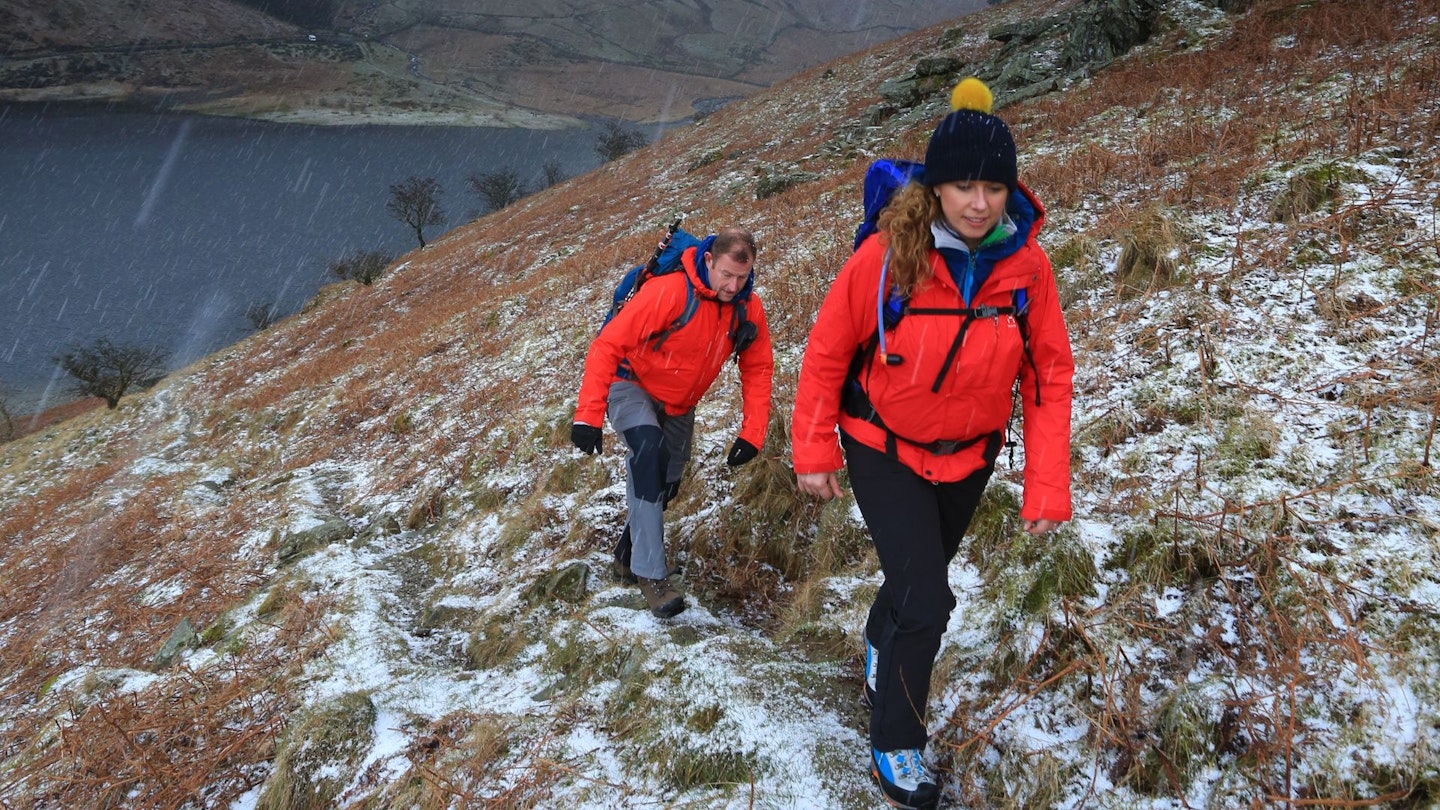
What level of waterproofing does a winter waterproof jacket need to have?
Long story short, 20,00mm HH needs to be a minimum. Winter conditions up the ante for waterproof jackets. In addition to driving rain and snow, your jacket must also cope with the extra pressure applied by a larger winter hiking pack too.
Gore-Tex fabrics have a minimum 28,000mm HH rating. Some brands use alternatives to Gore-Tex or their in-house proprietary membranes in their jackets. Some of these are getting up to 30,00mm HH, which is very impressive.
Does a winter waterproof jacket have to be Gore-Tex?
No. While Gore-Tex is a very reliable go-to technology for waterproof jackets (especially Gore-Tex Pro for winter waterproofs), there are many excellent alternatives. This is demonstrated by our shortlist of top winter waterproof jackets, where fewer than half use Gore-Tex.
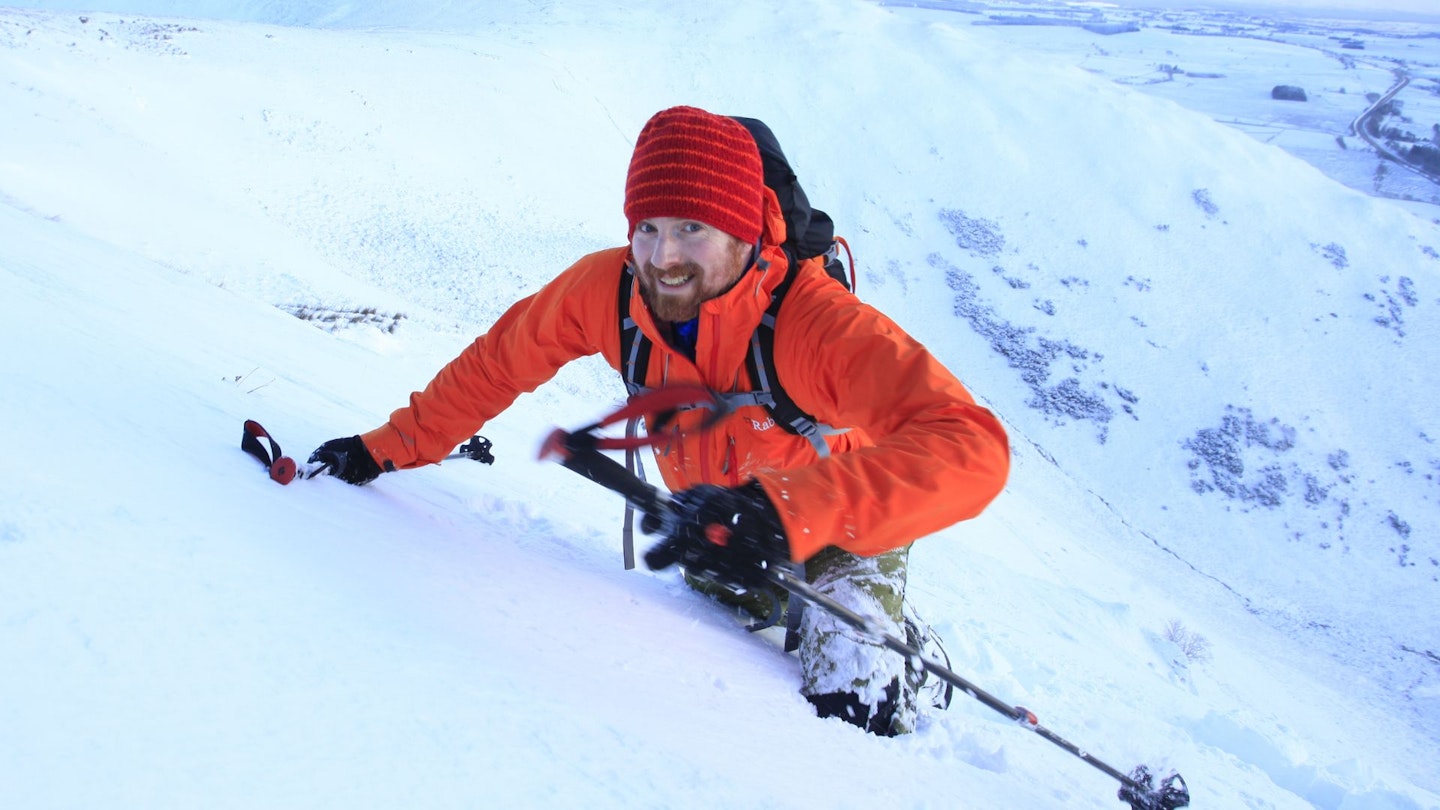
How breathable should a waterproof jacket be?
Waterproof jackets can feel clammy, so breathable fabrics are designed to keep rain out but simultaneously allow sweat to escape. But some waterproof fabrics are more breathable than others/.
Breathability is commonly measured in two ways: an MVTR (moisture vapour transmission rate) in g/m²/24hr, with a higher figure indicating better breathability (20,000g/m²/24hr is considered a premium score); or a RET (resistance to evaporative heat transfer) score, with (confusingly) a lower figure indicating better breathability (a RET value of 0-6 is considered very good).
To help dump excess heat good ventilation is key. Look for underarm/pit zips or torso zips.
How should a winter waterproof jacket fit?
Hardy winter hardshells generally have a more relaxed fit than their summer counterparts to accommodate extra or thicker layers.
But this really is all about personal choice. Some will prefer a tighter, more athletic fit; others will favour a baggier cut with more room for layering underneath.
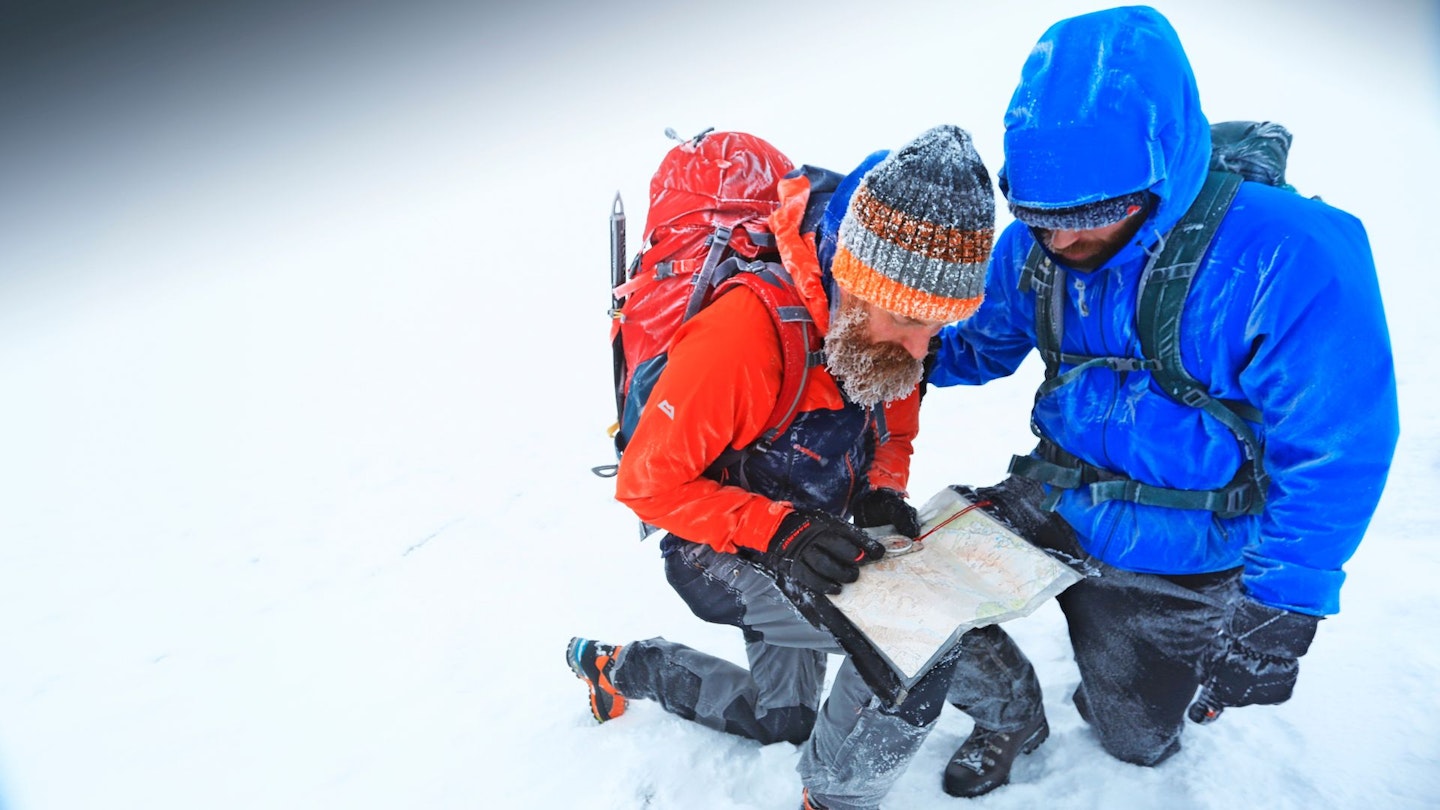
Are winter waterproof jackets heavy?
While ultralight waterproof jackets can weigh under 300g, those designed for harsh winter hikes are tougher, stronger and inevitably weigh more. The weight of a winter hardshell can range from about 500g up to a kilogram with the majority clocking in between 500g and 600g.
Generally speaking, the higher weight indicates the use of more durable and protective materials designed for the worst of conditions.
What construction is best for winter waterproof jackets?
Jackets are generally categorised as 2, 2.5 or 3-layer, depending on how the waterproof layer is attached to other layers. For winter 3-layer jackets are the most durable, with the waterproof layer sandwiched between a face fabric and inner scrim.
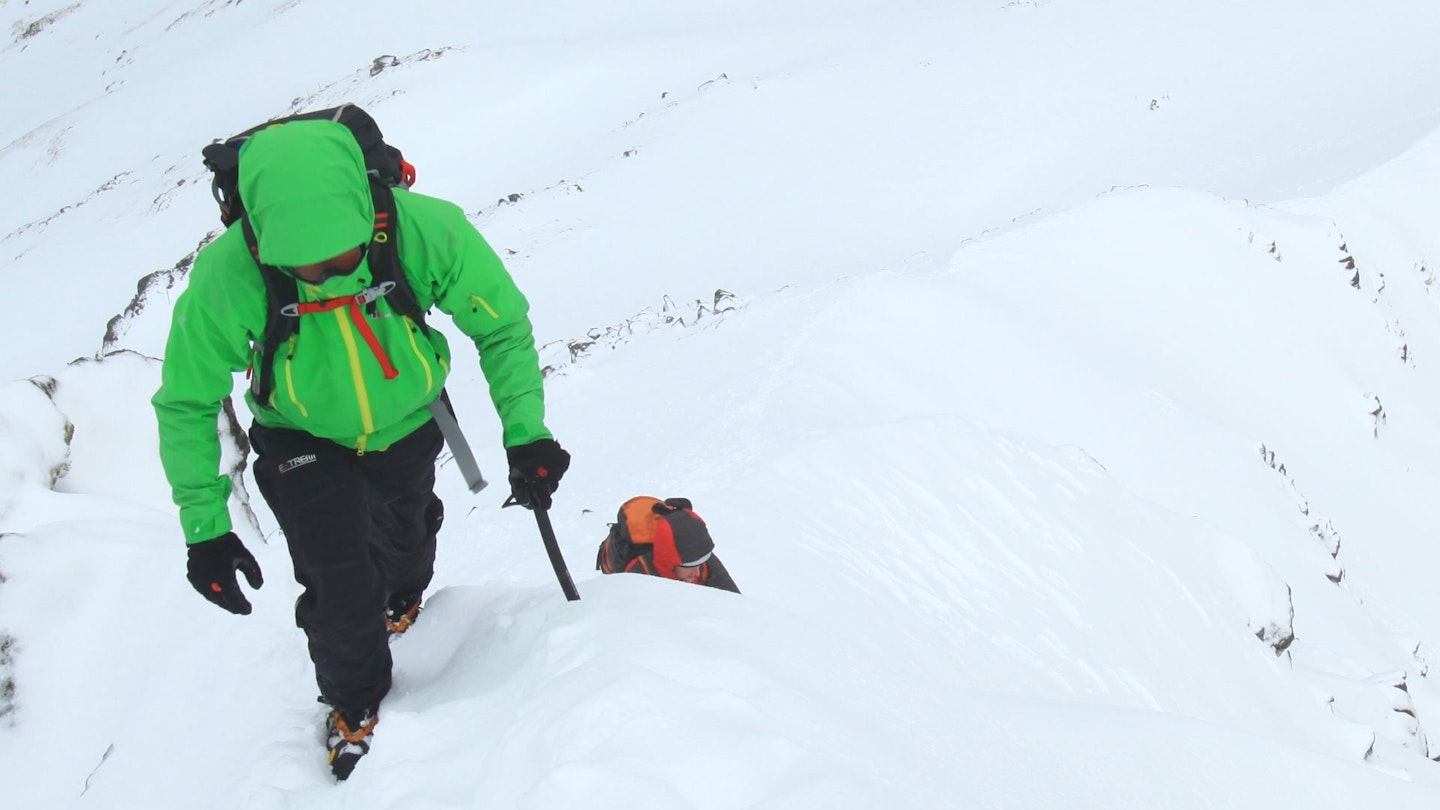
What other features are important?
A good hood should fit snugly and comfortably, but also move easily with the head so you can see where you’re going. Volume adjustment enables a fine-tuned fit, and ideally you want a stiffened brim and wired peak to keep rain off your face.
Adjustable cuffs – sealed with Velcro, or sometimes toggles or clips – are important because they enable a tight, fine-tuned fit around the wrist, preventing rain ingress.
Zips can be a point of weakness liable to water ingress. For maximum waterproofing, choose a jacket with a water-resistant zip protected by a sturdy stormflap.
Ideally you want a jacket that moves and flexes with you, providing unhindered freedom of movement for dynamic mountain activities.
Big pockets are great for storing OS maps, gloves, packs of Jelly Babies and whatever else you intend to put in them. Mesh-lined pockets aid overall ventilation but sealed pockets are more waterproof.
Waterproof jacket care and cleaning
Hiking jackets get a real workout and it doesn't take long for the fabric to get covered in muck and perspiration. A dirty jacket doesn't perform as well as a clean one, and its breathability and water repellency can suffer. Luckily cleaning and reproofing is easy.
Grangers and Nikwax both produce effective water-based, PFC-free gear cleaners and proofers. Used together, they clean waterproof fabrics, restore breathability, and revitalise water repellency.
Regarding waterproof jacket repairs, you’ll be pleased to know that most problems can be fixed. Even if it’s a tear in the waterproof fabric, a growing number of retailers and brands themselves are introducing or expanding their repair services. Make use of them – it's cost effective for you and a very important way to reduce the environmental impact of gear.
Best waterproof clothing cleaner
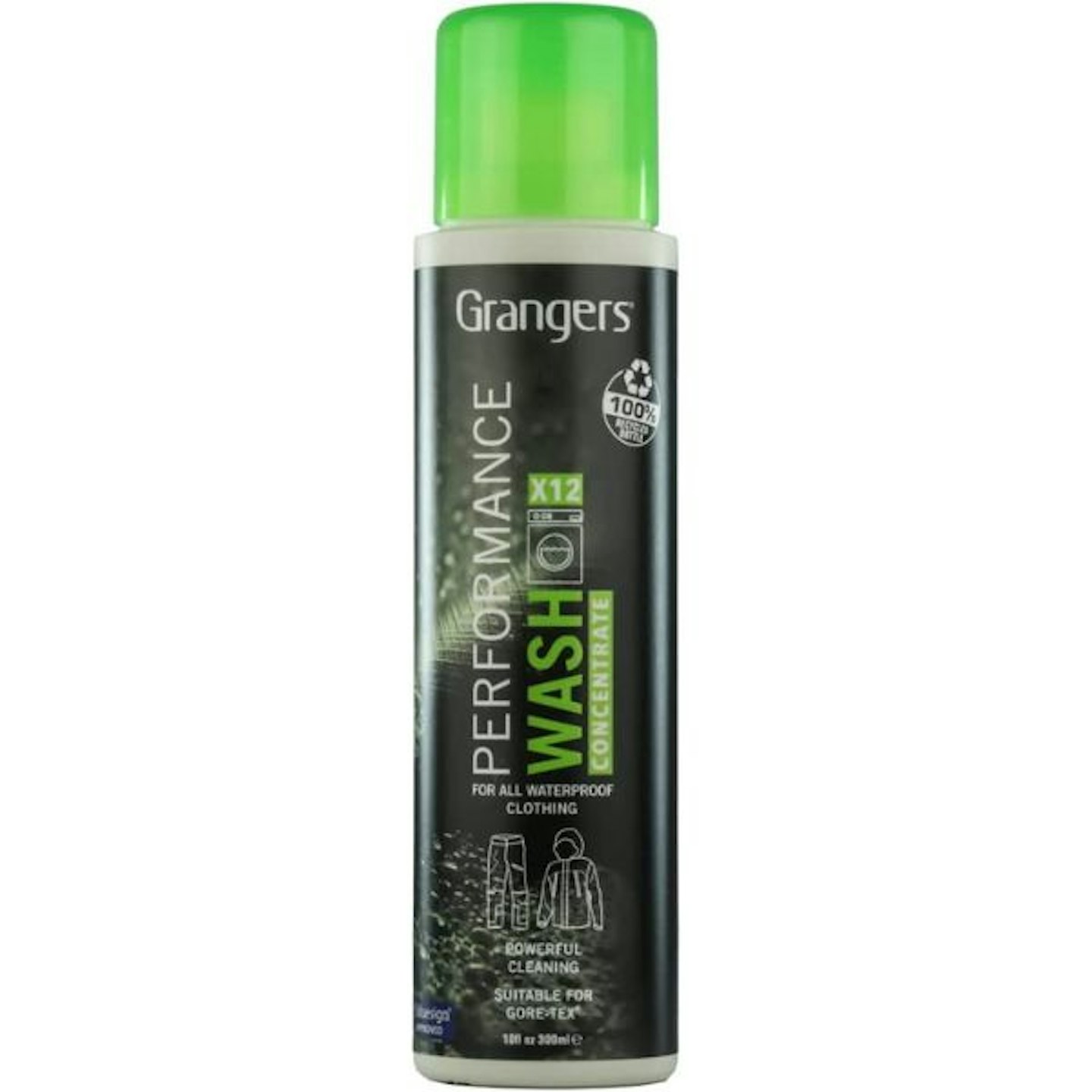
Bluesign approved and PFC-free, this water-based fabric cleaning is ideal for any technical or waterproof fabric, including Gore-Tex. It's highly concentrated too, so a little goes a long way.
Best effective cleaner
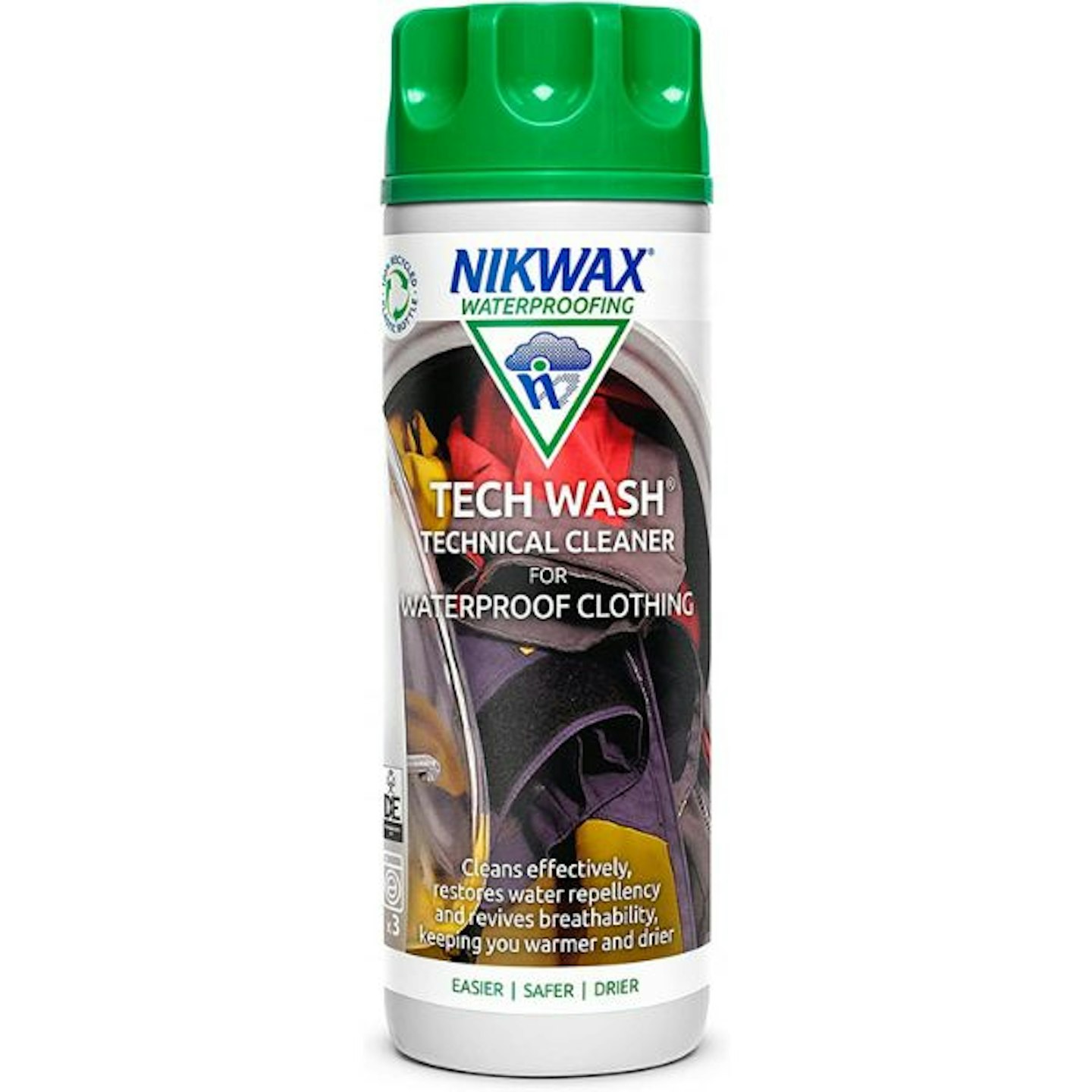
redirect.viglink.com
Like Grangers, this is water-based and PFC-free. It too is a very effective cleaner of outdoor and technical garments. Really, there's nothing separating the effectiveness of Grangers and Nikwax.
Best outdoor clothing care kit
This kit supplies a big one litre volume of Tech Wash and the 300ml bottle of reproofing TX.Direct. With TX.Direct, add it to the washing machine and run a second cycle after cleaning with Tech Wash.
Best easy use care kit
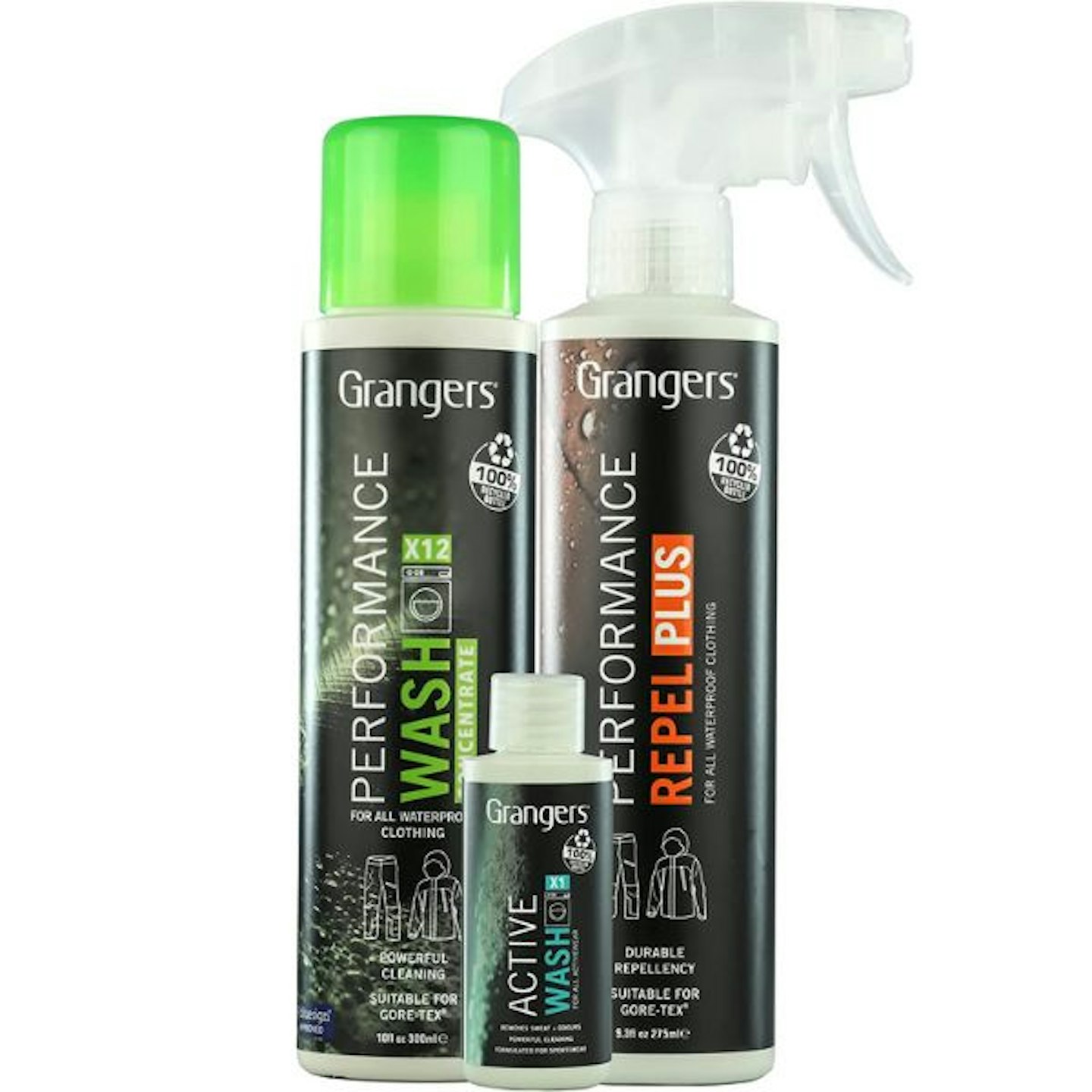
This combo is perfect for cleaning outdoor garments and then adding durable water repellency to waterproof fabrics. The Performance Wash is used like a laundry detergent, while the Repel Plus is a simple spray.
Waterproof ratings explained
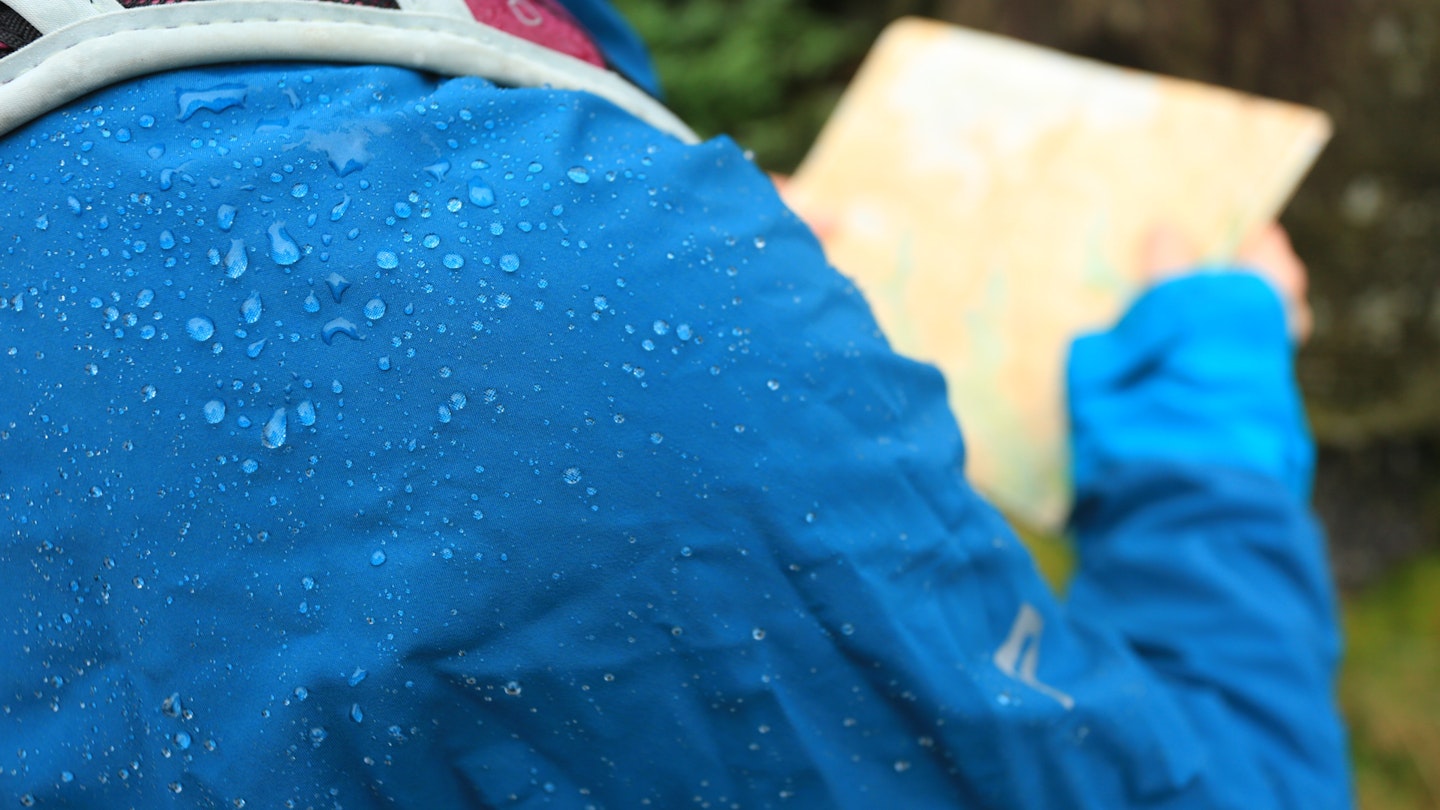
Like fill power with down insulation, waterproof ratings are very simple but widely misunderstood, or not known at all. Hydrostatic head is the industry standard for measuring waterproof fabrics; the waterproof fabrics used for waterproof jackets, tents, and so on.
The hydrostatic head figure given (for example, 10,000mm), indicates how high a column of water sitting on the fabric would need to be before water begins seeping through. It’s perhaps a slightly odd thing, but it’s an effective means of measurement. It’s all to do with pressure. Obviously, testing labs don’t actually use such volumes of water, they use machines that apply equivalent downward pressure. Thus, a waterproof jacket with a hydrostatic head rating of 15,000mm for example, can withstand a 15-metre column of water before it leaks through.
Winter waterproof jackets should have a hydrostatic head of at least 20,000mm. It's not only more intense wet conditions they have to deal with, but the pressure from bigger, heavier winter packs.
Zips and seams are usual weak points in a jackets waterproofing. To combat this, some waterproof jackets have waterproof zips (or fabric cover flaps) and taped seams. Keep an eye out for these features when shopping around.
